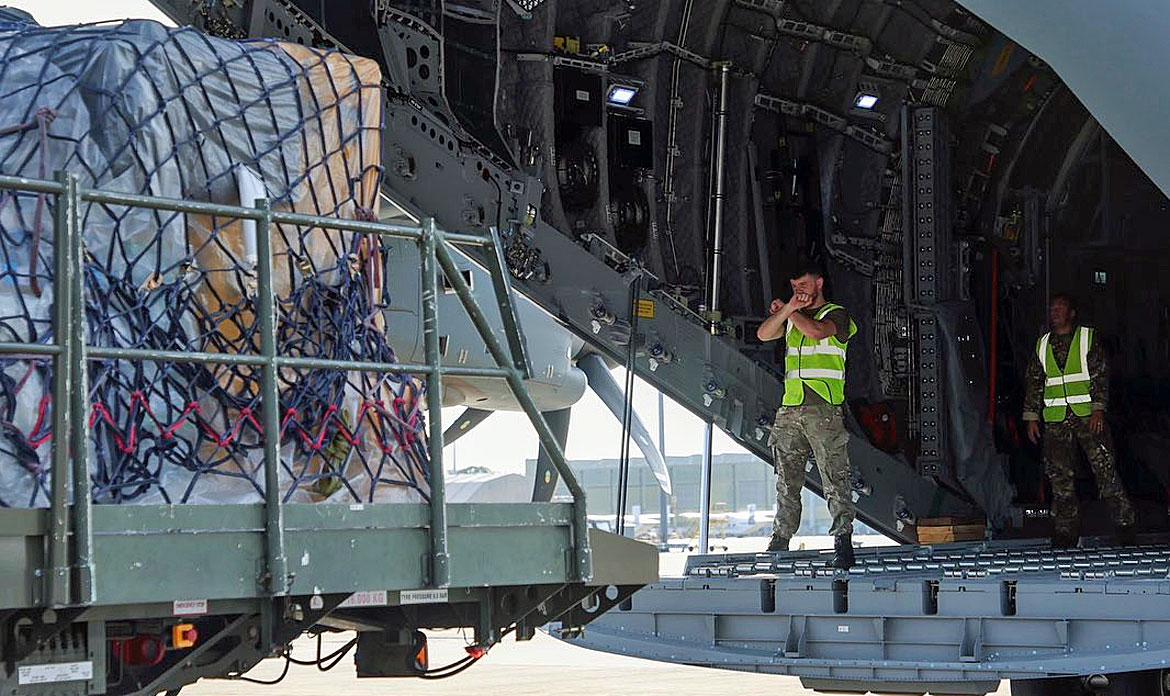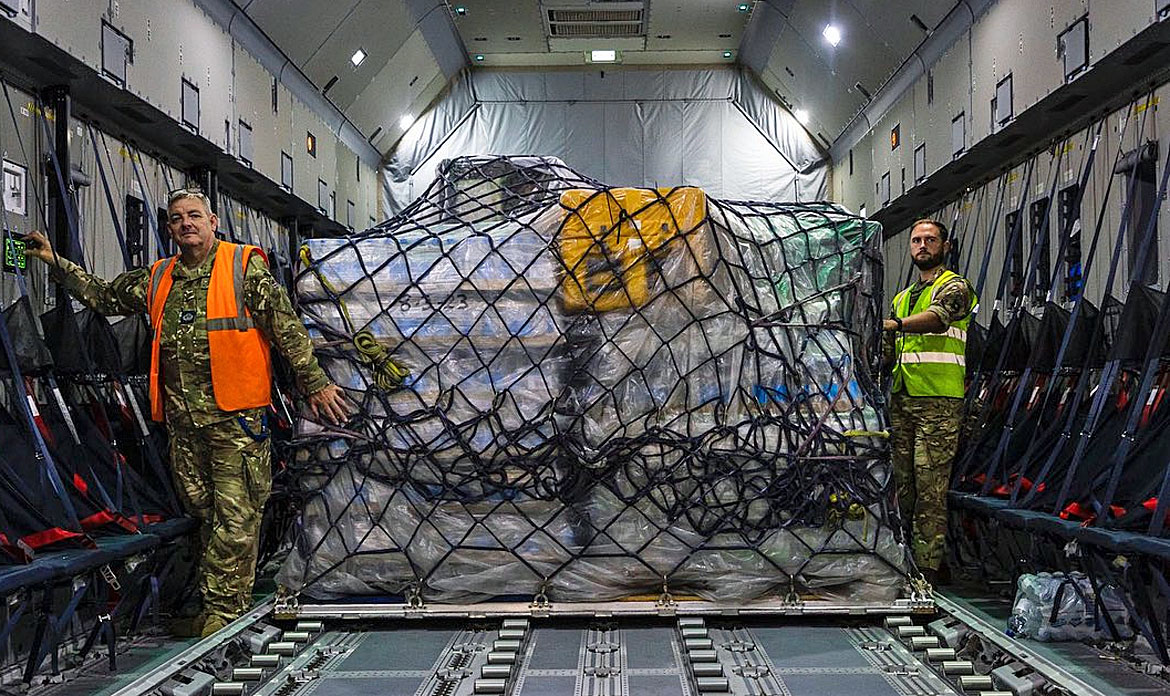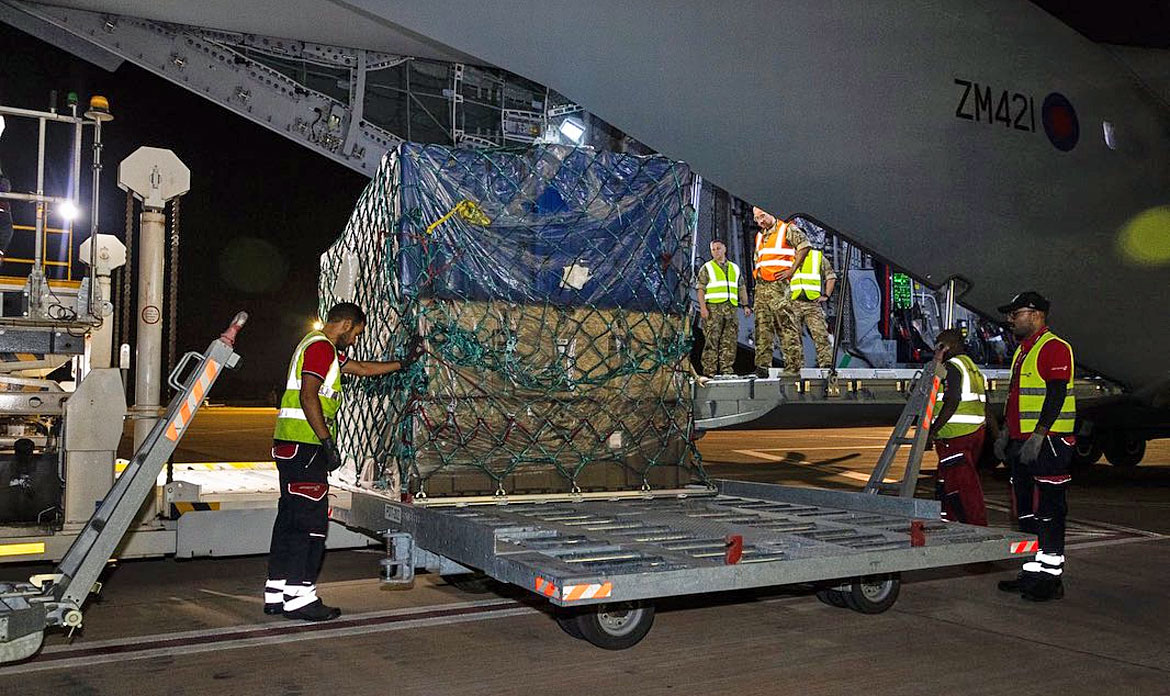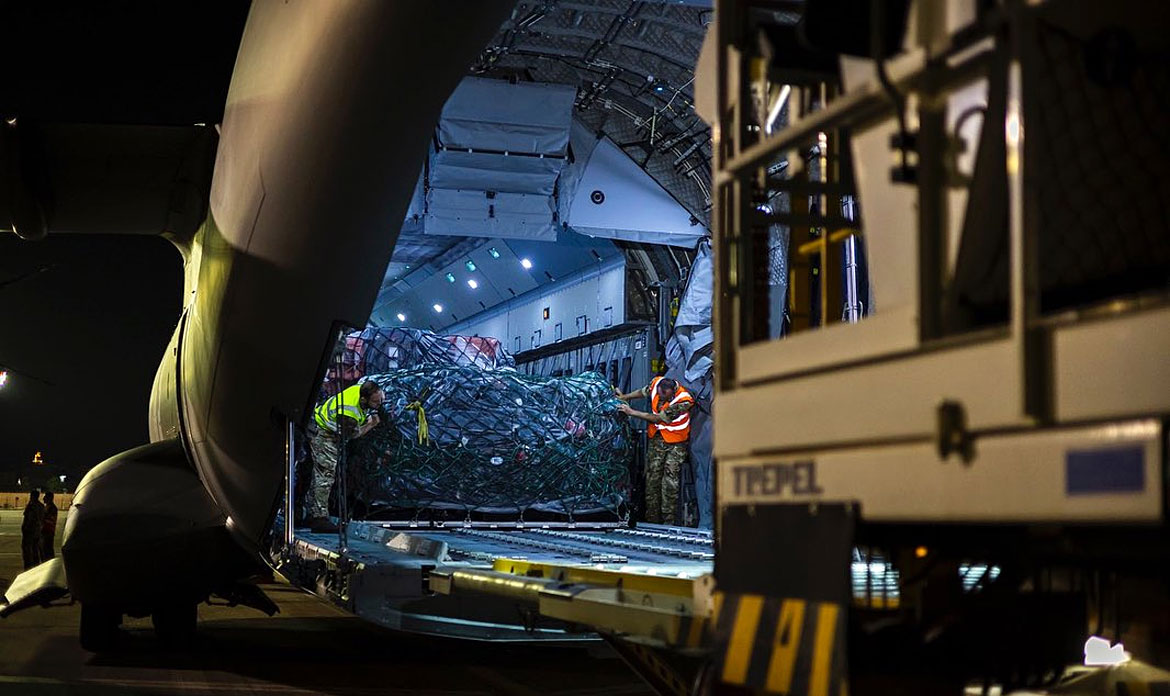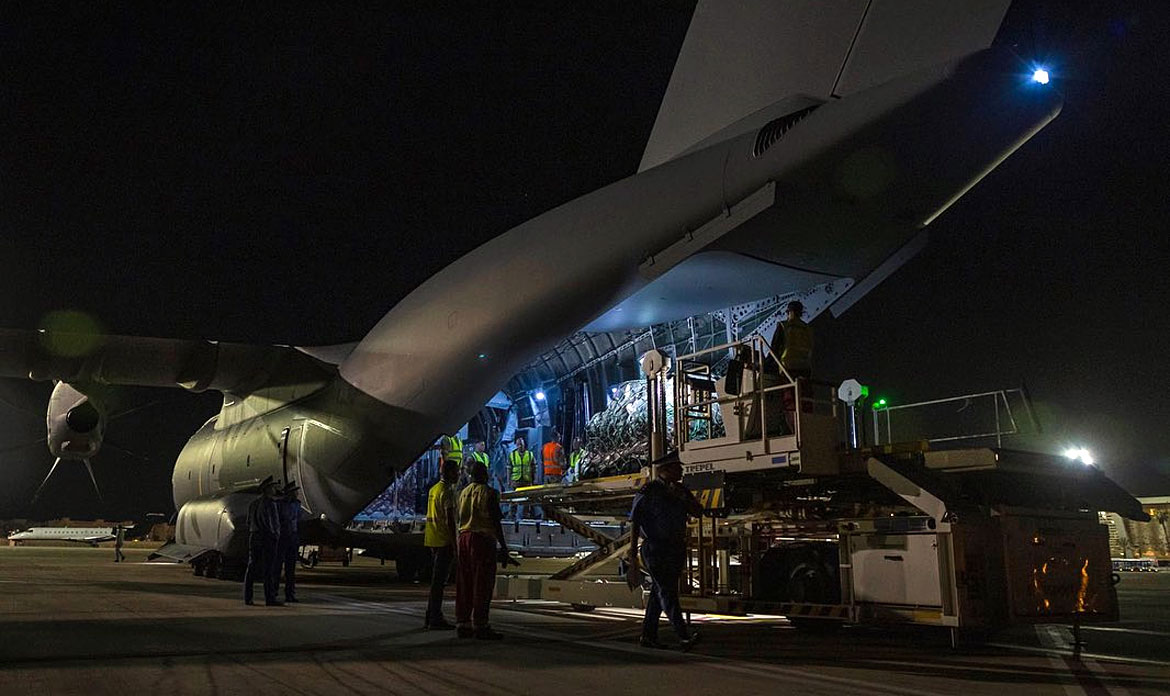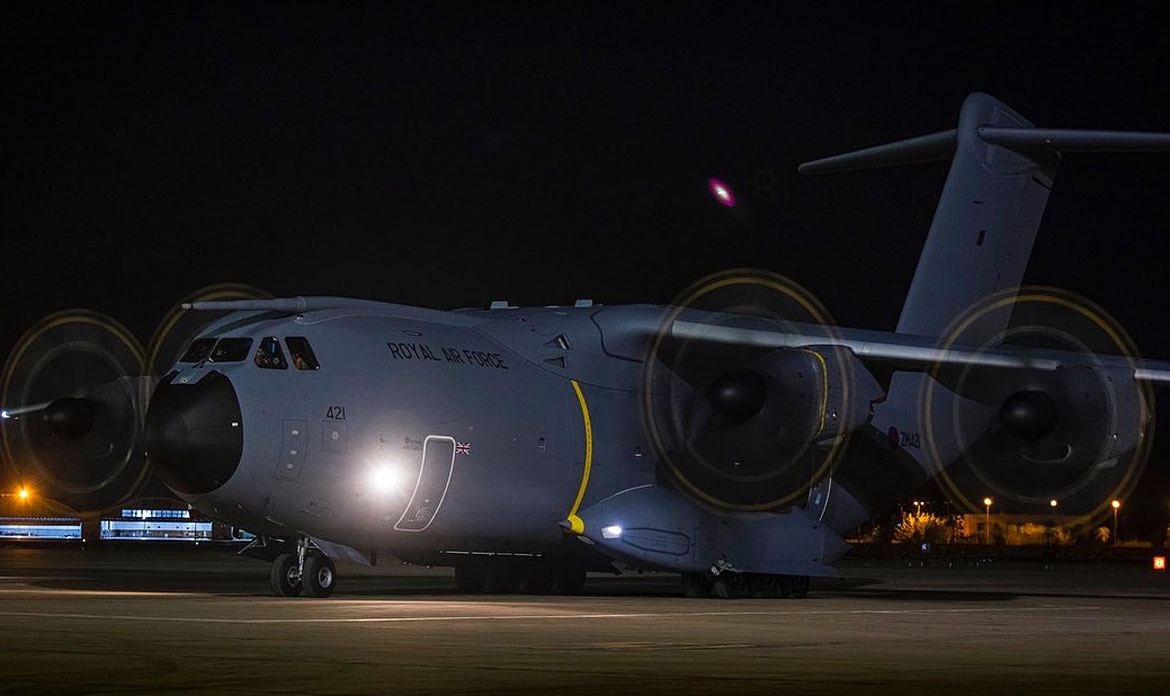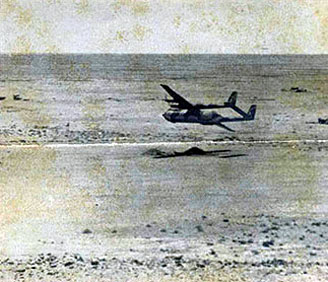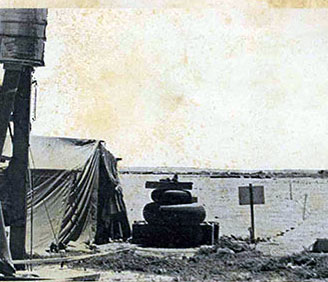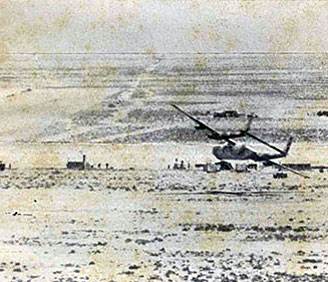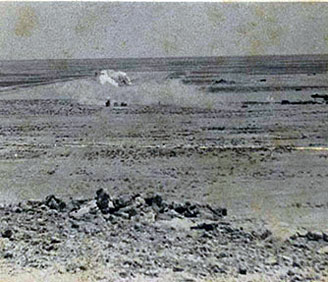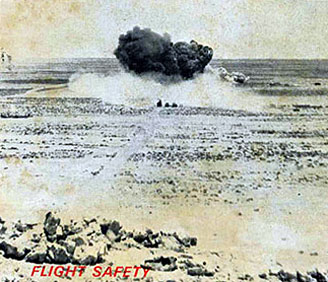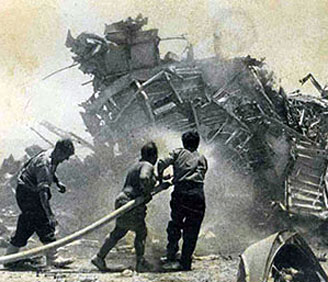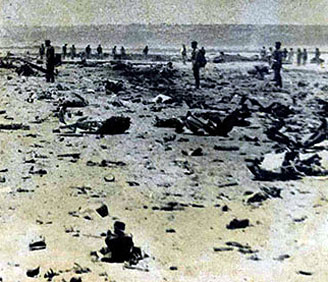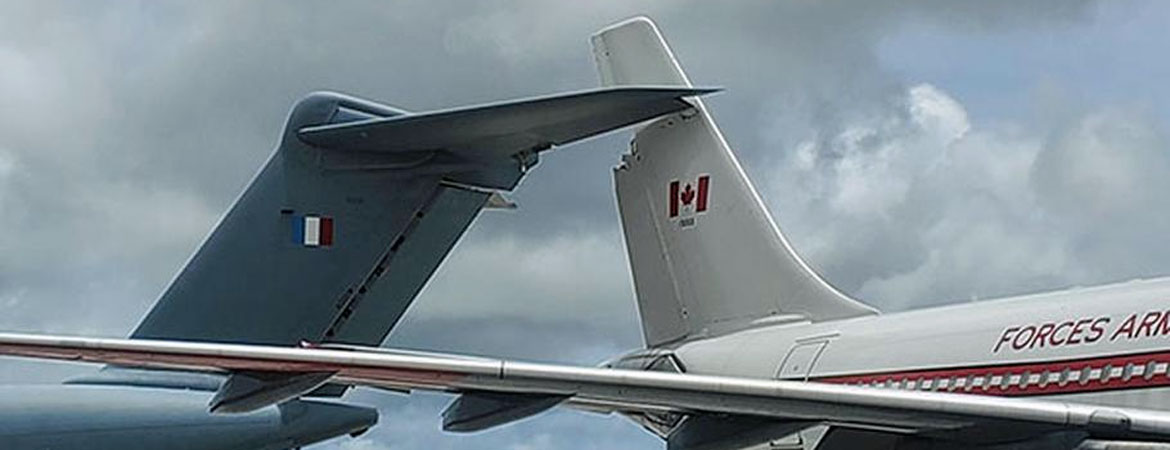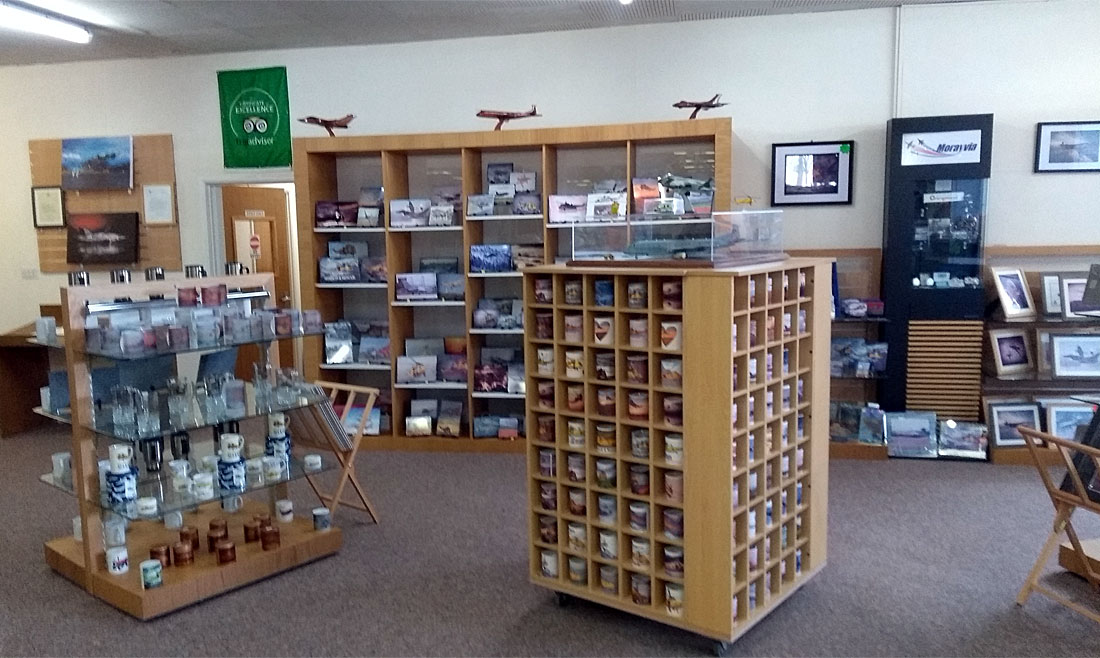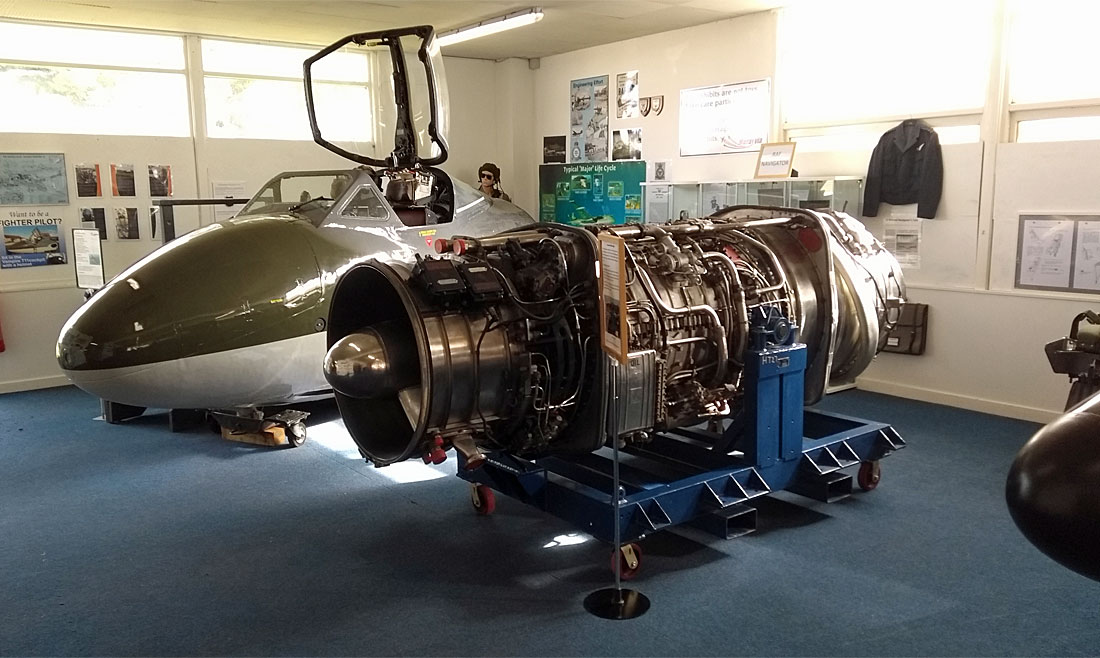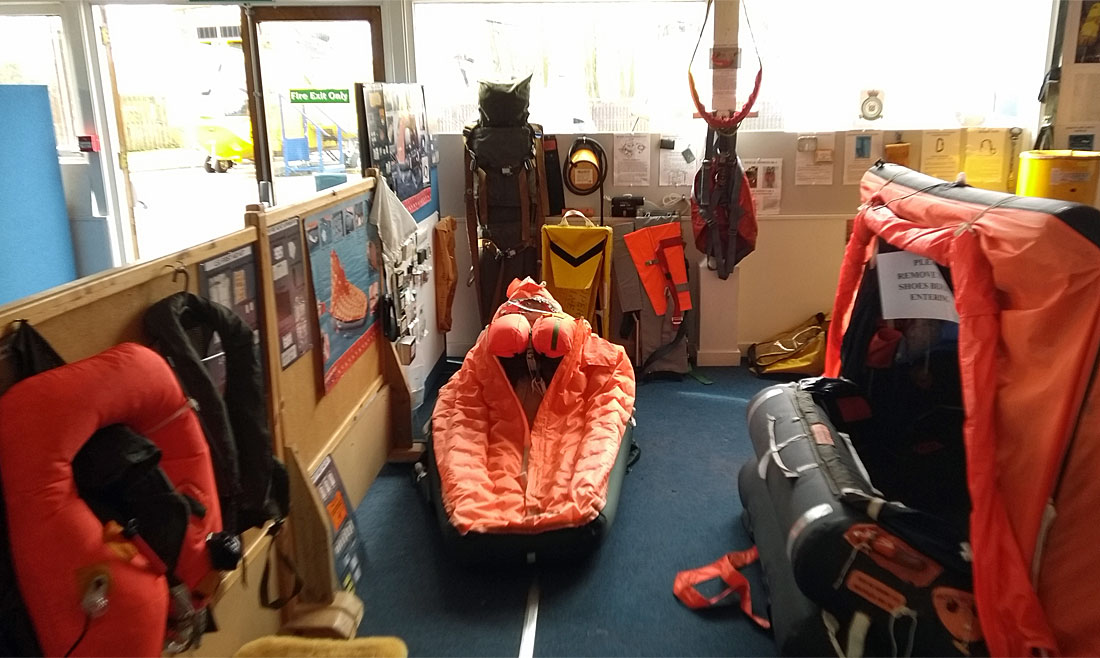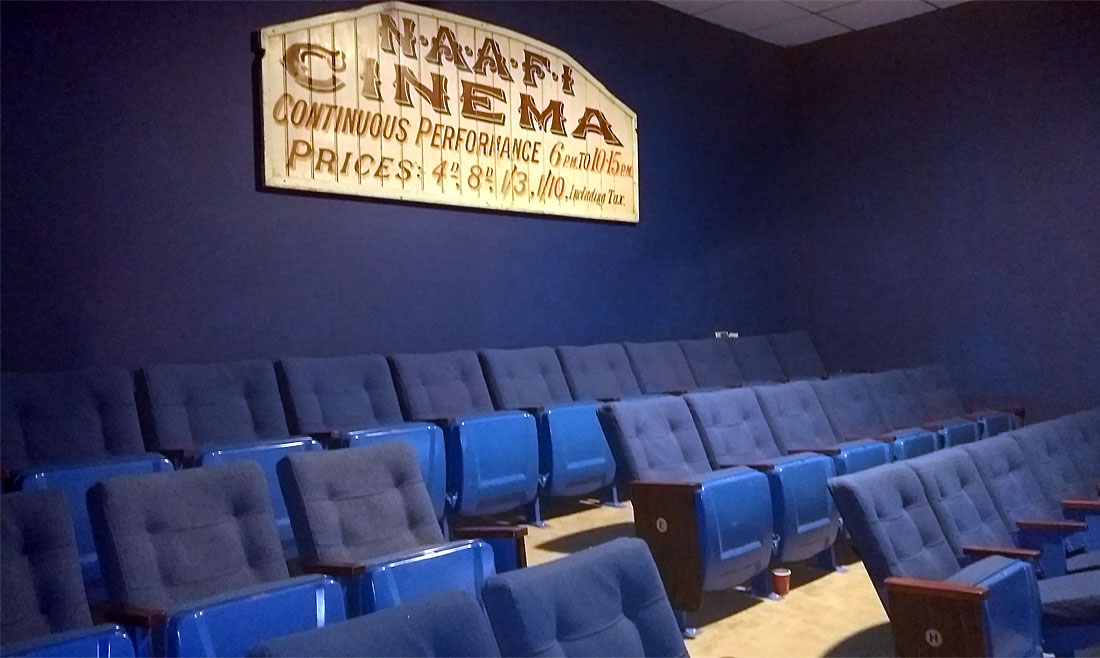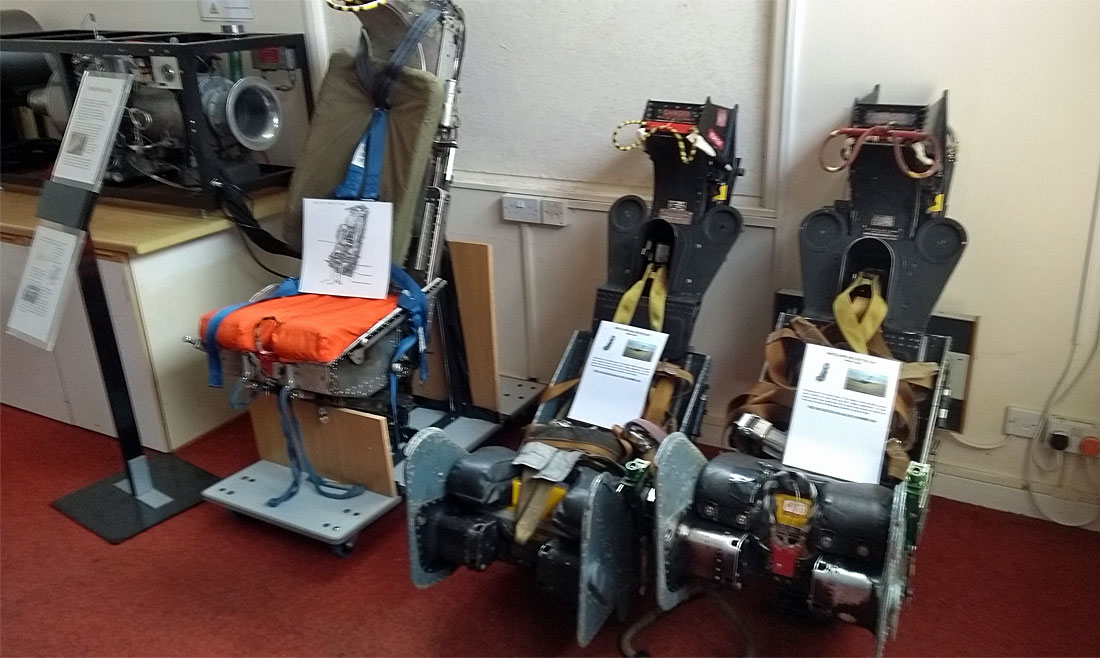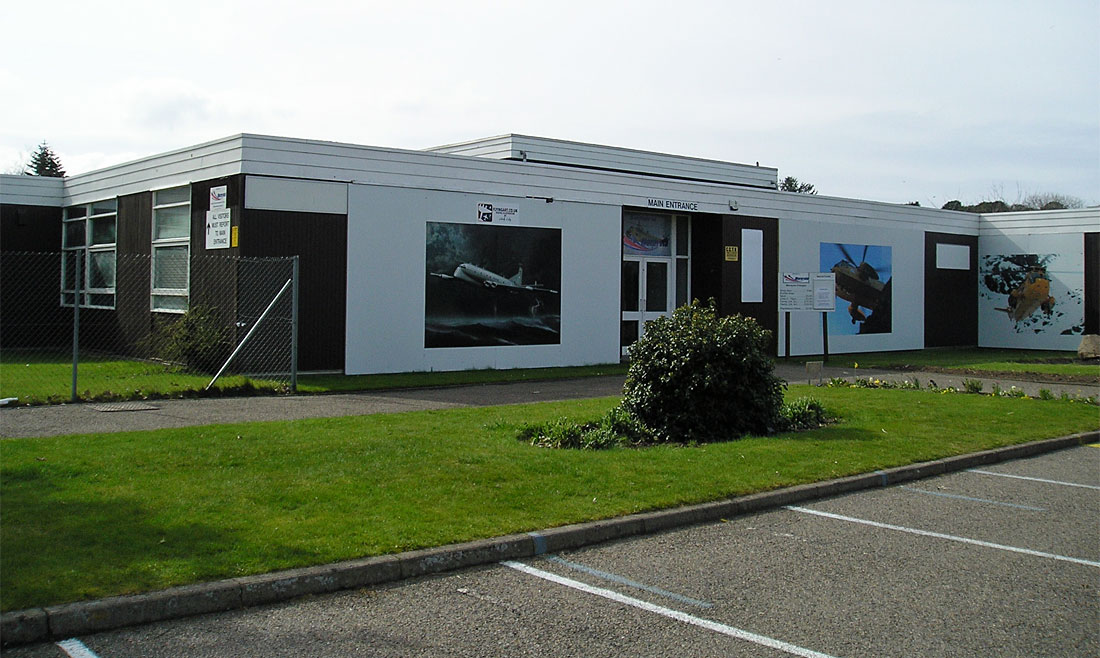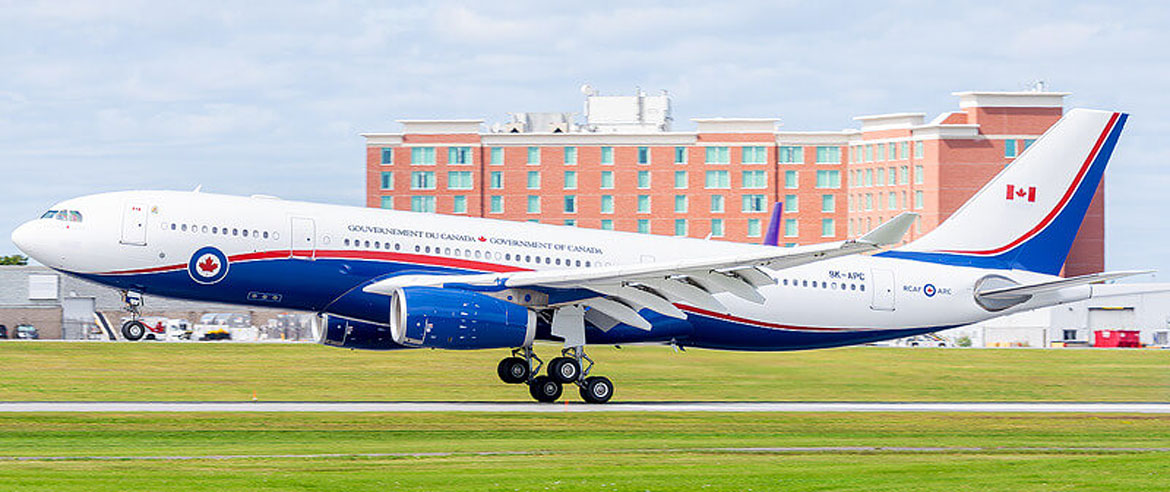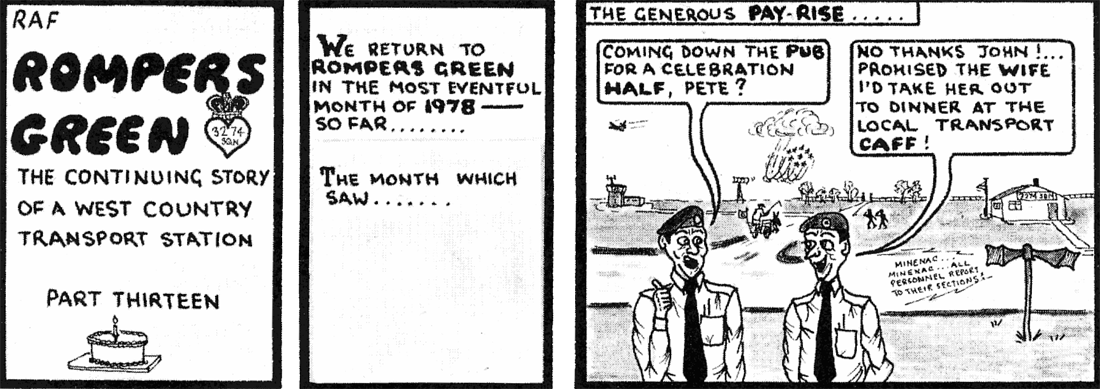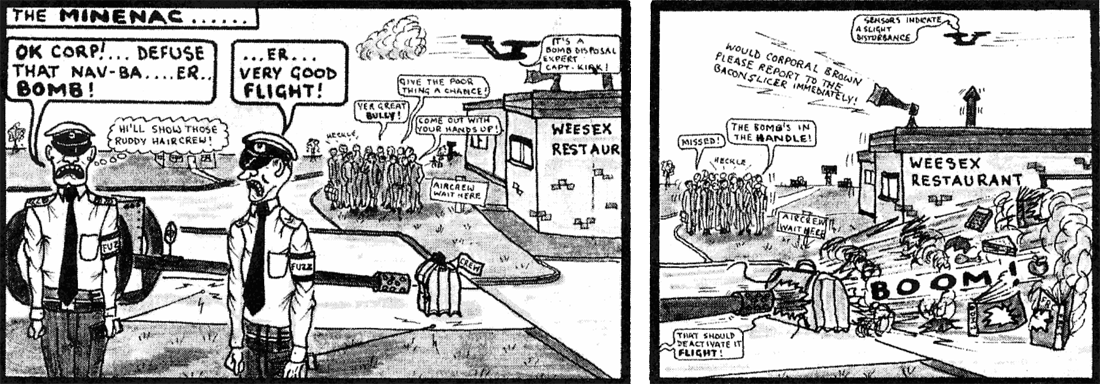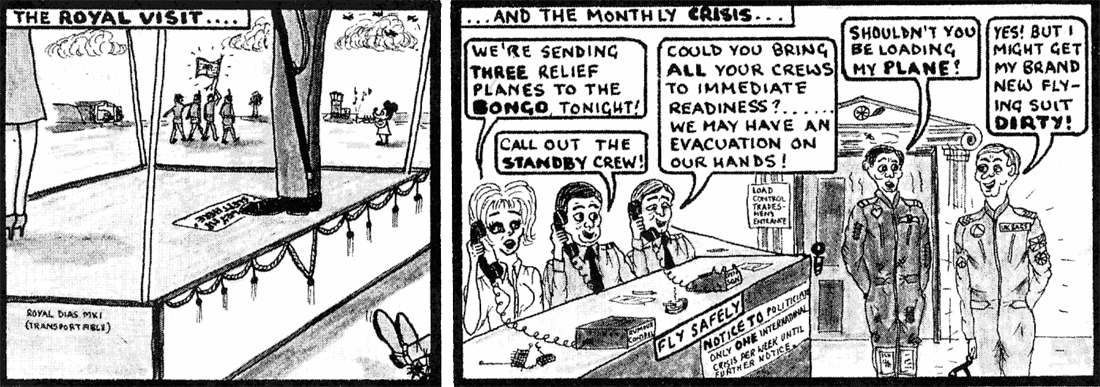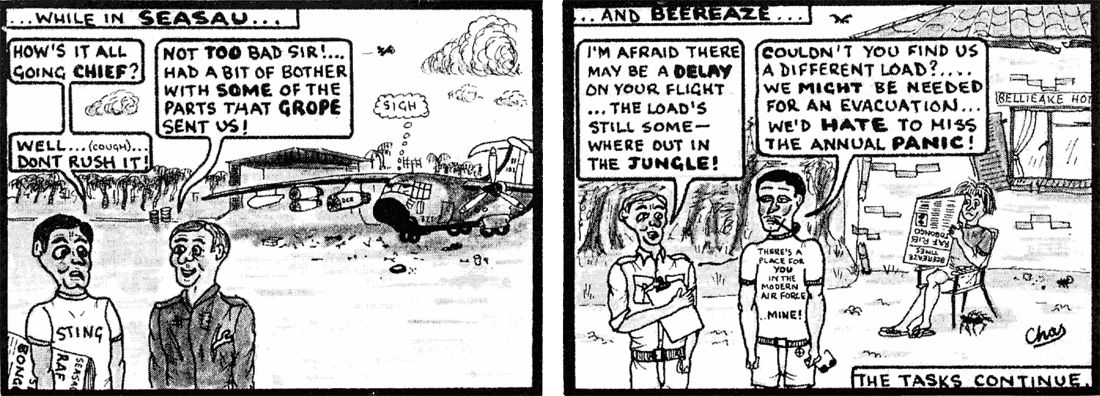



RAF flies UK teams to Morocco following devastating earthquake
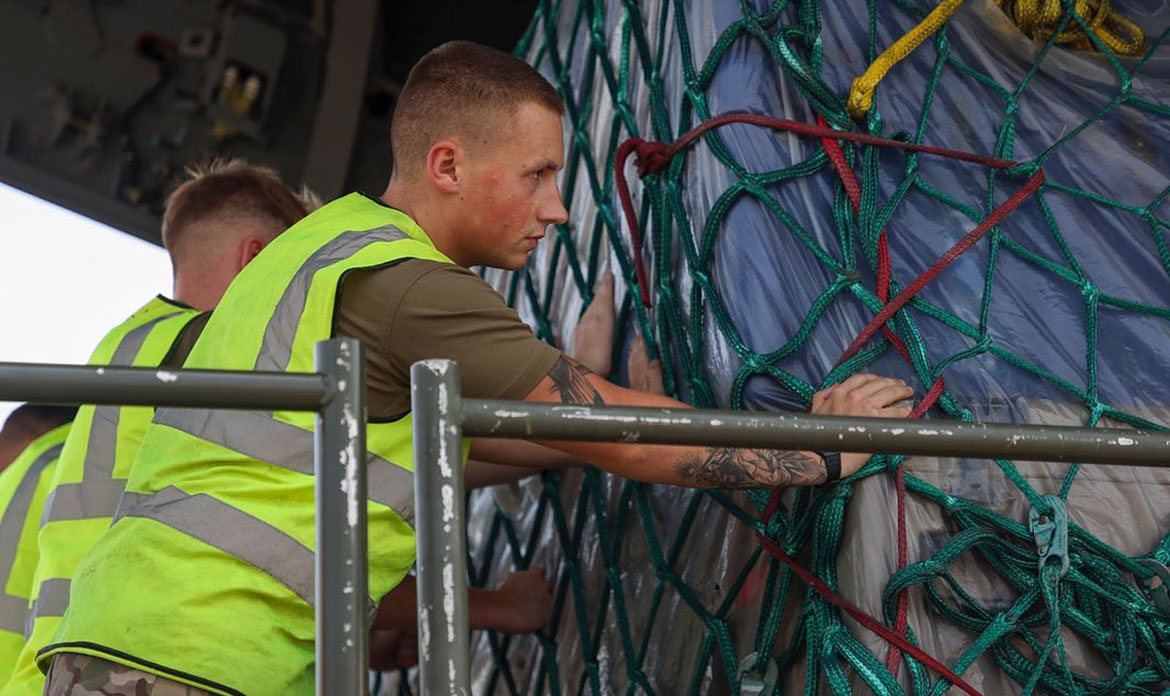
The UKMAMS Immediate Readiness Team have been deployed to support the UK’s response following the 6.8 magnitude earthquake in Morocco. The “R0” team are ready to deploy anywhere in the world at a moment’s notice and have been used this year alone in support of the earthquake in Turkey and evacuating British nationals from civil unrest in Sudan. The team photographed are delivering aid and support equipment for the search and rescue teams.
UK search and rescue specialists have been flown to Morocco by two RAF A400M Atlas aircraft following the earthquake in which more than 2,000 people are known to have been killed. Those deployed include 60 search and rescue specialists, a medical assessment team, four search dogs and rescue equipment. The aircraft departed from RAF Brize Norton. The A400M Atlas has the ability to carry 37 tonnes over 2,000 miles, which enables it to transport the teams to Marrakech without refuelling.
Defence Secretary Grant Shapps said: "This is a devastating time for the people of Morocco, particularly those with loved ones they have lost or are missing. The UK has taken a leading role in the international effort to enhance search and rescue operations, moving quickly to deploy our unique strategic airlift capabilities, expert personnel and aid. We stand firmly by Morocco as they get through this terrible event."
The UK International Search and Rescue team (UKISAR) respond to disasters on behalf of the Foreign, Commonwealth and Development Office. It has specialist search equipment including seismic listening devices, concrete-cutting and breaking equipment, propping and shoring tools. The specialist kit gives the team the capacity to lift, cut and remove concrete and rubble to reach people under collapsed buildings.
The UK Emergency Medical Team's (EMT) four-person British medical assessment team is assessing the situation on the ground and coordinating with Moroccan authorities.
More than 2,000 people were killed in the earthquake that struck the North African country on Friday, with the toll expected to rise as rescuers eventually manage to get through to hard-to-reach areas. A number of people have been trapped under the rubble, with rescue teams and residents working hard to recover them, some reportedly using their bare hands.
UKMAMS/forces.net
UK search and rescue specialists have been flown to Morocco by two RAF A400M Atlas aircraft following the earthquake in which more than 2,000 people are known to have been killed. Those deployed include 60 search and rescue specialists, a medical assessment team, four search dogs and rescue equipment. The aircraft departed from RAF Brize Norton. The A400M Atlas has the ability to carry 37 tonnes over 2,000 miles, which enables it to transport the teams to Marrakech without refuelling.
Defence Secretary Grant Shapps said: "This is a devastating time for the people of Morocco, particularly those with loved ones they have lost or are missing. The UK has taken a leading role in the international effort to enhance search and rescue operations, moving quickly to deploy our unique strategic airlift capabilities, expert personnel and aid. We stand firmly by Morocco as they get through this terrible event."
The UK International Search and Rescue team (UKISAR) respond to disasters on behalf of the Foreign, Commonwealth and Development Office. It has specialist search equipment including seismic listening devices, concrete-cutting and breaking equipment, propping and shoring tools. The specialist kit gives the team the capacity to lift, cut and remove concrete and rubble to reach people under collapsed buildings.
The UK Emergency Medical Team's (EMT) four-person British medical assessment team is assessing the situation on the ground and coordinating with Moroccan authorities.
More than 2,000 people were killed in the earthquake that struck the North African country on Friday, with the toll expected to rise as rescuers eventually manage to get through to hard-to-reach areas. A number of people have been trapped under the rubble, with rescue teams and residents working hard to recover them, some reportedly using their bare hands.
UKMAMS/forces.net

From: Mick Craner, Yeovil, Somerset
Subject: Exercise Crayon
Hello Tony,
A lot has been said in recent Old Bods Briefs about the loss of an Argosy at Got-El-Afrag during Exercise Crayon. The exercise started at Lyneham on 24th April and lasted until 9th May 1968. Five Hercules each with 62 paratroops set off to RAF Luqa in Malta. The idea was to formate over Luqa and fly in formation to drop troops at Afrag. The wind was too strong and all troops were air landed at El Adem (chaos!). I was informed by a senior officer that El Adem was “The land of instant bugger all”.
I may have told you before that on our first landing at Afrag, a figure emerged from the huge dust cloud, well wrapped in an officers' rain coat, hat pulled down firmly and wearing big goggles. I said, "Bugger me, it's Rommel!"
The figure replied, “No, its Frank Murray!” Frank was a Flt Lt Mover at Changi the same time as me. As well as being a perfect gentleman, he was of great help to me while I was flying on 48 Sqn Hastings.
Arriving at Afrag from Akrotiri, we had on board a case of Pantelimon white wine; I gave a bottle to Frank to have with his evening meal. Frank came to see us off, I asked if the wine was in the cooler. He said, “No, it's in here!" while rubbing his tum.
From my experience, some pilots who flew single seaters before becoming transport captains, usually after a supply or para drop, would "beat up the drop zone" at low level with complete disregard for crew members and pax down the back of the aircraft. It happened to me and two Army despatchers. After a supply drop, the captain decided to beat up the drop zone and the three of us finished up in a bruised heap halfway up the ramp on the Herc. It was fortunate that we had closed the ramp and door.
Subject: Exercise Crayon
Hello Tony,
A lot has been said in recent Old Bods Briefs about the loss of an Argosy at Got-El-Afrag during Exercise Crayon. The exercise started at Lyneham on 24th April and lasted until 9th May 1968. Five Hercules each with 62 paratroops set off to RAF Luqa in Malta. The idea was to formate over Luqa and fly in formation to drop troops at Afrag. The wind was too strong and all troops were air landed at El Adem (chaos!). I was informed by a senior officer that El Adem was “The land of instant bugger all”.
I may have told you before that on our first landing at Afrag, a figure emerged from the huge dust cloud, well wrapped in an officers' rain coat, hat pulled down firmly and wearing big goggles. I said, "Bugger me, it's Rommel!"
The figure replied, “No, its Frank Murray!” Frank was a Flt Lt Mover at Changi the same time as me. As well as being a perfect gentleman, he was of great help to me while I was flying on 48 Sqn Hastings.
Arriving at Afrag from Akrotiri, we had on board a case of Pantelimon white wine; I gave a bottle to Frank to have with his evening meal. Frank came to see us off, I asked if the wine was in the cooler. He said, “No, it's in here!" while rubbing his tum.
From my experience, some pilots who flew single seaters before becoming transport captains, usually after a supply or para drop, would "beat up the drop zone" at low level with complete disregard for crew members and pax down the back of the aircraft. It happened to me and two Army despatchers. After a supply drop, the captain decided to beat up the drop zone and the three of us finished up in a bruised heap halfway up the ramp on the Herc. It was fortunate that we had closed the ramp and door.
At Afrag, the troops had erected a 45 gallon drum on a wooden stand about 12 feet high, this was to provide water for showers. The Argosy had a mixed cargo and did a supply drop on the airfield. The captain did a beat up and collided with the 45 gallon drum. The aircraft crashed with the total loss of crew and army despatchers.
Later on I took a look at the crash site and saw a piece of aircraft floor with the chassis of a Land Rover secured to it, but no engine or gear box. I often wondered if a large piece of cargo would collapse within its lashing scheme, especially a large wooden box with a heavy engine bolted to the base.
Cheers Tony, take care.
Mick Craner - 91 years of Grump!
Later on I took a look at the crash site and saw a piece of aircraft floor with the chassis of a Land Rover secured to it, but no engine or gear box. I often wondered if a large piece of cargo would collapse within its lashing scheme, especially a large wooden box with a heavy engine bolted to the base.
Cheers Tony, take care.
Mick Craner - 91 years of Grump!
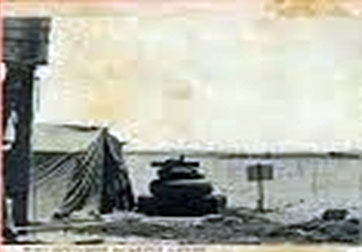
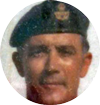
From: Gerry Davis, Bedminster, Glos
Subject: Got Al Afrag
Hi Tony,
Regarding Got Al Afrag and the Argosy crash… here’s an extract from my book, “Flying on the Ground” which might be of interest to readers:
Another Libyan Desert air strip that I spent time at during 1965/68 was called ‘Got Al Afrag’ situated on the North Libyan Mediterranean coast. A flattened site, amazingly close to the sea, which I believe was especially prepared for this exercise. Which, I understand carried on for several months, after I left. I have looked several times on Google Earth for its exact location, but I think that the Desert may have reclaimed it back, or its name has been changed, or indeed something else! The aircraft, that I recall which were involved in this adventure were Beverley’s and Argosy’s. It was a war game, involving Paratroopers being dropped to capture the airfield and The RAF regiment and other Army troops defending.
Accommodation, of course was tents; we were supposed to dig trenches for when we were being attacked by aircraft or by paratroopers, but because of the amazingly hard ground all that was done was to place two-inch white lashing tape to mark out where they would have been dug out. When an attack took place, we had to down tools, as it were, and stand in between the tapes. Whenever an aircraft took off or landed the sand that was thrown up obliterated the whole area covering everything and everybody with sand and grit. On the few occasions that we had a stand down, we sat in the sea to cool off, the clouds of sand whipped up from the aircraft still managed to reach us. Bathing in the sea, amazingly you would still be sweating.
We were issued with bars of special soap, which was supposed to assist us in personal hygiene and for doing our laundry with. It was like scrubbing yourself with a stone. Way out there in what could be described as ‘No man’s Land’ we had Arab visitors, trying to sell eggs! It truly is amazing how they would suddenly appear from nowhere in this way-out place.
This exercise has a place in RAF history, because one of our aircraft crashed there. This was on 7th May 1968. I as part of the NEAF MAMS team had already departed back to our base at Akrotiri as I was nearing my Cyprus MAMS tourex date. It was an Argosy XR 133. What happened was that the aircraft was departing for El Adem, with an empty freight bay; save for six army paratroopers, and a crew of five, total soles on board eleven.
An enterprising Army sergeant had built a shower cubicle, well actually a large heavy erect wooden lamp-post type pole supported by another pole, with a 45-gallon drum secured at its top. I understand that a pump was arranged to replenish the sea water. He had assembled them to one side of the end of the runway at a height no bigger than twelve feet; so, after releasing a valve it gave a shower of sea water.
The Argosy aircraft captain took off rather sharpish and banked steeply at a very low height, in doing so his wing tip hit the drum and the aircraft cartwheeled, bursting into a massive fire ball killing all on board and destroying the aircraft aircrew and passengers.
Stay safe,
Gerry
Subject: Got Al Afrag
Hi Tony,
Regarding Got Al Afrag and the Argosy crash… here’s an extract from my book, “Flying on the Ground” which might be of interest to readers:
Another Libyan Desert air strip that I spent time at during 1965/68 was called ‘Got Al Afrag’ situated on the North Libyan Mediterranean coast. A flattened site, amazingly close to the sea, which I believe was especially prepared for this exercise. Which, I understand carried on for several months, after I left. I have looked several times on Google Earth for its exact location, but I think that the Desert may have reclaimed it back, or its name has been changed, or indeed something else! The aircraft, that I recall which were involved in this adventure were Beverley’s and Argosy’s. It was a war game, involving Paratroopers being dropped to capture the airfield and The RAF regiment and other Army troops defending.
Accommodation, of course was tents; we were supposed to dig trenches for when we were being attacked by aircraft or by paratroopers, but because of the amazingly hard ground all that was done was to place two-inch white lashing tape to mark out where they would have been dug out. When an attack took place, we had to down tools, as it were, and stand in between the tapes. Whenever an aircraft took off or landed the sand that was thrown up obliterated the whole area covering everything and everybody with sand and grit. On the few occasions that we had a stand down, we sat in the sea to cool off, the clouds of sand whipped up from the aircraft still managed to reach us. Bathing in the sea, amazingly you would still be sweating.
We were issued with bars of special soap, which was supposed to assist us in personal hygiene and for doing our laundry with. It was like scrubbing yourself with a stone. Way out there in what could be described as ‘No man’s Land’ we had Arab visitors, trying to sell eggs! It truly is amazing how they would suddenly appear from nowhere in this way-out place.
This exercise has a place in RAF history, because one of our aircraft crashed there. This was on 7th May 1968. I as part of the NEAF MAMS team had already departed back to our base at Akrotiri as I was nearing my Cyprus MAMS tourex date. It was an Argosy XR 133. What happened was that the aircraft was departing for El Adem, with an empty freight bay; save for six army paratroopers, and a crew of five, total soles on board eleven.
An enterprising Army sergeant had built a shower cubicle, well actually a large heavy erect wooden lamp-post type pole supported by another pole, with a 45-gallon drum secured at its top. I understand that a pump was arranged to replenish the sea water. He had assembled them to one side of the end of the runway at a height no bigger than twelve feet; so, after releasing a valve it gave a shower of sea water.
The Argosy aircraft captain took off rather sharpish and banked steeply at a very low height, in doing so his wing tip hit the drum and the aircraft cartwheeled, bursting into a massive fire ball killing all on board and destroying the aircraft aircrew and passengers.
Stay safe,
Gerry

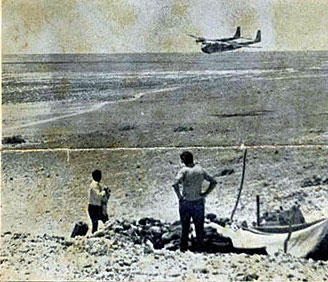
Photos: Bureau of Aircraft Accident Archives

Human error led to ‘serious damage’ to French, Canadian planes in Guam this summer
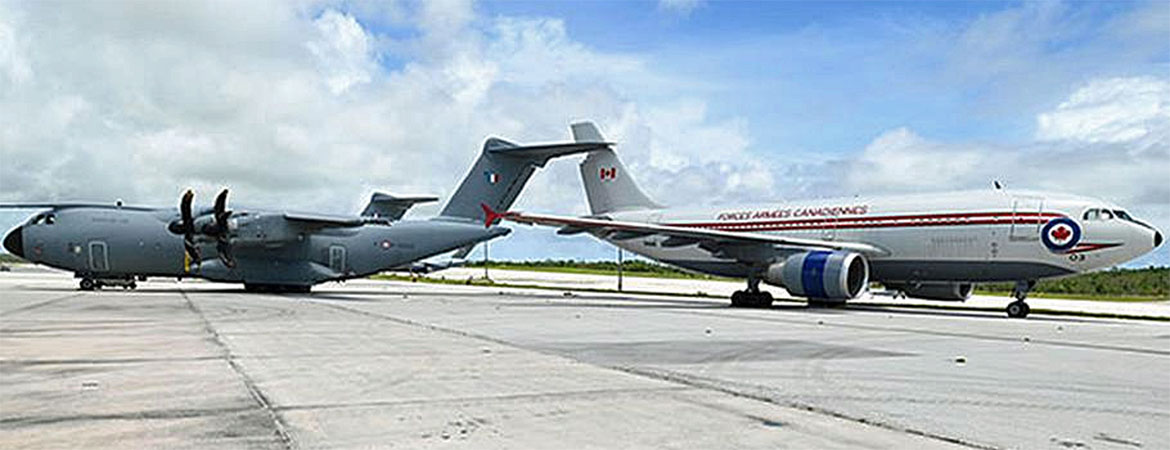
A “partially secured” Canadian airlifter caused significant damage to itself and a French aircraft at Andersen Air Force Base in Guam this summer, a Canadian investigation revealed last week. The two military transport planes, a Canadian Airbus CC-150 Polaris and a French Airbus A400M Atlas, were parked July 22 on an Andersen airstrip when the Canadian plane rolled backwards and the two planes’ tails collided, according to a Sept. 7 report from the Canadian air force.
The investigation revealed no technical issues with the aircraft and is now “focusing on procedures, communications and human factors.” Both aircraft sustained “serious damage,” but no one was injured, the report states. The Canadian aircraft’s crew “partially secured” the plane but failed to place parking chocks on its landing gear, according to the investigation. The plane was carrying equipment and personnel following the conclusion of Exercise Mobility Guardian and arrived July 21 at Andersen from Hickam Air Force Base in Hawaii. Once landed, the aircraft taxied to park next to the French aircraft.
Around 10:30 a.m. the next day, the Polaris, still loaded but with no crew on board, rolled backwards until the right horizontal and vertical stabilizers on its tail collided with the tail of the French aircraft. After impact the Polaris rebounded and came to stop about 26 feet from the initial point of contact.
A similar incident occurred at a Canadian air force base in October 2019, when a Polaris collided with an aircraft tow tractor. In that instance, the aircraft was parked in front of a hangar at Canadian Forces Base Trenton in Ontario when it began to move and collided with the tractor. The aircraft sustained serious damage to its right engine; the force of impact caused one minor injury, according to a June 2020 investigation. The crew had set the parking brake and placed chocks, and the investigation “could not positively determine” why the parking brake didn’t hold the aircraft in position. The investigation found that the chocks used were not the appropriate type, and not all wheels were chocked.
The investigation cited “informal” brakeman training and a lack of emergency procedures as factors in the incident.
Stars and Stripes
The investigation revealed no technical issues with the aircraft and is now “focusing on procedures, communications and human factors.” Both aircraft sustained “serious damage,” but no one was injured, the report states. The Canadian aircraft’s crew “partially secured” the plane but failed to place parking chocks on its landing gear, according to the investigation. The plane was carrying equipment and personnel following the conclusion of Exercise Mobility Guardian and arrived July 21 at Andersen from Hickam Air Force Base in Hawaii. Once landed, the aircraft taxied to park next to the French aircraft.
Around 10:30 a.m. the next day, the Polaris, still loaded but with no crew on board, rolled backwards until the right horizontal and vertical stabilizers on its tail collided with the tail of the French aircraft. After impact the Polaris rebounded and came to stop about 26 feet from the initial point of contact.
A similar incident occurred at a Canadian air force base in October 2019, when a Polaris collided with an aircraft tow tractor. In that instance, the aircraft was parked in front of a hangar at Canadian Forces Base Trenton in Ontario when it began to move and collided with the tractor. The aircraft sustained serious damage to its right engine; the force of impact caused one minor injury, according to a June 2020 investigation. The crew had set the parking brake and placed chocks, and the investigation “could not positively determine” why the parking brake didn’t hold the aircraft in position. The investigation found that the chocks used were not the appropriate type, and not all wheels were chocked.
The investigation cited “informal” brakeman training and a lack of emergency procedures as factors in the incident.
Stars and Stripes

From: Colin Savill, Tuxford, Notts
Subject: Re: Pet Hates
Tony,
In response to Andy Downard's comment last month on the Belfast, one 'joy' springs to mind.
I recall a trip with the Lyneham Movements Squadron before it became UKMAMS (must have been 1973) to Calgary for an army turnaround. We departed Lyneham by RAF coach to Brize and boarded a VC10 to Germany to load troops followed by a refuel at Keflavik (deplaned into a tin shed and wearing KD in a snow storm!! Typical RAF organisation.) then on to Calgary.
On arrival turned around the VC10 followed by another and a pair of Hercs, doing trim sheets on the front steps balanced on your knees, but we were not yet done... Across the airfield stood a Belfast, completely empty but with two Canadian army lorries with full 40 foot trailers backed up to the ramp. With nothing much larger than tool and ammo boxes and the like; it took all night to transfer the cargo, we must have walked miles!!
From leaving Lyneham at 6 am the previous day we arrived at the hotel in time for breakfast the following morning!
Colin Savill
Subject: Re: Pet Hates
Tony,
In response to Andy Downard's comment last month on the Belfast, one 'joy' springs to mind.
I recall a trip with the Lyneham Movements Squadron before it became UKMAMS (must have been 1973) to Calgary for an army turnaround. We departed Lyneham by RAF coach to Brize and boarded a VC10 to Germany to load troops followed by a refuel at Keflavik (deplaned into a tin shed and wearing KD in a snow storm!! Typical RAF organisation.) then on to Calgary.
On arrival turned around the VC10 followed by another and a pair of Hercs, doing trim sheets on the front steps balanced on your knees, but we were not yet done... Across the airfield stood a Belfast, completely empty but with two Canadian army lorries with full 40 foot trailers backed up to the ramp. With nothing much larger than tool and ammo boxes and the like; it took all night to transfer the cargo, we must have walked miles!!
From leaving Lyneham at 6 am the previous day we arrived at the hotel in time for breakfast the following morning!
Colin Savill
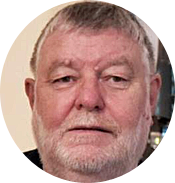

From: Ian Place, Leeds, West Yorks
Subject: Re: UKMAMS OBA OBB #083123
Tony,
Reference the recent item concerning driving tasks. It reminded me of Exercise Best Fare when H team had to drive 440 miles from RAF Lyneham in Wiltshire to RAF Leuchars, Fife and Flt Lt Gerry Keyworth begged me to drive sensibly and try not to kill us all en-route. We only got lost once and that was in Edinburgh. We recovered the next day by air into Brize Norton
Ian
p.s. I see Taff Price has a picture of Land Rover 89AA90. I wonder if anyone has a photo of 89AA89 which was H team's beast and not the vehicle we took to Fife
Subject: Re: UKMAMS OBA OBB #083123
Tony,
Reference the recent item concerning driving tasks. It reminded me of Exercise Best Fare when H team had to drive 440 miles from RAF Lyneham in Wiltshire to RAF Leuchars, Fife and Flt Lt Gerry Keyworth begged me to drive sensibly and try not to kill us all en-route. We only got lost once and that was in Edinburgh. We recovered the next day by air into Brize Norton
Ian
p.s. I see Taff Price has a picture of Land Rover 89AA90. I wonder if anyone has a photo of 89AA89 which was H team's beast and not the vehicle we took to Fife


From: Liam Devlin, Port Talbot, West Glamorgan
Subject: Post Air Force Careers
Hi Tony,
When I left the RAF I became a Print Production Administrator, later promoted to Production Manager of a small firm. It was a good job in the beginning, but new management changed everything, doesn’t it always, upshot was I was made redundant.
My wife was coming up for retirement, so we sold up and moved to Port Talbot in South Wales. I got a job as a bus driver for the local council collecting OAPs and people with Special Needs from villages up in the Neath Valley and taking them to various Day Centres. It was a great job meeting and helping these people. The council lost a lot of money in the Iceland Bank, so I was once again made redundant. I did offer to do the job unpaid but the union wouldn’t allow it. Still I managed to stay driving until I was 67, so suppose I shouldn’t complain.
Keep up your good work Tony, it is much appreciated.
Best regards
Liam
Subject: Post Air Force Careers
Hi Tony,
When I left the RAF I became a Print Production Administrator, later promoted to Production Manager of a small firm. It was a good job in the beginning, but new management changed everything, doesn’t it always, upshot was I was made redundant.
My wife was coming up for retirement, so we sold up and moved to Port Talbot in South Wales. I got a job as a bus driver for the local council collecting OAPs and people with Special Needs from villages up in the Neath Valley and taking them to various Day Centres. It was a great job meeting and helping these people. The council lost a lot of money in the Iceland Bank, so I was once again made redundant. I did offer to do the job unpaid but the union wouldn’t allow it. Still I managed to stay driving until I was 67, so suppose I shouldn’t complain.
Keep up your good work Tony, it is much appreciated.
Best regards
Liam


From: Patrick Franks, Inverness
Subject: Post Air Force Careers
Hi Tony,
After leaving RAF Lyneham in ‘89, I got a job at Inverness Airport with Dan Air Cargo. When Dan Dare were bought by BA for £1, the staff were kept on and after a short time we were transferred to a handling agent.
By 2007 I fancied a change and went to work with a bespoke kitchen manufacturing company, making, spray painting or lacquering the cabinets. Two years later I was made redundant (downturn in business) and started soon after as a Stock Supervisor with a company producing smoked salmon products.
By Nov 2010 I had my right foot twisted and crushed by a forklift, so after an operation, recovery time, and compensation I resigned and walked, in pain, straight into a job with a metal fabrication company as a Yardman/ Forklift and 7½ ton driver. By 2012 with another downturn in business I once again was made redundant and managed to walk straight into a job building concrete fish feed barges for salmon rearing. I worked there until 2015 doing shuttering , concrete pouring , metal fab shop work and painting but unfortunately another downturn in business found me walking into a job as a scaffolders yardman/ 7½ ton driver and a scaffolders' labourer. Two years later I was asked back to the company making the barges and went back to the painting and the fab shop until Covid came along and affected business. I am now working as a Painter / Labourer for a window manufacturing company. I can find myself either painting or helping fit windows, working in the factory or the yard.
So, in conclusion, I didn’t have a career after my demob but became a "Jack of All Trades, Master of None."
Pat Franks,
UKMAMS, RAF Lyneham, 1982-89
Subject: Post Air Force Careers
Hi Tony,
After leaving RAF Lyneham in ‘89, I got a job at Inverness Airport with Dan Air Cargo. When Dan Dare were bought by BA for £1, the staff were kept on and after a short time we were transferred to a handling agent.
By 2007 I fancied a change and went to work with a bespoke kitchen manufacturing company, making, spray painting or lacquering the cabinets. Two years later I was made redundant (downturn in business) and started soon after as a Stock Supervisor with a company producing smoked salmon products.
By Nov 2010 I had my right foot twisted and crushed by a forklift, so after an operation, recovery time, and compensation I resigned and walked, in pain, straight into a job with a metal fabrication company as a Yardman/ Forklift and 7½ ton driver. By 2012 with another downturn in business I once again was made redundant and managed to walk straight into a job building concrete fish feed barges for salmon rearing. I worked there until 2015 doing shuttering , concrete pouring , metal fab shop work and painting but unfortunately another downturn in business found me walking into a job as a scaffolders yardman/ 7½ ton driver and a scaffolders' labourer. Two years later I was asked back to the company making the barges and went back to the painting and the fab shop until Covid came along and affected business. I am now working as a Painter / Labourer for a window manufacturing company. I can find myself either painting or helping fit windows, working in the factory or the yard.
So, in conclusion, I didn’t have a career after my demob but became a "Jack of All Trades, Master of None."
Pat Franks,
UKMAMS, RAF Lyneham, 1982-89


From: Andy Downard, Ballarat, VIC
Subject: Post Air Force Careers
Hi Tony,
I left the RAF in August ’78 after 10½ years. I got married in September to Maureen and we headed to Australia in January ’79. I was convinced that I would be working for an airline or in Air Cargo somewhere, ‘head hooligan’ in a Cargo Shed as it was put to me a few years ago. The problem was that finding a role when you have the breadth of experience you get in RAF Movements is hard. In the meantime, Maureen had got a job through an agency who were also recruiting for General Motors, and I ended up as a Materials Controller at Fishermen’s Bend. Like many who became ‘Movers’ in the 60’s and 70’s, I joined as an Apprentice at 16 with zero qualifications. One of the criteria for getting the job at GM was to undertake some study, When I followed this up after a few weeks I was told by HR that this was just a culling question; if I had said no I wouldn’t have got the job. “You don’t actually have to do it you know!” My interest had been sparked, and I decided to pursue some study part-time. After 5 years for a Certificate, 6 years for a Degree, 5 years for a Master’s and 8 years for a PhD, I clearly had no idea what I was getting into.
The upside of the education was that I was able to get increasingly more senior roles, Senior Buyer at GM, Purchasing Manager/Materials Manager at Kenworth Trucks and Supply Chain Director at a Joint Venture with Honeywell. This last role was my favourite, I ran the Asia Pacific supply chain operations for factories and warehouses across four countries in the region. At times I had up to 400 people working for me with different cultures across Malaysia, Thailand, China and Australia. Balancing the hard-driving US corporate ethos with the Asian cultures was hard but very satisfying when you got results.
Since leaving the corporate world, I have continued to work, initially as a ‘Swiss Army Knife’ Supply Chain Consultant, taking on any project that came along. Anything from developing a greenfield Distribution Centre to fixing up the Red Cross Blood Bank’s supply chain. In the last few years, I have been focussing on working with the University of Tennessee’s Vested faculty helping organisations around the world form collaborative relationships and negotiate Relational Contracts. A current example is helping a 16-nation scientific consortium negotiate a Relational Contract with the southern hemisphere’s largest super-computer centre. If you had told me I’d be doing that 45 years ago when I left Lyneham for the last time I wouldn’t have known what the hell you were talking about!
Andy
Subject: Post Air Force Careers
Hi Tony,
I left the RAF in August ’78 after 10½ years. I got married in September to Maureen and we headed to Australia in January ’79. I was convinced that I would be working for an airline or in Air Cargo somewhere, ‘head hooligan’ in a Cargo Shed as it was put to me a few years ago. The problem was that finding a role when you have the breadth of experience you get in RAF Movements is hard. In the meantime, Maureen had got a job through an agency who were also recruiting for General Motors, and I ended up as a Materials Controller at Fishermen’s Bend. Like many who became ‘Movers’ in the 60’s and 70’s, I joined as an Apprentice at 16 with zero qualifications. One of the criteria for getting the job at GM was to undertake some study, When I followed this up after a few weeks I was told by HR that this was just a culling question; if I had said no I wouldn’t have got the job. “You don’t actually have to do it you know!” My interest had been sparked, and I decided to pursue some study part-time. After 5 years for a Certificate, 6 years for a Degree, 5 years for a Master’s and 8 years for a PhD, I clearly had no idea what I was getting into.
The upside of the education was that I was able to get increasingly more senior roles, Senior Buyer at GM, Purchasing Manager/Materials Manager at Kenworth Trucks and Supply Chain Director at a Joint Venture with Honeywell. This last role was my favourite, I ran the Asia Pacific supply chain operations for factories and warehouses across four countries in the region. At times I had up to 400 people working for me with different cultures across Malaysia, Thailand, China and Australia. Balancing the hard-driving US corporate ethos with the Asian cultures was hard but very satisfying when you got results.
Since leaving the corporate world, I have continued to work, initially as a ‘Swiss Army Knife’ Supply Chain Consultant, taking on any project that came along. Anything from developing a greenfield Distribution Centre to fixing up the Red Cross Blood Bank’s supply chain. In the last few years, I have been focussing on working with the University of Tennessee’s Vested faculty helping organisations around the world form collaborative relationships and negotiate Relational Contracts. A current example is helping a 16-nation scientific consortium negotiate a Relational Contract with the southern hemisphere’s largest super-computer centre. If you had told me I’d be doing that 45 years ago when I left Lyneham for the last time I wouldn’t have known what the hell you were talking about!
Andy


From: George Graves, Carlisle, Cumbria
Subject: Post Air Force Careers
Hi Tony,
I had a few jobs after leaving the RAF, postal and stationery clerk at Hill Samuels in London, then a UK Atomic Energy Police Constable at Sellafield; both relatively short appointments. I then managed to get a contract with British Aerospace as a Supplierin Saudi Arabia, working with the Saudi Air Force. On returning to the UK, I bought my house in Carlisle and got a job at 14MU RAF Carlisle until its closure in 1997 when I was transferred to an Army depot just 8 miles from Carlisle until retirement in 2006.
So, with 14 MU and the Army depot I received a 23 years MoD pension, making up for my mistake of not signing on in the RAF.
Regards,
George
Subject: Post Air Force Careers
Hi Tony,
I had a few jobs after leaving the RAF, postal and stationery clerk at Hill Samuels in London, then a UK Atomic Energy Police Constable at Sellafield; both relatively short appointments. I then managed to get a contract with British Aerospace as a Supplierin Saudi Arabia, working with the Saudi Air Force. On returning to the UK, I bought my house in Carlisle and got a job at 14MU RAF Carlisle until its closure in 1997 when I was transferred to an Army depot just 8 miles from Carlisle until retirement in 2006.
So, with 14 MU and the Army depot I received a 23 years MoD pension, making up for my mistake of not signing on in the RAF.
Regards,
George
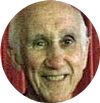

The last operational Short Belfast is about to get a new lease on life
The last operational Short Belfast, which has been stored at Cairns in Australia since 2009, may be flying again, as this August it has been placed on the US civil register as N1819S. This aircraft is former RAF XR365 'Hector', then becoming G-HLFT with Heavylift Cargo.
The aircraft's engines have reportedly been serviced and run, but little else is known about the new owner or his intentions for the aircraft.
9H Media
(Andy Downard sent this link to an audio interview regarding the Cairns' Belfast - fascinating stuff!)
The aircraft's engines have reportedly been serviced and run, but little else is known about the new owner or his intentions for the aircraft.
9H Media
(Andy Downard sent this link to an audio interview regarding the Cairns' Belfast - fascinating stuff!)
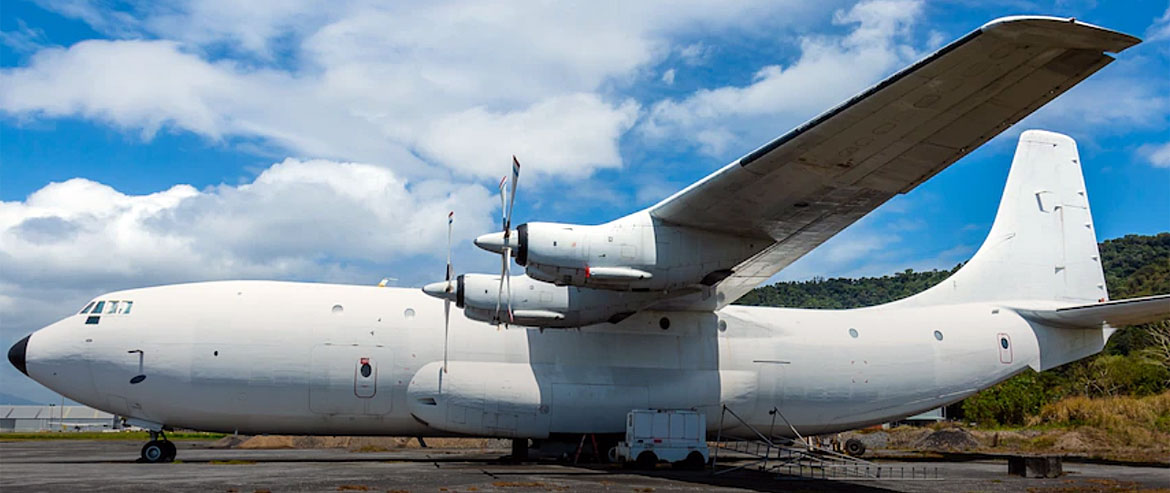

From: Steve Harpum, Faringdon, Oxon
Subject: Post Air Force Careers
Hi Tony,
I'll be honest and say that I struggled to find my feet when I left the RAF - perhaps not surprising after 34 years! I did a stint as a full-time reservist with the Air Cadets, left that to work as an account manager for an IT company (definitely not my cup of tea!) and then spent 3 years as a management trainer all around the Middle East - I made gold on Emirates I was travelling so much! I loved it, but it was knackering so when I got the chance of a supply chain and logistics management role in the NHS I took it - it brought us 'home' to Wiltshire, put me back on a steady wage and back to working with a team doing something we knew made a difference.
Subject: Post Air Force Careers
Hi Tony,
I'll be honest and say that I struggled to find my feet when I left the RAF - perhaps not surprising after 34 years! I did a stint as a full-time reservist with the Air Cadets, left that to work as an account manager for an IT company (definitely not my cup of tea!) and then spent 3 years as a management trainer all around the Middle East - I made gold on Emirates I was travelling so much! I loved it, but it was knackering so when I got the chance of a supply chain and logistics management role in the NHS I took it - it brought us 'home' to Wiltshire, put me back on a steady wage and back to working with a team doing something we knew made a difference.
The pandemic made sure it was nothing like the nice, steady job I thought it would be, but although it was stressful to say the least, being right at the heart of the action again was a real buzz.
Time moves on, of course, and now I'm about to retire again so perhaps I will see a few old faces as I'm out there hacking holes in the local golf courses.
Time moves on, of course, and now I'm about to retire again so perhaps I will see a few old faces as I'm out there hacking holes in the local golf courses.
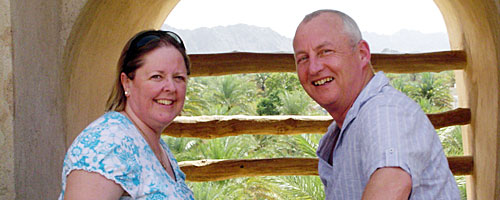

If you will permit me, Tony, I would just like to say a public 'thank you' to my long-suffering wife, Fiona - I couldn't have done it without her!
Cheers,
Steve
Cheers,
Steve

From: Roger Smiley, Fawcett, AB
Subject: Post Air Force Careers
Hi Tony,
Thanks for reaching out to me about my post service career. Upon retiring in 1988 from the air force as a traffic technician and C130E loadmaster, after 26.5 years service, I took a job in airport management for the province of Alberta. The province owned 95 small community airports; some were larger than others and were able to handle aircraft as large as 737's, C130 Hercules or L188 4-engine transport aircraft. I ended up managing the Manning and also Peace River airports on a shared basis, able to handle the larger aircraft. I started with them in February 1989.
In 1995, Alberta got out of the airport business and handed them over to the towns and municipalities. I went with the Manning airport to the municipality. I spent a total of 6 years with the province and 20 years with the municipality. During my tenure with the municipality, I became the County Safety Officer and also the Director of Emergency Management for the county and town of Manning in addition to my airport management duties. I retired full time in September 2015 after a great career in aviation/airports and related work that applied to this field.
Regards,
Roger
Subject: Post Air Force Careers
Hi Tony,
Thanks for reaching out to me about my post service career. Upon retiring in 1988 from the air force as a traffic technician and C130E loadmaster, after 26.5 years service, I took a job in airport management for the province of Alberta. The province owned 95 small community airports; some were larger than others and were able to handle aircraft as large as 737's, C130 Hercules or L188 4-engine transport aircraft. I ended up managing the Manning and also Peace River airports on a shared basis, able to handle the larger aircraft. I started with them in February 1989.
In 1995, Alberta got out of the airport business and handed them over to the towns and municipalities. I went with the Manning airport to the municipality. I spent a total of 6 years with the province and 20 years with the municipality. During my tenure with the municipality, I became the County Safety Officer and also the Director of Emergency Management for the county and town of Manning in addition to my airport management duties. I retired full time in September 2015 after a great career in aviation/airports and related work that applied to this field.
Regards,
Roger


From: George Fouhey, Bedford, Beds
Subject: Post Air Force Careers
Hi Tony,
When I left the RAF in August 1972, I was employed with British Midland Airways at Luton Airport. What a change from service life! I was an Operations Officer and just dealt with the flying side. We had Vicounts and 1-11s. Trim work, and supervised loading of baggage and passengers. Occasionally we had a freight flight; a DeHavilland Dove loaded with chickens for the Isle of Man! Luton was an up-and-coming airport with bigger companies such as Courtline, Monarch and Britannia Airways. It was exciting, especially the day Courtline took receipt of their two Tristars.
From there I went on to join Securicor, I was branch manager for a day and moved back to Luton airport. 1975 I became a Police Officer and then retired in 2005.
Without a doubt, my service in the RAF and the Police were the best times of my life.
Regards
George Fouhey
Subject: Post Air Force Careers
Hi Tony,
When I left the RAF in August 1972, I was employed with British Midland Airways at Luton Airport. What a change from service life! I was an Operations Officer and just dealt with the flying side. We had Vicounts and 1-11s. Trim work, and supervised loading of baggage and passengers. Occasionally we had a freight flight; a DeHavilland Dove loaded with chickens for the Isle of Man! Luton was an up-and-coming airport with bigger companies such as Courtline, Monarch and Britannia Airways. It was exciting, especially the day Courtline took receipt of their two Tristars.
From there I went on to join Securicor, I was branch manager for a day and moved back to Luton airport. 1975 I became a Police Officer and then retired in 2005.
Without a doubt, my service in the RAF and the Police were the best times of my life.
Regards
George Fouhey


From: Jacques Guay, Port Charlotte, FL
Subject: Post Air Force Careers
Hello Tony,
I left the CAF in January of 1977. I have had so many jobs after that, that I really really do not remember them all. First one I can remember is working in a bonded warehouse in Montreal, the airline, and on and on... I think the most satisfying one was delivering pizza; eat and run as they say.
Jacques
Subject: Post Air Force Careers
Hello Tony,
I left the CAF in January of 1977. I have had so many jobs after that, that I really really do not remember them all. First one I can remember is working in a bonded warehouse in Montreal, the airline, and on and on... I think the most satisfying one was delivering pizza; eat and run as they say.
Jacques


From: Tom Burrows, Salisbury, Suffolk
Subject: Post RAF Career
Hi Tony,
Before I left the air force I did a resettlement course on “Community and Charity Management” at York University and managed to get a job as Chief Officer at Richmondshire Council for Voluntary Services in Richmond, North Yorkshire. My highlight whilst there was helping Swaledale Mountain Rescue become a charity. I really enjoyed working with different charities and became interested in local politics as there was an overlap when trying to get funding from local councils. So, I decided to stand for election for both district and town councils as an independent candidate and surprisingly got elected to both councils.
My highlights from those was becoming deputy leader of the District Council and serving a term as Mayor of Richmond. I really enjoyed my time in Richmond; an amazing and beautiful town. We eventually left and came south to be closer to family but we still have great memories of our time in Yorkshire.
Best wishes,
Tom
Subject: Post RAF Career
Hi Tony,
Before I left the air force I did a resettlement course on “Community and Charity Management” at York University and managed to get a job as Chief Officer at Richmondshire Council for Voluntary Services in Richmond, North Yorkshire. My highlight whilst there was helping Swaledale Mountain Rescue become a charity. I really enjoyed working with different charities and became interested in local politics as there was an overlap when trying to get funding from local councils. So, I decided to stand for election for both district and town councils as an independent candidate and surprisingly got elected to both councils.
My highlights from those was becoming deputy leader of the District Council and serving a term as Mayor of Richmond. I really enjoyed my time in Richmond; an amazing and beautiful town. We eventually left and came south to be closer to family but we still have great memories of our time in Yorkshire.
Best wishes,
Tom


Exercise Cobra Warrior
UKMAMS personnel have been at the forefront of integrating new capabilities to wider Royal Air Force. Personnel from our squadron supporting Ex Cobra Warrior recently enabled Tactical Air Landed Operations (TALO) at Carlisle Lake District Airport onboard an Atlas C.1 from RAF Brize Norton Air Mobility Force.
The team deployed a British Army M270B1 MLRS from the Atlas utilising a technique known as Rapid Air Landed (RAL) on-loads/off-loads. This allows us to minimise the time required for the aircraft to be on the ground conducting an offload or load. Living up to our squadron motto;
“Swift To Move”
The team deployed a British Army M270B1 MLRS from the Atlas utilising a technique known as Rapid Air Landed (RAL) on-loads/off-loads. This allows us to minimise the time required for the aircraft to be on the ground conducting an offload or load. Living up to our squadron motto;
“Swift To Move”

From: Keri Eynon, Thatcham, Berks
Subject: Life after the RAF
Hi Tony,
On leaving the RAF, I began a 4-year course for Theology for ministry at Westminster College Cambridge with the aim to being ordained into the United Reformed Church. The course ran from September 1988 to June 1992. I was then ordained and inducted into the church at Newton Abbot having also Kingsteignton URC as part of the pastorate. While at Kingsteignton I became Chaplain to Kingsteignton Royal British Legion (RBL) which was most interesting and rewarding. After 5 years in Devon the time came to move on so in 1997 we moved to Newbury where I had Newbury and Hungerford URC's as my pastorate. While here I transferred my RBL membership from Devon to Newbury when in 2005 the then Anglican Chaplain moved and I was approached to become chaplain which I - with my church's blessing - I did to Newbury RBL a position I still hold which brought me into contact with a number of different people in particular with the American forces who had been at Greenham Common. Each year the Americans had held a memorial service for glider crew and parachutists tragically killed during a training flight in 1944 to this was added two crews of bombers which crashed killing everyone on their return from a raid over Germany. After the Americans left Greenham the RBL agreed to carry on. On their behalf the memorial service and so every year on the 12th December at 12 noon there is a service now held by the control tower at Greenham, the original site in Greenham was moved firstly in September 2012 with the memorials being dedicated by Princess Anne, before eventually in 2019 they were moved to their present and envisaged final location at the Control Tower. The other main event as chaplain is of course Remembrance Sunday when the open air service is held in Newbury with normally 1000+ people attending in 2018 however there was an estimated 3000+ attending so leading that service brings out many emotions and thoughts and being extremely privileged to do so.
Being in the church since leaving the RAF has been most fulfilling as you meet so many different people under so many various circumstances each bringing something new to add to your experience from the joy at baptisms, and weddings to the various emotions at funerals bring their own particular rewards from reactions of people concerned. Having retired - that is no longer having a pastorate to look after - in 2013 at 65 I still help by leading worship and more often being asked to conduct funerals I keep busy and of course the added commitment to the RBL as chaplain.
Best wishes - keep up the good work
Regards Keri
Subject: Life after the RAF
Hi Tony,
On leaving the RAF, I began a 4-year course for Theology for ministry at Westminster College Cambridge with the aim to being ordained into the United Reformed Church. The course ran from September 1988 to June 1992. I was then ordained and inducted into the church at Newton Abbot having also Kingsteignton URC as part of the pastorate. While at Kingsteignton I became Chaplain to Kingsteignton Royal British Legion (RBL) which was most interesting and rewarding. After 5 years in Devon the time came to move on so in 1997 we moved to Newbury where I had Newbury and Hungerford URC's as my pastorate. While here I transferred my RBL membership from Devon to Newbury when in 2005 the then Anglican Chaplain moved and I was approached to become chaplain which I - with my church's blessing - I did to Newbury RBL a position I still hold which brought me into contact with a number of different people in particular with the American forces who had been at Greenham Common. Each year the Americans had held a memorial service for glider crew and parachutists tragically killed during a training flight in 1944 to this was added two crews of bombers which crashed killing everyone on their return from a raid over Germany. After the Americans left Greenham the RBL agreed to carry on. On their behalf the memorial service and so every year on the 12th December at 12 noon there is a service now held by the control tower at Greenham, the original site in Greenham was moved firstly in September 2012 with the memorials being dedicated by Princess Anne, before eventually in 2019 they were moved to their present and envisaged final location at the Control Tower. The other main event as chaplain is of course Remembrance Sunday when the open air service is held in Newbury with normally 1000+ people attending in 2018 however there was an estimated 3000+ attending so leading that service brings out many emotions and thoughts and being extremely privileged to do so.
Being in the church since leaving the RAF has been most fulfilling as you meet so many different people under so many various circumstances each bringing something new to add to your experience from the joy at baptisms, and weddings to the various emotions at funerals bring their own particular rewards from reactions of people concerned. Having retired - that is no longer having a pastorate to look after - in 2013 at 65 I still help by leading worship and more often being asked to conduct funerals I keep busy and of course the added commitment to the RBL as chaplain.
Best wishes - keep up the good work
Regards Keri


From: Paul “Taff” Kelly, Lyneham, Wilts
Subject: Post Air Force Careers
Morning Tony,
Have just retired in the last two years, after 19 years as an ambulance driver. It was the second best job after being a mover for 29 years. I spent every ambulance job with great caring bods, it reminded me of pax work; helping patients. I never thought I would find another career as job satisfying, God bless the NHS.
Rgds, Taff
Subject: Post Air Force Careers
Morning Tony,
Have just retired in the last two years, after 19 years as an ambulance driver. It was the second best job after being a mover for 29 years. I spent every ambulance job with great caring bods, it reminded me of pax work; helping patients. I never thought I would find another career as job satisfying, God bless the NHS.
Rgds, Taff
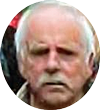

Ian Place, Leeds, West Yorks
Subject: Post Air Force Careers
Tony,
My post RAF career was with Servisair Leeds/Bradford who were handling agents for a number of airlines, where I rose to the giddy heights of Duty Officer with 3 bars on my shoulder. I never became a Duty Manager because all I wanted to do was dispatch aircraft. After 25 years I had enough office work and after 3 years retirement I returned as a part time Dispatcher. The pandemic put an end to my career and my age 70. One thing that upset me was the ramp lads had no clue how to load freighter aircraft. If you had ever read 'Fate is the Hunter' by Ernest K Gann then you will know when a DC3 is loaded incorrectly. We went on this DC3 which they had thrown the nets over the cargo and we had to re-load it from scratch. Servisair no longer exist they were taken over by Swissport.
Ian
Subject: Post Air Force Careers
Tony,
My post RAF career was with Servisair Leeds/Bradford who were handling agents for a number of airlines, where I rose to the giddy heights of Duty Officer with 3 bars on my shoulder. I never became a Duty Manager because all I wanted to do was dispatch aircraft. After 25 years I had enough office work and after 3 years retirement I returned as a part time Dispatcher. The pandemic put an end to my career and my age 70. One thing that upset me was the ramp lads had no clue how to load freighter aircraft. If you had ever read 'Fate is the Hunter' by Ernest K Gann then you will know when a DC3 is loaded incorrectly. We went on this DC3 which they had thrown the nets over the cargo and we had to re-load it from scratch. Servisair no longer exist they were taken over by Swissport.
Ian


From: Richard Lloyd, Dunfermline, Fife
Subject: After the RAF
Hi Tony,
After leaving the RAF, and because I was a French Interpreter, I became a sales person for the BAe146 airliner in French-speaking Africa. Following that and over the next 20 years, I was employed either as a business consultant facilitating meetings which often focused on change, leadership, coaching, mentoring and skills training, or in a senior management role. Main industries served were Aviation, Computing, Electronics, Project Management and Engineering Consultancies. At certain times I was a director of limited liability companies. My clients included Airbus Industrie Sales and Support, Aeroformation, BAe Hawk and Harrier Sales teams, Metier Management Systems (Artemis Software), STC, Perkin Elmer, WS Atkins. I spent a couple of years developing a consultancy in the Netherlands and lived in Gouda.
By now my family and I were living in Kent. I had a very fruitful spell as a Partnership Manager with a firm of Occupational Psychologists (SHL) where my role was to find ways for major software companies to embed our psychometric questionnaires into their HR modules.
We moved to Scotland (my roots) in 2002. After a couple of years with a Business Consultancy, ForthRoad, operating coincidentally from my home village of Aberdour in Fife, I started my own consultancy in 2002, Transforming People, focusing on change and leadership, principally in the Oil & Gas sector and working globally. My main areas of operation were the Caspian Region, Russia, Norway, France, Romania, South Africa and North Africa.
I became an active Christian in 1990, and since my ‘retirement’ in 2015 have devoted my time to working in a variety of interesting voluntary roles in the Church of Scotland, where I currently work as Vice-Convener of the Mission Support Programme Group.
My wonderful wife Sue and I are blessed with 9 grandchildren. I sing second Bass in Dunfermline Choral Union, enjoy reading, music, aviation, travel and real ale. I maintain contact with a small and select group of former RAF colleagues.
Aye,
Richard
Subject: After the RAF
Hi Tony,
After leaving the RAF, and because I was a French Interpreter, I became a sales person for the BAe146 airliner in French-speaking Africa. Following that and over the next 20 years, I was employed either as a business consultant facilitating meetings which often focused on change, leadership, coaching, mentoring and skills training, or in a senior management role. Main industries served were Aviation, Computing, Electronics, Project Management and Engineering Consultancies. At certain times I was a director of limited liability companies. My clients included Airbus Industrie Sales and Support, Aeroformation, BAe Hawk and Harrier Sales teams, Metier Management Systems (Artemis Software), STC, Perkin Elmer, WS Atkins. I spent a couple of years developing a consultancy in the Netherlands and lived in Gouda.
By now my family and I were living in Kent. I had a very fruitful spell as a Partnership Manager with a firm of Occupational Psychologists (SHL) where my role was to find ways for major software companies to embed our psychometric questionnaires into their HR modules.
We moved to Scotland (my roots) in 2002. After a couple of years with a Business Consultancy, ForthRoad, operating coincidentally from my home village of Aberdour in Fife, I started my own consultancy in 2002, Transforming People, focusing on change and leadership, principally in the Oil & Gas sector and working globally. My main areas of operation were the Caspian Region, Russia, Norway, France, Romania, South Africa and North Africa.
I became an active Christian in 1990, and since my ‘retirement’ in 2015 have devoted my time to working in a variety of interesting voluntary roles in the Church of Scotland, where I currently work as Vice-Convener of the Mission Support Programme Group.
My wonderful wife Sue and I are blessed with 9 grandchildren. I sing second Bass in Dunfermline Choral Union, enjoy reading, music, aviation, travel and real ale. I maintain contact with a small and select group of former RAF colleagues.
Aye,
Richard


From: Stephen Bird, Warrington, Cheshire
Subject: Post Air Force Careers
Hi Tony,
Funny this topic should come through just as I am about to finish on semi-retirement from the role I have done pretty much since leaving the RAF and the trade of Movements.
I left in Jully 2003 and had what I thought was a good job lined up with TDG Transport Development Group here in Cheshire as their lead on all things Haz Chem for road/sea/air transport. Only to be let down at the very last minute when they in their words tweaked their operations. So, there I was up a blind ally with no job, obviously I did what all ex-movers did a concentrated my efforts on Manchester and Liverpool airports which both were no more than a 20 minute drive from home. Several companies offered me positions but the thought of reverting back to shift work and being outdoors all hours for less money than what I left the RAF just did not appeal to me. So, I concentrated my effort on driving jobs for 6 months through agencies, whilst I looked about for a more permanent position.
This came from an unexpected avenue in education, I saw a job offered which stated would suit ex-military for a Porter at the University of Chester, I applied and was successful. Within 24 hours of starting the position I knew this was for me, the job in a nutshell was like being an operative in a RAF Station guardroom but without the worry of weapons be cared for. The salary was not really that great but the package which went with it was. I was part of a team of 24 in total reporting to the Head Porter, Roger, who was an ex-army SNCO. Roger was already in his late 60’s and due to retire in the Autum of that year. When he left his job came up as a vacancy and by then I realised I possessed the skill set to apply for that position, which if you were to align again to a military post would be identical virtually to Orderly Sergeant, something I had done many times myself.
Subject: Post Air Force Careers
Hi Tony,
Funny this topic should come through just as I am about to finish on semi-retirement from the role I have done pretty much since leaving the RAF and the trade of Movements.
I left in Jully 2003 and had what I thought was a good job lined up with TDG Transport Development Group here in Cheshire as their lead on all things Haz Chem for road/sea/air transport. Only to be let down at the very last minute when they in their words tweaked their operations. So, there I was up a blind ally with no job, obviously I did what all ex-movers did a concentrated my efforts on Manchester and Liverpool airports which both were no more than a 20 minute drive from home. Several companies offered me positions but the thought of reverting back to shift work and being outdoors all hours for less money than what I left the RAF just did not appeal to me. So, I concentrated my effort on driving jobs for 6 months through agencies, whilst I looked about for a more permanent position.
This came from an unexpected avenue in education, I saw a job offered which stated would suit ex-military for a Porter at the University of Chester, I applied and was successful. Within 24 hours of starting the position I knew this was for me, the job in a nutshell was like being an operative in a RAF Station guardroom but without the worry of weapons be cared for. The salary was not really that great but the package which went with it was. I was part of a team of 24 in total reporting to the Head Porter, Roger, who was an ex-army SNCO. Roger was already in his late 60’s and due to retire in the Autum of that year. When he left his job came up as a vacancy and by then I realised I possessed the skill set to apply for that position, which if you were to align again to a military post would be identical virtually to Orderly Sergeant, something I had done many times myself.
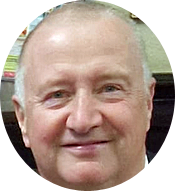
I applied and was successful, so I became the Head Porter for the University of Chester and have been for the last 19 years, I have overseen a team of 24 plus a good proportion of agency staff during this period. I can honestly say there is not a lot I have not seen during this period. Our roles basically were that we were everything to everybody during the quiet periods on the campuses, lots of involvement with residential students and all the work they tend to generate.
In addition to this I held the title of the ceremonial role of, The Esquire Bedell, this was the bearer of the University Mace, over the years I have led in our Chancellors of which the current one is Gyles Brandreth, he’s always one step behind me in the procession and in front of me was always the honorary graduate, and to rattle a few names off these have consisted of the now King Charles, Tony Robinson, Esther Rantzen, Joanna Lumley, John Setamua plus numerous others and sporting icons.
Like I stated on the first line I am hoping to pretty much retire from November so this will bring to end a near 20-year interesting career, one which I never ever thought I would end up doing!
Regards,
Steve
In addition to this I held the title of the ceremonial role of, The Esquire Bedell, this was the bearer of the University Mace, over the years I have led in our Chancellors of which the current one is Gyles Brandreth, he’s always one step behind me in the procession and in front of me was always the honorary graduate, and to rattle a few names off these have consisted of the now King Charles, Tony Robinson, Esther Rantzen, Joanna Lumley, John Setamua plus numerous others and sporting icons.
Like I stated on the first line I am hoping to pretty much retire from November so this will bring to end a near 20-year interesting career, one which I never ever thought I would end up doing!
Regards,
Steve
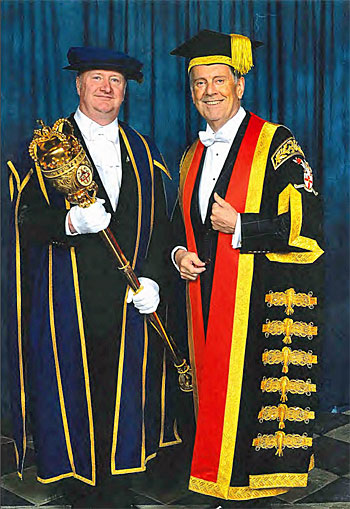
Examined: The Countries Operating The Boeing C-17 Globemaster III
The versatile aircraft flies for a range of countries and even an international alliance
The C-17 Globemaster is one of the most versatile military aircraft in the skies. McDonnell Douglas and Boeing produced the transport aircraft in Long Beach, California. The C-17 holds 33 world records, more than any other airlifter in history, and has accumulated millions of flight hours worldwide. A total of 279 examples were built between 1991 and 2015, with the vast majority going to the US Air Force. However, there are quite a few other operators of the type worldwide.
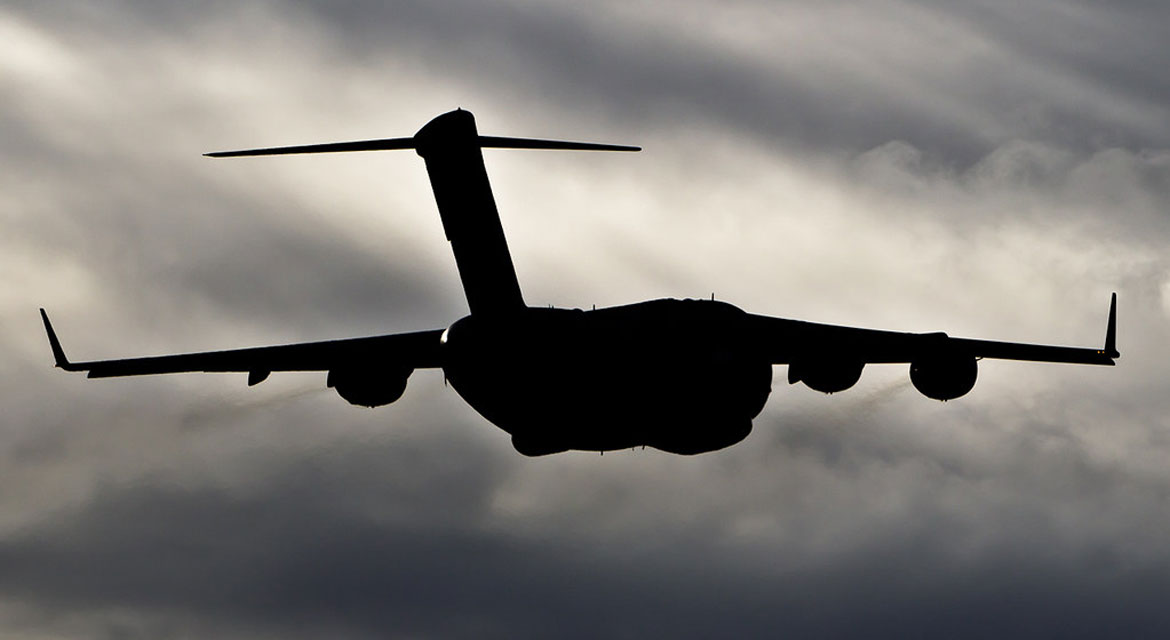
Indian Air Force
The C-17's versatile operating conditions make it a key asset for the Indian Air Force, which uses it nationwide and up into its Himalayan air bases in North India. The country is now the second-largest operator of the type, with eleven units of the transport aircraft in its arsenal. They have been used frequently for medical support and evacuation domestically and across the region.
India's C-17s are assigned to its 81st Squadron. The "Sky Lords" squadron is numbered 81 in honor of its creation during the 81st year of the Indian Air Force.
India's C-17s are assigned to its 81st Squadron. The "Sky Lords" squadron is numbered 81 in honor of its creation during the 81st year of the Indian Air Force.
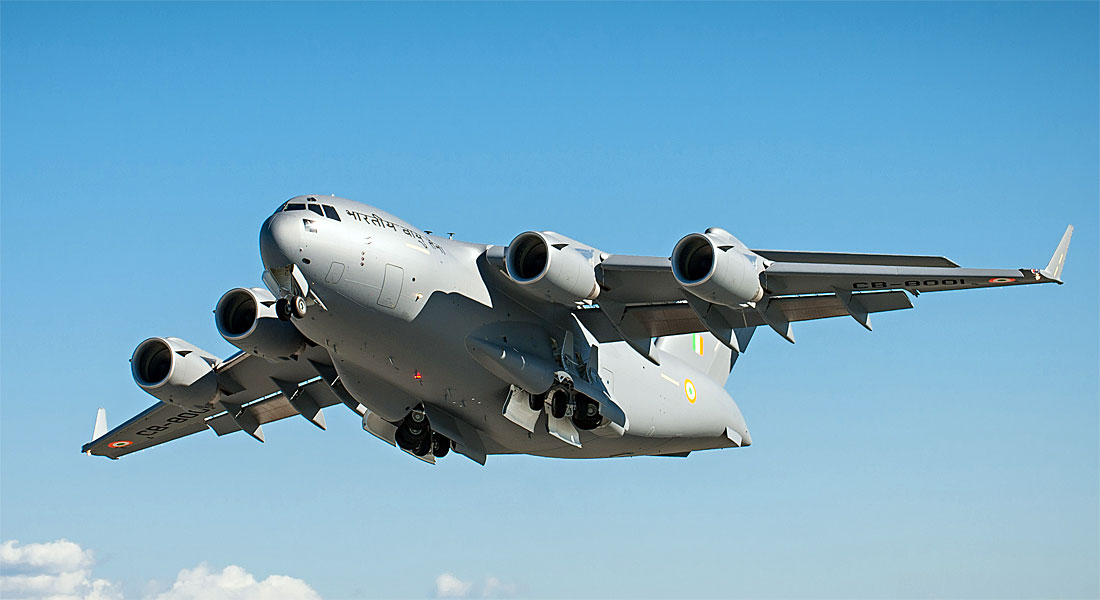
United Kingdom's Royal Air Force
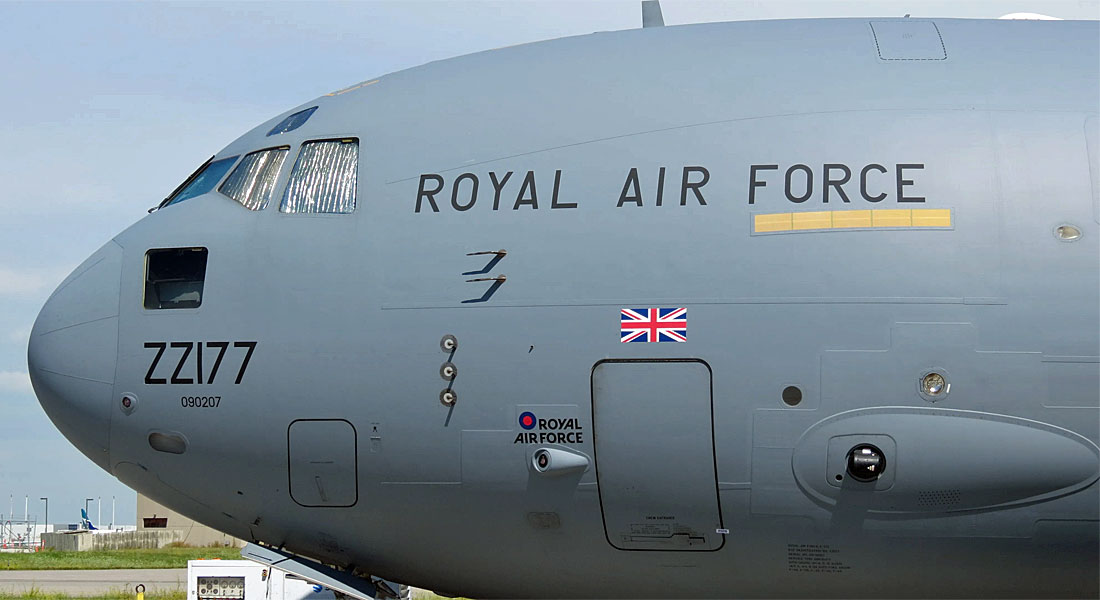
The C-17 remains a vital part of the RAF's mission, conducting missions from repatriating nationals to transporting the coffin of the late Queen Elizabeth II to London for the funeral. The type landed on UK shores in 2001 as part of a four-aircraft lease arrangement with Boeing that ensured the RAF aircraft were kept up to date in case they ended up in the USAF fleet at the end of the lease. This was not to be, as the UK purchased the four aircraft before buying four more examples to make the fleet of eight that it flies today.
The United Kingdom's C-17 flew 150,000 hours and traveled a distance equal to two thousand laps around the globe during their first two decades at the RAF. C-17 aircrew and engineers worldwide are still instructed at the C-17 International Training Centre in Farnborough. Home to a C-17 full-flight training simulator, the center will continue to train the pilots, loadmasters, and engineers who operate and maintain the C-17 for at least another decade.
The United Kingdom's C-17 flew 150,000 hours and traveled a distance equal to two thousand laps around the globe during their first two decades at the RAF. C-17 aircrew and engineers worldwide are still instructed at the C-17 International Training Centre in Farnborough. Home to a C-17 full-flight training simulator, the center will continue to train the pilots, loadmasters, and engineers who operate and maintain the C-17 for at least another decade.
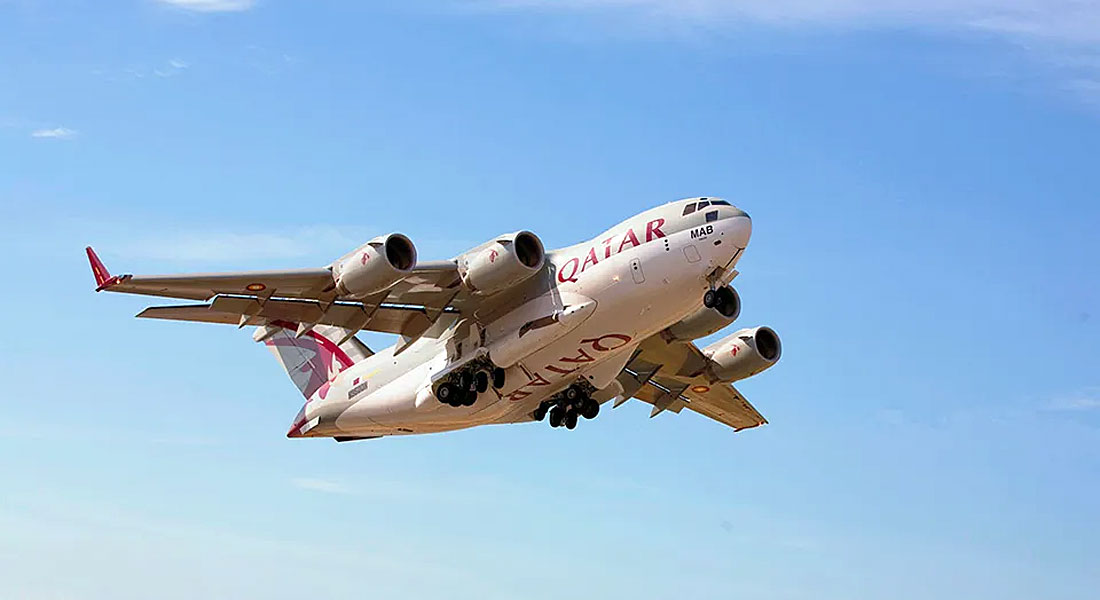
Qatar was the first Middle East customer to order C-17s. The country's Air Force received its first two C-17s in 2009 and two additional C-17s in 2012. The aircraft has proved critical for the Air Force in supporting the people of Qatar and their allies with transport, airdrop, and humanitarian missions.
In 2015, the Government of Qatar and Boeing signed an agreement to double the nation's fleet to the eight C-17s it flies today. The final aircraft to roll off the company's plant at Long Beach, California, when the type ceased production on November 29th, 2015, went to the Qatar Emiri Air Force the following year.
In 2015, the Government of Qatar and Boeing signed an agreement to double the nation's fleet to the eight C-17s it flies today. The final aircraft to roll off the company's plant at Long Beach, California, when the type ceased production on November 29th, 2015, went to the Qatar Emiri Air Force the following year.
Qatar Emiri Air Force
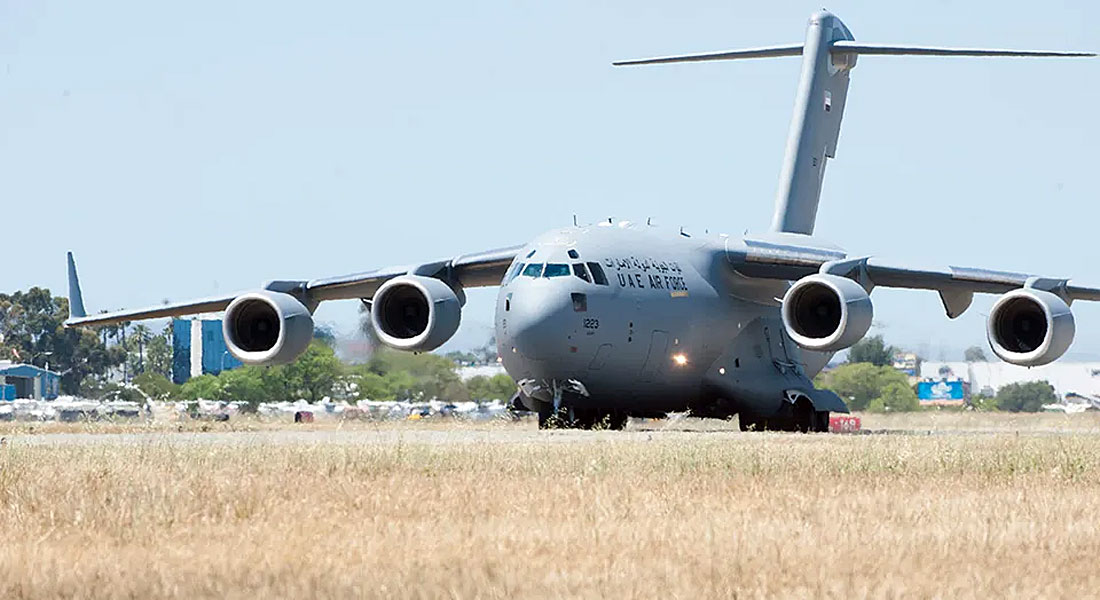
The United Arab Emirates is another major operator of the versatile type, taking command of its first C-17 on May 10th, 2011. The UAE Air Force and Air Defence C-17 fleet has amassed more than 2,000 flight hours, carried more than 3,000 passengers, and nearly 4 million pounds of cargo in its first year of operations alone. A total of eight were eventually delivered over the next few years.
In 2022, The Government of the United Arab Emirates signed an ongoing fleet sustainment deal with Boeing, which includes software support, aircraft and engine support equipment, components, consumables, spare parts, and relevant technical documentation. According to public information from the US Department of State, the deal was worth an estimated $980.4 million.
In 2022, The Government of the United Arab Emirates signed an ongoing fleet sustainment deal with Boeing, which includes software support, aircraft and engine support equipment, components, consumables, spare parts, and relevant technical documentation. According to public information from the US Department of State, the deal was worth an estimated $980.4 million.
United Arab Emirates Air Force
Royal Australian Air Force
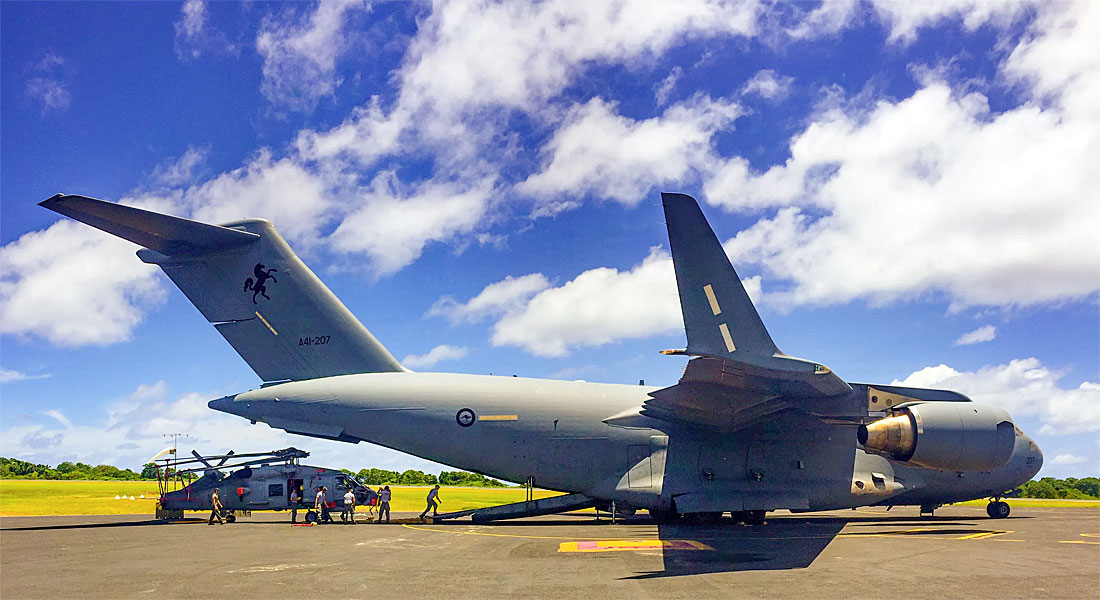
Australia is also home to eight examples of the aircraft. The nation introduced an initial fleet of four C-17As between 2006 and 2008. Four additional aircraft were acquired in 2011, 2012, and 2015, joining the existing fleet in No. 36 Squadron at RAAF Base Amberley.
The C-17A Globemaster III provides logistics support for Australian Defence Force operations worldwide, allowing Australia to rapidly deploy troops, supplies, equipment, machinery, and helicopters effectively. The giant can hold three helicopters in its cargo bay for long-distance transport.
The C-17A Globemaster III provides logistics support for Australian Defence Force operations worldwide, allowing Australia to rapidly deploy troops, supplies, equipment, machinery, and helicopters effectively. The giant can hold three helicopters in its cargo bay for long-distance transport.
Royal Canadian Air Force
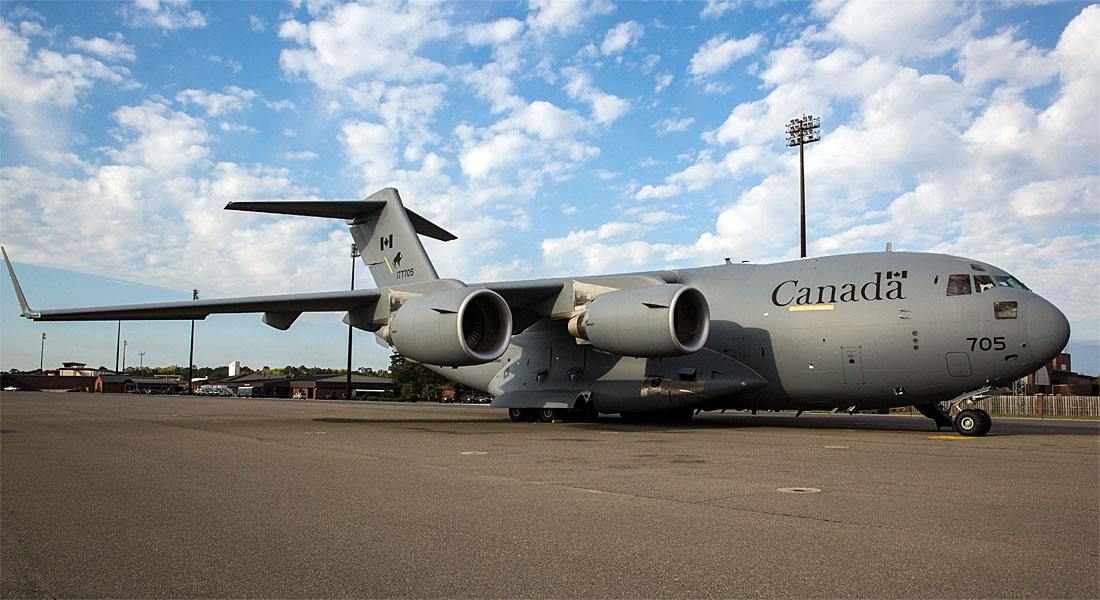
The group operates five "CC-177 Globemaster III" transport aircraft, slightly adapting the name when accepting the type. Canada and the United States worked closely in training Royal Canadian Air Force members on aircraft maintenance, vital for continued interoperability between the two countries' Air Forces.
The 429 Transport Squadron of the Royal Canadian Air Force in Trenton, Ontario, started flying the CC-177 in July 2007. The Squadron's primary mission remains to provide a responsive domestic global airlift to support the Canadian armed forces through humanitarian and support missions around the globe.
The 429 Transport Squadron of the Royal Canadian Air Force in Trenton, Ontario, started flying the CC-177 in July 2007. The Squadron's primary mission remains to provide a responsive domestic global airlift to support the Canadian armed forces through humanitarian and support missions around the globe.
Kuwait Air Force
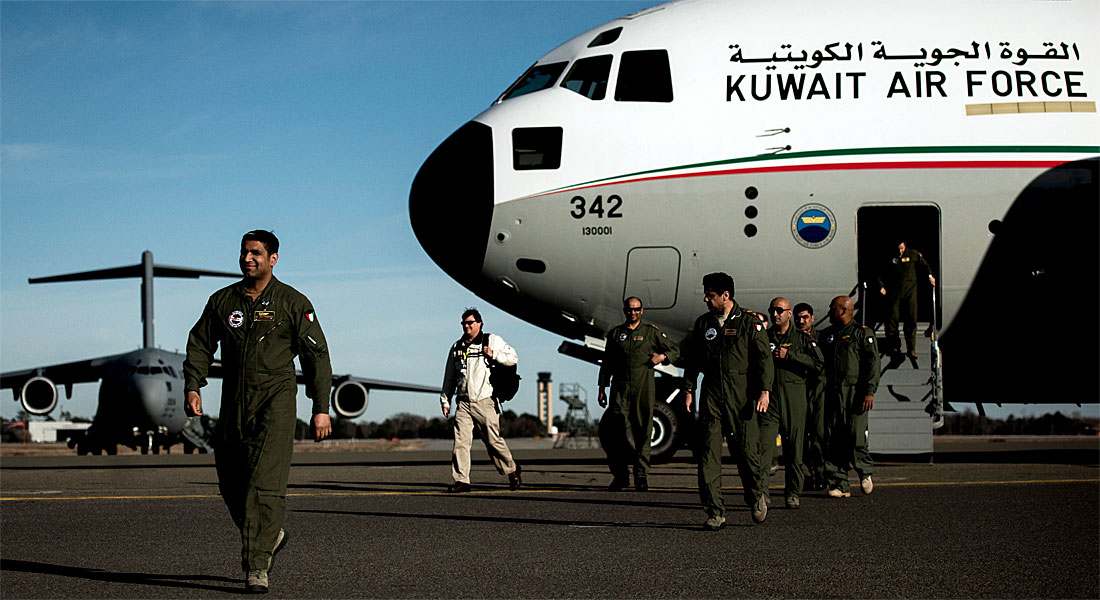
Kuwait is the recipient of two C-17 Globemasters. The planes were acquired to advance and expand the Kuwait Air Force's military and civilian operations capabilities, including humanitarian aid and disaster relief. The first aircraft took to the skies on January 31st, 2014, sporting a custom paint job.
Before taking the aircraft's delivery, the Kuwait Air Force sent some of its members to the US for additional training. They were embedded with the 17th Airlift Squadron to receive instruction from the US Air Force on the C-17. The training familiarized the Kuwaiti flight crew with the operations and maintenance of the aircraft. It included the visiting aircrew experiencing the flight type's simulator during their stay at Joint Base Lewis McChord in Washington State. A second C-17 was then acquired, along with training and logistical support, for an estimated cost of $371 million.
Before taking the aircraft's delivery, the Kuwait Air Force sent some of its members to the US for additional training. They were embedded with the 17th Airlift Squadron to receive instruction from the US Air Force on the C-17. The training familiarized the Kuwaiti flight crew with the operations and maintenance of the aircraft. It included the visiting aircrew experiencing the flight type's simulator during their stay at Joint Base Lewis McChord in Washington State. A second C-17 was then acquired, along with training and logistical support, for an estimated cost of $371 million.
NATO's Strategic Airlift Capability
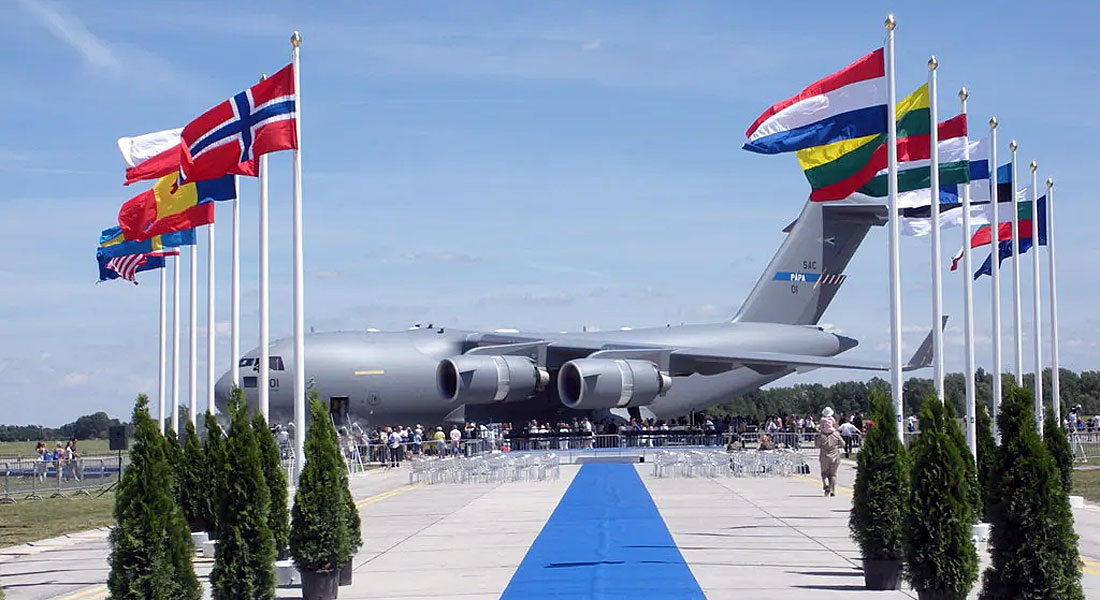
The North Atlantic Treaty Organization (NATO) has a C-17 program of its own to ensure that its members can deploy their forces and equipment wherever needed. The Strategic Airlift Capability (SAC) allows NATO Allies and partner nations to jointly own the fleet, which would be prohibitively expensive to purchase individually. The first C-17 was delivered in July 2009, with the second and third aircraft following in September and October 2009.
The three planes are operated by military personnel from all participating countries through the Heavy Airlift Wing (HAW) at the Hungarian Defence Forces 47th Air Base in Pápa. Recent missions have included flying essential personal protective equipment during the peak of COVID-19 and delivering 340 tons of urgent equipment and personnel across nine missions following devastating earthquakes that struck Türkiye in February 2023.
The three planes are operated by military personnel from all participating countries through the Heavy Airlift Wing (HAW) at the Hungarian Defence Forces 47th Air Base in Pápa. Recent missions have included flying essential personal protective equipment during the peak of COVID-19 and delivering 340 tons of urgent equipment and personnel across nine missions following devastating earthquakes that struck Türkiye in February 2023.
United States Air Force
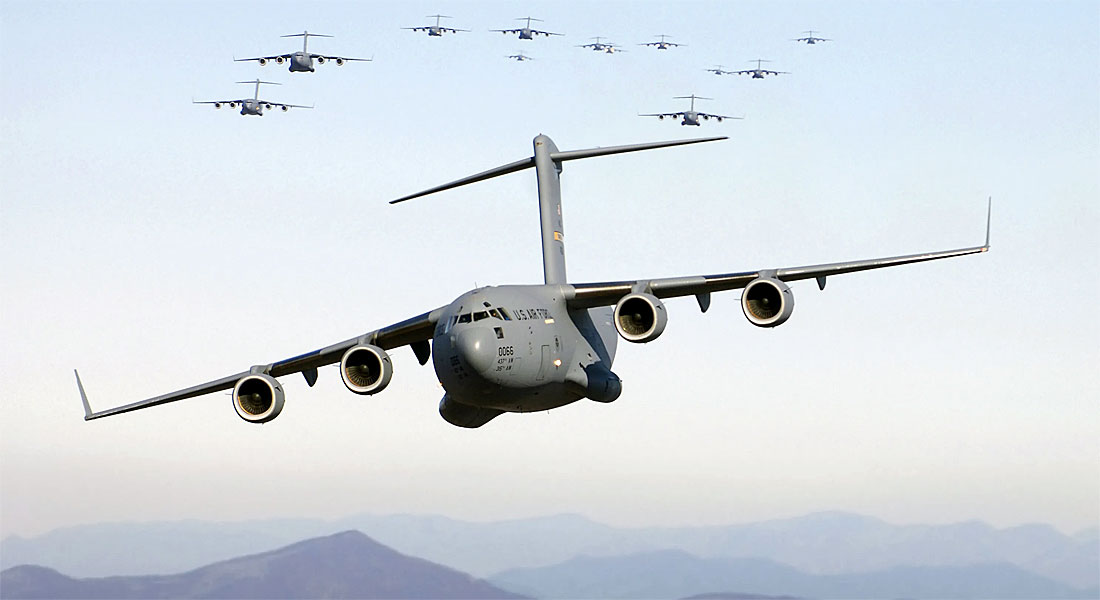
By far the largest operator of the type worldwide, the USAF was the launch customer of the C-17 with an order for an initial order of 60 planes. This number grew as the type proved effective and eventually expanded to 223 examples. The transport aircraft continue to fulfill a diverse number of roles and are stationed at bases across the nation.
According to Boeing, the lifespan of a C-17 is 30 years, so it is doubtless that there will be C-17s in the skies for several years to come.
simpleflying.com
According to Boeing, the lifespan of a C-17 is 30 years, so it is doubtless that there will be C-17s in the skies for several years to come.
simpleflying.com

From: Brian Everett, Darlington
Subject: Post Air Force Careers
Hi Tony,
“I don’t regret the things I’ve done, only the things I didn’t when I had the choice.” Abbishek
In 1985, I decided to leave the RAF (PVR) whilst there was still time to develop a second career and to exercise management skills in a more commercially competitive environment. Initially, as Assistant Director of Planning and Transportation for the City of Westminster and Chief of Staff for 6 other Divisions. During this time, and without additional resources, I had to absorb many of the tasks previously undertaken by the Greater London Council. I was then given the task of implementing “privatisation”, setting each of the identified areas on a fully commercial basis and subsequently taking on the role of Director of Commercial Operations to see the system through.
In the years that followed, I became Chairman and Chief Executive of the Capital Group of companies, working on many transport projects both at home and across the world, including major schemes in Spain, Mexico, Malta, Africa, and the Far East. The Group was eventually sold to a leading French multinational in 1991. Six months later I was invited to join London Transport and worked with the Ministry of Transport in the successful privatisation of the 11 London Bus companies. I was then appointed a main board director, assuming the regulatory and contracting role as Procurement and Infrastructure Director for London Buses and London River Services, which included the development of bus and river networks across London with an annual budget of almost £1 billion (1993 value).
I retired (yet again!) in 2000 and took on a number of roles, becoming a director of a couple of bus companies; owning and running a large country house hotel in the Borders and creating and running Translink Consultancy. In 2009, I was appointed Chairman of NHS County Durham Community Health Services, another stressful but rewarding part time position which seemed to fill most of the 7 days in a week – much like Movements jobs.
Perhaps one of the most interesting appointments in my latter years was that of President of British Gymnastics, a position I held for 7 years, having come up through coaching and judging via County and then English positions. Until my final (?) retirement in 2022, I had been involved in 2 Olympics, 4 World Championships, 2 Commonwealth Games and 9 National Championships – a very rewarding but demanding experience. Now at the age of 88, I’m really looking forward to retirement!
“The trouble with retirement is that you never get a day off.” Abe Lemons
Kind regards,
Brian
Subject: Post Air Force Careers
Hi Tony,
“I don’t regret the things I’ve done, only the things I didn’t when I had the choice.” Abbishek
In 1985, I decided to leave the RAF (PVR) whilst there was still time to develop a second career and to exercise management skills in a more commercially competitive environment. Initially, as Assistant Director of Planning and Transportation for the City of Westminster and Chief of Staff for 6 other Divisions. During this time, and without additional resources, I had to absorb many of the tasks previously undertaken by the Greater London Council. I was then given the task of implementing “privatisation”, setting each of the identified areas on a fully commercial basis and subsequently taking on the role of Director of Commercial Operations to see the system through.
In the years that followed, I became Chairman and Chief Executive of the Capital Group of companies, working on many transport projects both at home and across the world, including major schemes in Spain, Mexico, Malta, Africa, and the Far East. The Group was eventually sold to a leading French multinational in 1991. Six months later I was invited to join London Transport and worked with the Ministry of Transport in the successful privatisation of the 11 London Bus companies. I was then appointed a main board director, assuming the regulatory and contracting role as Procurement and Infrastructure Director for London Buses and London River Services, which included the development of bus and river networks across London with an annual budget of almost £1 billion (1993 value).
I retired (yet again!) in 2000 and took on a number of roles, becoming a director of a couple of bus companies; owning and running a large country house hotel in the Borders and creating and running Translink Consultancy. In 2009, I was appointed Chairman of NHS County Durham Community Health Services, another stressful but rewarding part time position which seemed to fill most of the 7 days in a week – much like Movements jobs.
Perhaps one of the most interesting appointments in my latter years was that of President of British Gymnastics, a position I held for 7 years, having come up through coaching and judging via County and then English positions. Until my final (?) retirement in 2022, I had been involved in 2 Olympics, 4 World Championships, 2 Commonwealth Games and 9 National Championships – a very rewarding but demanding experience. Now at the age of 88, I’m really looking forward to retirement!
“The trouble with retirement is that you never get a day off.” Abe Lemons
Kind regards,
Brian
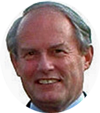

From: Steve Cross, Doncaster
Subject: Post Air Force Careers
Hi Tony,
As a young corporal leaving the service in 1991, I have had a number of post RAF ‘careers’.
The first was as the Operations Manager for the UK’s largest inland waterway’s freight company. This unique role involved moving coal from local staithes to a local power station, where one of only two in the world, ‘tipplers’ would lift the ‘pan’ over 260 feet and invert it to empty the coal. It regularly attracted media attention and the barges, tugs and ‘Tom puddings(pans)’ and me featured on many TV programmes.
The second involved me managing the support provided to long term job seekers. I designed programmes which mentored and coached them into employment, providing the skills to be confident and competent in their endeavours. As Head of E-Learning, which in the 1990’s was a new concept, I was a regular visitor to Westminster providing MPs, central government and departments with advice on innovative ways to implement technology to transform the support available to job seekers. This work took me to France, Germany, Spain, Poland & Israel. Incidentally, my work was recognised by the Canadian government and I was invited by the Canadian Ambassador several times to meet delegations at Canada House.
My third career was that of a College Principal. Creating opportunities for disadvantaged adults to progress through skills development in life from learning English to entering University.
Currently I manage how a Local Authority controls its spending on all of its major projects, so that it has the capacity and borrowing to deliver, whilst optimising value for money.
The clock’s ticking towards a well earned retirement!
Best wishes to all!
Steve
Subject: Post Air Force Careers
Hi Tony,
As a young corporal leaving the service in 1991, I have had a number of post RAF ‘careers’.
The first was as the Operations Manager for the UK’s largest inland waterway’s freight company. This unique role involved moving coal from local staithes to a local power station, where one of only two in the world, ‘tipplers’ would lift the ‘pan’ over 260 feet and invert it to empty the coal. It regularly attracted media attention and the barges, tugs and ‘Tom puddings(pans)’ and me featured on many TV programmes.
The second involved me managing the support provided to long term job seekers. I designed programmes which mentored and coached them into employment, providing the skills to be confident and competent in their endeavours. As Head of E-Learning, which in the 1990’s was a new concept, I was a regular visitor to Westminster providing MPs, central government and departments with advice on innovative ways to implement technology to transform the support available to job seekers. This work took me to France, Germany, Spain, Poland & Israel. Incidentally, my work was recognised by the Canadian government and I was invited by the Canadian Ambassador several times to meet delegations at Canada House.
My third career was that of a College Principal. Creating opportunities for disadvantaged adults to progress through skills development in life from learning English to entering University.
Currently I manage how a Local Authority controls its spending on all of its major projects, so that it has the capacity and borrowing to deliver, whilst optimising value for money.
The clock’s ticking towards a well earned retirement!
Best wishes to all!
Steve


From: Bob Pountney, Forres, Moray
Subject: Post Air Force Careers
Hi Tony,
Some 11 years ago 5 like-minded individuals met in our lounge to discuss taking forward the work of the Kinloss Nimrod Group. Their plan to save a Nimrod in running condition and to do fast taxi runs with paying passengers was a great idea but fell through for numerous reasons. We managed to save XV244 but without engines, a shame as it had just completed the last Major servicing and was in pristine condition, proving an ideal canvas for being named "Duke of Edinburgh" with his crest on the fin. 244 remains behind the fence at what is now a Royal Engineer base and is, sadly, not open to visitors.
Emboldened by this success we managed to obtain the forward fuselage of XV240, which spent a very short life as the gate guard before being chopped up, and we had it mounted on a trailer. This enabled us to take it to various shows and exhibitions where it proved very popular as it allowed visitors to see the inside of an aircraft they were well aware of seeing flying around.
Shortly after we succeeded in "Saving a Sea King for Moray", an iconic helicopter in the area having served at nearby Lossiemouth and this, with XV240, formed the basis of what became Morayvia Aerospace and Technology Centre. We were able to rent a former infants school building from the Council which was later given to Morayvia as a Capital Asset Transfer and this is where we currently reside.
The doors were opened to the public 7 years ago and since then the collection has grown to include cockpits of Vulcan, Valiant, Hawker Hunter F5, 2 x Vampire T11, Jet Provost T4, Canberra T11, Shackleton MR3/3, HP Herald, F35 (movie prop), Tornado GR4, Super Tiger and a Sea Venom. Full-size aircraft include Wessex Mk2, Wessex Mk5, 2x Jaguar, Merlin Hm1, Westland Dragonfly, Bristol Sycamore, Phantom FG1, HP Herald, 2 x Jet Provost T4, Antonov AN2 and of course the Mk 3 Sea King. Our excellent team of volunteer engineers, mainly ex-service, not only keep the exhibits looking spick and span but are also bringing a Mk10 Whirlwind back from a heap of scrap which will complete the line-up of RAF SAR helicopters. Three of them have taken on the task of completing a full-size Mk1a Spitfire replica the fuselage of which was started by a gentleman in his double garage, working alone from plans and who spent 16 years on it before ill-health stopped him using tools. Our team are producing everything from scratch including a full cockpit interior, the undercarriage and, later, the wings, they even intend to make the propeller blades from laminated plywood!
Inside the building we have basic flight simulators, safety equipment displays, visual displays, aircraft artefacts, aero engines, ejection seats, Nimrod sensor stations all interactive, a 29 seat cinema and an inflatable Planetarium.
Morayvia is a 4-star TripAdvisor attraction and was also awarded a Queen's Award for Voluntary Service, the volunteers MBE. Our excellent front-of-house volunteer guides make sure that everyone feels welcome and important. The majority of the aircraft and cockpits are open and often manned by pilots and crews who actually flew the aircraft, gives them the chance to tell lots of war stories! Visitor numbers are increasing year-on-year, more aircraft in the pipeline and a deeper involvement in STEM activities mean that the future is bright but busy, what happened to my retirement?
Kind regards,
Bob Pountney
Director at Morayvia
Subject: Post Air Force Careers
Hi Tony,
Some 11 years ago 5 like-minded individuals met in our lounge to discuss taking forward the work of the Kinloss Nimrod Group. Their plan to save a Nimrod in running condition and to do fast taxi runs with paying passengers was a great idea but fell through for numerous reasons. We managed to save XV244 but without engines, a shame as it had just completed the last Major servicing and was in pristine condition, proving an ideal canvas for being named "Duke of Edinburgh" with his crest on the fin. 244 remains behind the fence at what is now a Royal Engineer base and is, sadly, not open to visitors.
Emboldened by this success we managed to obtain the forward fuselage of XV240, which spent a very short life as the gate guard before being chopped up, and we had it mounted on a trailer. This enabled us to take it to various shows and exhibitions where it proved very popular as it allowed visitors to see the inside of an aircraft they were well aware of seeing flying around.
Shortly after we succeeded in "Saving a Sea King for Moray", an iconic helicopter in the area having served at nearby Lossiemouth and this, with XV240, formed the basis of what became Morayvia Aerospace and Technology Centre. We were able to rent a former infants school building from the Council which was later given to Morayvia as a Capital Asset Transfer and this is where we currently reside.
The doors were opened to the public 7 years ago and since then the collection has grown to include cockpits of Vulcan, Valiant, Hawker Hunter F5, 2 x Vampire T11, Jet Provost T4, Canberra T11, Shackleton MR3/3, HP Herald, F35 (movie prop), Tornado GR4, Super Tiger and a Sea Venom. Full-size aircraft include Wessex Mk2, Wessex Mk5, 2x Jaguar, Merlin Hm1, Westland Dragonfly, Bristol Sycamore, Phantom FG1, HP Herald, 2 x Jet Provost T4, Antonov AN2 and of course the Mk 3 Sea King. Our excellent team of volunteer engineers, mainly ex-service, not only keep the exhibits looking spick and span but are also bringing a Mk10 Whirlwind back from a heap of scrap which will complete the line-up of RAF SAR helicopters. Three of them have taken on the task of completing a full-size Mk1a Spitfire replica the fuselage of which was started by a gentleman in his double garage, working alone from plans and who spent 16 years on it before ill-health stopped him using tools. Our team are producing everything from scratch including a full cockpit interior, the undercarriage and, later, the wings, they even intend to make the propeller blades from laminated plywood!
Inside the building we have basic flight simulators, safety equipment displays, visual displays, aircraft artefacts, aero engines, ejection seats, Nimrod sensor stations all interactive, a 29 seat cinema and an inflatable Planetarium.
Morayvia is a 4-star TripAdvisor attraction and was also awarded a Queen's Award for Voluntary Service, the volunteers MBE. Our excellent front-of-house volunteer guides make sure that everyone feels welcome and important. The majority of the aircraft and cockpits are open and often manned by pilots and crews who actually flew the aircraft, gives them the chance to tell lots of war stories! Visitor numbers are increasing year-on-year, more aircraft in the pipeline and a deeper involvement in STEM activities mean that the future is bright but busy, what happened to my retirement?
Kind regards,
Bob Pountney
Director at Morayvia
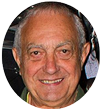
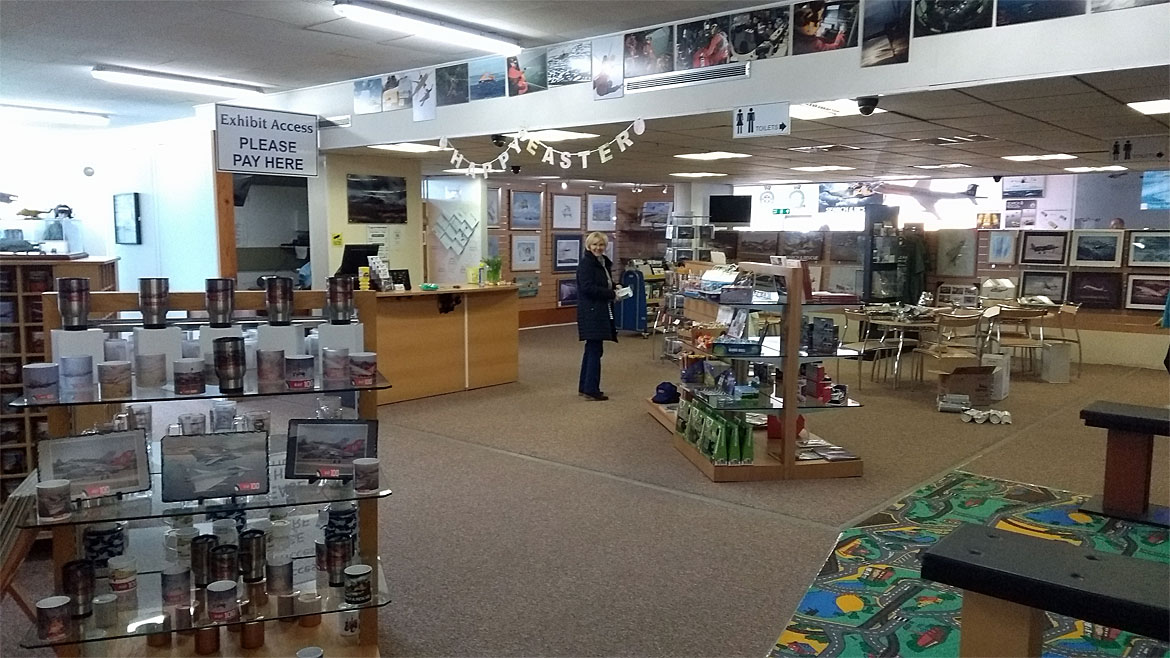

From: Pete Orton, Camberley, Surrey
Subject: Post Air Force Careers
Hello Tony ,
01 Aug 1977, 482 Sac Orton, RAF, was transformed into 610 Mr. Orton, BA Cargo and was posted to Manchester International Airport.
The rehab was seamless, RAF Ringway (as was) remained unchanged from the WW11 layout, the drill square was now the staff car park, and the old Para school was now the export shed. Only the Tower Block and Terminal were post war additions to the Tech site. The ambience, camaraderie and banter in the cargo sheds could have been at Lyneham; it was just another posting, building and breaking down pallets is pretty much same-same, as was the shift work,
Manchester was predominantly artisan BEA, with very little snobby BOAC influence infecting this outpost of the newly formed BA. My tactical background fitted in perfectly. The only noticeable change was that my pay was significantly increased, and all the 4-ringers with scrambled eggs on their hats were not saluted. Almost as good as Gan! (but wetter). To add to the RAF culture and tradition, there were strong unsubstantiated rumours of a clandestine tunnel from the Import Shed bogs to the Tatton Arms. I can neither confirm nor deny.
Subject: Post Air Force Careers
Hello Tony ,
01 Aug 1977, 482 Sac Orton, RAF, was transformed into 610 Mr. Orton, BA Cargo and was posted to Manchester International Airport.
The rehab was seamless, RAF Ringway (as was) remained unchanged from the WW11 layout, the drill square was now the staff car park, and the old Para school was now the export shed. Only the Tower Block and Terminal were post war additions to the Tech site. The ambience, camaraderie and banter in the cargo sheds could have been at Lyneham; it was just another posting, building and breaking down pallets is pretty much same-same, as was the shift work,
Manchester was predominantly artisan BEA, with very little snobby BOAC influence infecting this outpost of the newly formed BA. My tactical background fitted in perfectly. The only noticeable change was that my pay was significantly increased, and all the 4-ringers with scrambled eggs on their hats were not saluted. Almost as good as Gan! (but wetter). To add to the RAF culture and tradition, there were strong unsubstantiated rumours of a clandestine tunnel from the Import Shed bogs to the Tatton Arms. I can neither confirm nor deny.

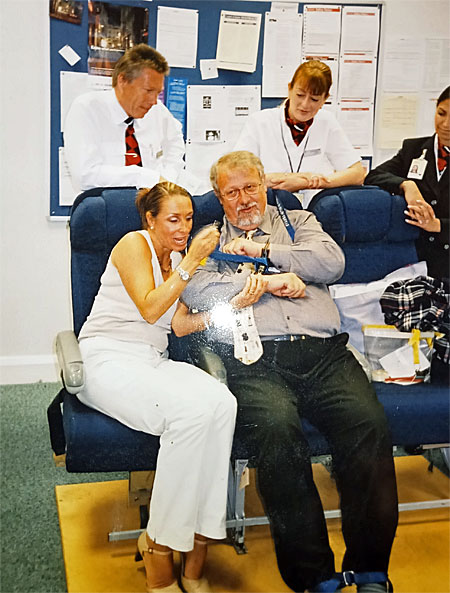
The serendipity of time and place soon had me relocated to London, rapidly adding pay grades. My thanks go to the short-lived B747 freighter, combined with an ability to make sense of the 21st edition of the IATA Dangerous Goods Regulations. A brief stint assisting with corporate training events got me hobnobbing with the great and the good of the time, and hence greater opportunities to increase salary (and skills). My final move was into Crew Safety, security and survival training, gaining qualifications from Cranfield, IAM Farnborough, Shrivenham and CAMI Oklahoma (FAA). Swimming and being handcuffed by stewardesses destroyed any incentive to seek further advancement, so that was the end of what could have been a meteoric career (status roughly WO equivalent-ish on retirement).
During the 38 years, I witnessed some of the best and worst of British corporate management, as Walsh and Cruz ensured that none of (Lord) John King and (Sir) Colin Marshal's once great airline was preserved, power diving below Easy Jet and Ryan Air to join TFL's tube network in darkened tunnels.
Given the choice I was happiest in a cargo net hammock on a Herc compared to 1st class 747, but to be fair, a flight deck Concorde seat is the only way to get to New York.
During the 38 years, I witnessed some of the best and worst of British corporate management, as Walsh and Cruz ensured that none of (Lord) John King and (Sir) Colin Marshal's once great airline was preserved, power diving below Easy Jet and Ryan Air to join TFL's tube network in darkened tunnels.
Given the choice I was happiest in a cargo net hammock on a Herc compared to 1st class 747, but to be fair, a flight deck Concorde seat is the only way to get to New York.
GDT - Civvy Style!
So not a bad 50 years spent in the air transport environment. As I told our flight ops director at my retirement do, "12 years RAF and 38 years BA, never a days work in my life, just fun and giggles".
Thanks again Tony for maintaining happy memories.
Pete
Thanks again Tony for maintaining happy memories.
Pete

From: Bryan Morgan, Abingdon, Oxon
Subject: Post Air Force Careers
Tony,
On leaving the RAF in 1988, I started work as the office manager for a small local company making children’s puzzles and toys. It was pretty much a one man band, so administration was not top of the agenda. When I tried to sort things out, which included putting 48 notes that I found lying around, in some sort of order, the owner went ballistic which indicated I had little time left with him. Fortunately, an old friend from my days instructing on the RAF Parachute School let me know that the Oxford University Rugby Football Club (OURFC) were looking for an Administrator (University speak for a Club Secretary). I decided to apply and was called for an interview at Christ Church, the Dean being president of the Club. I entered the room to be met by over a dozen members of the Committee which included Mike Campbell-Lamerton who, as a retired Army colonel, was now Bursar of Brasenose College. I had played against him in RAF versus Army matches over a period of four years. The interview went well and I think that Mike C-L, with his experience of captaining the British Lions in South Africa whilst he was still in the Army, had a lot to do with my being offered the post. The others being interviewed were two ex-Navy and one ex-Army applicants who wanted to take the post commuting daily from Portsmouth and Aldershot respectively. Never was I so glad to be living in Abingdon, just 7 miles away.
It took me some while to get used to University life, which was conducted at a much more genteel pace than my time in the RAF. I spent nine years in the post, retiring in 1997, and I met some wonderful players, including many who were or went on the become international players. These included David Kirk, who captained the All Blacks in the first rugby World Cup in 1987, Gareth Rees (Canada), Brian Smith and Troy Coker of Australia, Niall Malone and David Humphreys both Ireland, David Evans and Ian Buckett of Wales, Simon Danielli of Scotland, Phil de Granville of England and lastly, but certainly not least, Chad Lion-Cachet who, although holding joint South African citizenship, was very proud of his two caps for The Netherlands!
Happy days!
Bryan
Subject: Post Air Force Careers
Tony,
On leaving the RAF in 1988, I started work as the office manager for a small local company making children’s puzzles and toys. It was pretty much a one man band, so administration was not top of the agenda. When I tried to sort things out, which included putting 48 notes that I found lying around, in some sort of order, the owner went ballistic which indicated I had little time left with him. Fortunately, an old friend from my days instructing on the RAF Parachute School let me know that the Oxford University Rugby Football Club (OURFC) were looking for an Administrator (University speak for a Club Secretary). I decided to apply and was called for an interview at Christ Church, the Dean being president of the Club. I entered the room to be met by over a dozen members of the Committee which included Mike Campbell-Lamerton who, as a retired Army colonel, was now Bursar of Brasenose College. I had played against him in RAF versus Army matches over a period of four years. The interview went well and I think that Mike C-L, with his experience of captaining the British Lions in South Africa whilst he was still in the Army, had a lot to do with my being offered the post. The others being interviewed were two ex-Navy and one ex-Army applicants who wanted to take the post commuting daily from Portsmouth and Aldershot respectively. Never was I so glad to be living in Abingdon, just 7 miles away.
It took me some while to get used to University life, which was conducted at a much more genteel pace than my time in the RAF. I spent nine years in the post, retiring in 1997, and I met some wonderful players, including many who were or went on the become international players. These included David Kirk, who captained the All Blacks in the first rugby World Cup in 1987, Gareth Rees (Canada), Brian Smith and Troy Coker of Australia, Niall Malone and David Humphreys both Ireland, David Evans and Ian Buckett of Wales, Simon Danielli of Scotland, Phil de Granville of England and lastly, but certainly not least, Chad Lion-Cachet who, although holding joint South African citizenship, was very proud of his two caps for The Netherlands!
Happy days!
Bryan
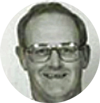

Textbooks wing their way to Fiji with the Royal New Zealand Air Force
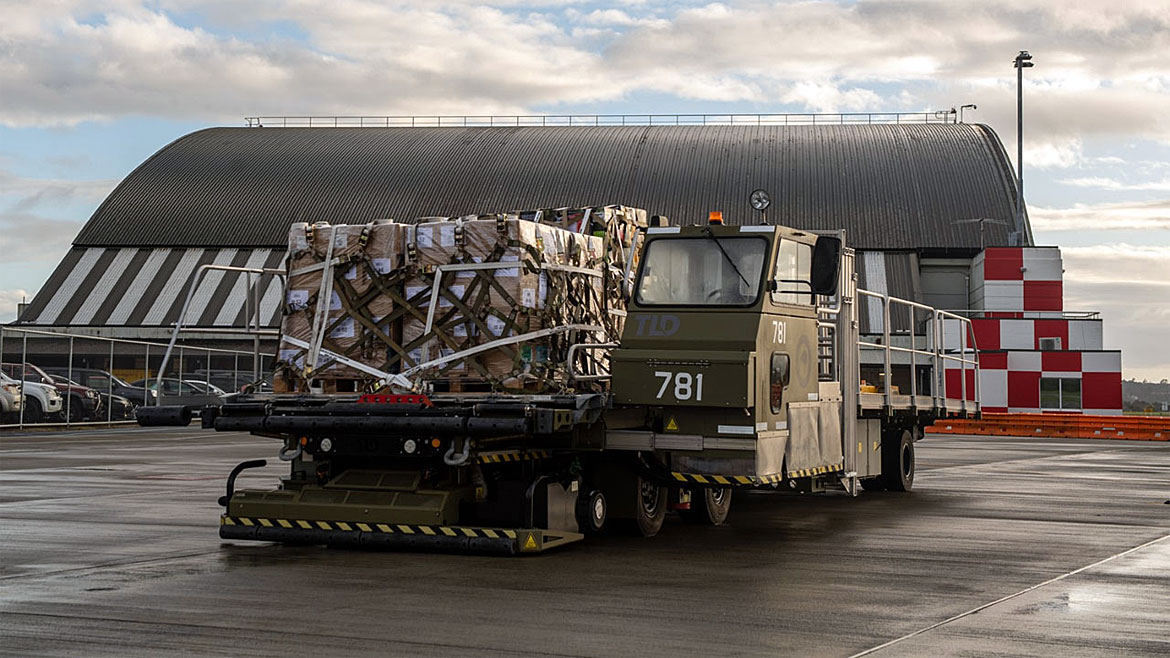
A Royal New Zealand Air Force (RNZAF) C-130 Hercules has delivered 8000 textbooks to Fiji’s Ministry of Education, destined for remote schools with no access to computers or the internet. The ESA Revision books, donated by the Fiji Association in Auckland Incorporated, and Learn Well Books, cover a mix of subjects for Year 11 to 13 students including English, biology, economics, physics, geography, accounting, maths and technology.
The C-130 Hercules which transported them, had deployed to Fiji to bring home New Zealand Army equipment on completion of Exercise Cartwheel 23. NZ Army personnel took part in the annual bilateral exercise, led by Republic of Fiji Military Forces and US Army Pacific, from 3-25 September.
scoop.co.nz
The C-130 Hercules which transported them, had deployed to Fiji to bring home New Zealand Army equipment on completion of Exercise Cartwheel 23. NZ Army personnel took part in the annual bilateral exercise, led by Republic of Fiji Military Forces and US Army Pacific, from 3-25 September.
scoop.co.nz

From: Fred Hebb, Gold River, NS
Subject: Post Air Force Careers
Hi Tony,
After retirement in 1995, I was soon bored sitting around home so took a job as a charter bus driver for a few years. Then, after moving to the South Shore of Nova Scotia, I took a job as a school bus driver and a driver trainer for the School Board. At the same time I worked for a travelling carnival in the Maritimes in the summer months. I now just work for East Coast Amusements from May until October. I also did a few Santa Claus gigs for Cabalas and still do Santa in the local area.
At 83 I'll soon have to slow down, but have no plans to do so in the near future. I also am a volunteer at the Martin’s River Fire Department when I can. I enjoy seeing C130s flying over my house when I’m home.
Fred
Subject: Post Air Force Careers
Hi Tony,
After retirement in 1995, I was soon bored sitting around home so took a job as a charter bus driver for a few years. Then, after moving to the South Shore of Nova Scotia, I took a job as a school bus driver and a driver trainer for the School Board. At the same time I worked for a travelling carnival in the Maritimes in the summer months. I now just work for East Coast Amusements from May until October. I also did a few Santa Claus gigs for Cabalas and still do Santa in the local area.
At 83 I'll soon have to slow down, but have no plans to do so in the near future. I also am a volunteer at the Martin’s River Fire Department when I can. I enjoy seeing C130s flying over my house when I’m home.
Fred
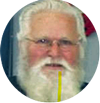

From: Ron Turley, Davao
Subject: Post Air Force Careers
Dear Tony,
I left the RAF when I was 47/48 years old in the middle of the military drawdown that was ongoing in the late '90s. To be honest, over the first 4 years it was a bit of a struggle at times. In retrospect, it would be a bit grand to describe any of my time since I left the RAF as a 'career'.
I worked, variously, as a logistics manager for a plastics extrusion company, self employed multi-drop HGV driver at LHR before becoming logistics manager for GE Lighting based in Italy. I also did some contracting and toyed with the world of the academe as well as picking up casual work as an interpreter/ translator.
Eventually, common sense struck and I realised that what I needed was a well paid job in a low tax area. And so I ended up working for Chevron Philips Petrochemical as the logistic specialist for a new polyethylene plant being constructed in Qatar. The job was big: my own port, warehousing and packaging facility covering a number of football pitches in area, loading facilities for 2 small (600 TEU) container ships and a tanker. Total staff about 200 and an average of 600 containers/day and 1.2 million tons a year. A few years later a second plant was added which, basically, doubled output.
I used the Old Bods Association to hire Karl Hibbert as warehouse manager who did a great job helping to set things up.
After about 3 years getting everything working, I found myself getting itchy feet again and was receiving offers from other companies in the Middle East. So, I composed my resignation letter and gave it to my boss and was told to wait a month. I did and was offered the new post of 'Company Coach'. This involved coaching middle management, mentoring locals, incident investigation etc. Great job where I could do essentially my own thing and I will freely admit that my old ISS notes were used on some course design work! Some of the leadership exercises bore a non-coincidental resemblance to those done in IOT.
During my time in Qatar, I married a lovely Filipina lassie and we now have two daughters of 18 and 16.
I retired to the Philippines at age 60 and we invested in property which is rented on Airbnb. We live in Davao on the island of Mindanao and split time in the Philippines with time in UK, covid permitting.
The latest venture is building a small village of 7 or 8 cottages on part of a defunct coconut plantation we bought on Samal Island just off Davao City. Currently setting up aquaponics tied to a tilapia fish tank. If I get this right, we will be pretty much self sufficient in greens, fish, pork and chicken. We also have a buffalo and sundry other critters. Am thinking of goats and eating rabbits.
I did try and take up golf but am still not old enough but have indulged in one 'toy', a 32ft Contessa sail boat in which I have sailed as far as Palau and spent time with the sea gypsies in the islands to the South of the Philippines.
As I said, I'm not really sure if any of this counts as a 'second career' but it sure has had a lot of variety and been a lot of fun. Let the adventure continue!
Yours aye,
Ron
Subject: Post Air Force Careers
Dear Tony,
I left the RAF when I was 47/48 years old in the middle of the military drawdown that was ongoing in the late '90s. To be honest, over the first 4 years it was a bit of a struggle at times. In retrospect, it would be a bit grand to describe any of my time since I left the RAF as a 'career'.
I worked, variously, as a logistics manager for a plastics extrusion company, self employed multi-drop HGV driver at LHR before becoming logistics manager for GE Lighting based in Italy. I also did some contracting and toyed with the world of the academe as well as picking up casual work as an interpreter/ translator.
Eventually, common sense struck and I realised that what I needed was a well paid job in a low tax area. And so I ended up working for Chevron Philips Petrochemical as the logistic specialist for a new polyethylene plant being constructed in Qatar. The job was big: my own port, warehousing and packaging facility covering a number of football pitches in area, loading facilities for 2 small (600 TEU) container ships and a tanker. Total staff about 200 and an average of 600 containers/day and 1.2 million tons a year. A few years later a second plant was added which, basically, doubled output.
I used the Old Bods Association to hire Karl Hibbert as warehouse manager who did a great job helping to set things up.
After about 3 years getting everything working, I found myself getting itchy feet again and was receiving offers from other companies in the Middle East. So, I composed my resignation letter and gave it to my boss and was told to wait a month. I did and was offered the new post of 'Company Coach'. This involved coaching middle management, mentoring locals, incident investigation etc. Great job where I could do essentially my own thing and I will freely admit that my old ISS notes were used on some course design work! Some of the leadership exercises bore a non-coincidental resemblance to those done in IOT.
During my time in Qatar, I married a lovely Filipina lassie and we now have two daughters of 18 and 16.
I retired to the Philippines at age 60 and we invested in property which is rented on Airbnb. We live in Davao on the island of Mindanao and split time in the Philippines with time in UK, covid permitting.
The latest venture is building a small village of 7 or 8 cottages on part of a defunct coconut plantation we bought on Samal Island just off Davao City. Currently setting up aquaponics tied to a tilapia fish tank. If I get this right, we will be pretty much self sufficient in greens, fish, pork and chicken. We also have a buffalo and sundry other critters. Am thinking of goats and eating rabbits.
I did try and take up golf but am still not old enough but have indulged in one 'toy', a 32ft Contessa sail boat in which I have sailed as far as Palau and spent time with the sea gypsies in the islands to the South of the Philippines.
As I said, I'm not really sure if any of this counts as a 'second career' but it sure has had a lot of variety and been a lot of fun. Let the adventure continue!
Yours aye,
Ron

From: Arthur Rowland, St. Ives, Cambs
Subject: Post Air Force Careers
Hi Tony,
For myself, I joined St John's College Cambridge as "Bursar's Agent". This involved looking after all our considerable property and Farm holdings as well as finance, insurances, Choir finance, and being Company Secretary for about 6 of the College subsidiary holdings. It was a lovely place to work, and I enjoyed, and still enjoy, friendships made with the Fellows and staff, and especially the tenant farmers whom I met when visiting the farms around the country.
All the best,
Arthur
Subject: Post Air Force Careers
Hi Tony,
For myself, I joined St John's College Cambridge as "Bursar's Agent". This involved looking after all our considerable property and Farm holdings as well as finance, insurances, Choir finance, and being Company Secretary for about 6 of the College subsidiary holdings. It was a lovely place to work, and I enjoyed, and still enjoy, friendships made with the Fellows and staff, and especially the tenant farmers whom I met when visiting the farms around the country.
All the best,
Arthur


From: Stephen Davey, Tadcaster, North Yorks
Subject: Post Air Force Careers
Tony,
I left RAF in the December of 1980 and in the following January I secured employment with a commercial catering equipment manufacturer in Horsforth, near Leeds. I stayed with them for a couple of years then joined my Auntie and Uncle who had their own business. Following that, I was a offered a job with Airwork but in the meantime I had temporary employment at Harewood House near Leeds; my brother-in-law was the gardens' manager there. It's fair to say I learnt more about practical jobs than anywhere else and also my knowledge of horticulture and plants was substantially improved in my stay there. I can honestly say it was the most enjoyable time I have ever had.
Regards,
Steve
Subject: Post Air Force Careers
Tony,
I left RAF in the December of 1980 and in the following January I secured employment with a commercial catering equipment manufacturer in Horsforth, near Leeds. I stayed with them for a couple of years then joined my Auntie and Uncle who had their own business. Following that, I was a offered a job with Airwork but in the meantime I had temporary employment at Harewood House near Leeds; my brother-in-law was the gardens' manager there. It's fair to say I learnt more about practical jobs than anywhere else and also my knowledge of horticulture and plants was substantially improved in my stay there. I can honestly say it was the most enjoyable time I have ever had.
Regards,
Steve


From: Syd Avery, Alicante
Subject: Life After The Mob.
Hi, Tony, and all my reader,
Career after the Royal Air Force, well, I suppose I’m careering steadily towards oblivion. But there, ain’t we all?
The first venture in 1983 was the purchase of a private hotel/B+B in Cliftonville, Margate. This was on the seafront, the sea was kept at bay by a large grassed area, with a band stand in the middle, and a 20 mtr. cliff. We operated this for some 5 years, made many good friends had great fun (most of the time!!) and never made a loss. Our first full operating year, the profit was... one penny! Plus of course, our living. During the off seasons, I worked as a “casual” (as and when required) at Kent International Airport, Manston (MSE).
Seeing the writing on the wall about the tourism industry on the Kent coast, we sold the hotel and moved to the other side of Margate, Westbrook. This was a large 5 bedroomed house which we intended to convert into a B+B for crews night stopping at MSE. This was overtaken when the owner told us that she looked after amentally handicapped educationally challenged couple, and would we take them on. Being paid as their carers’ had no influence on our decision. We were interviewed by the DSS and asked why did we think that we had the experience to look after the young couple. “Er…" sez I, “…we did run a holiday hotel for 5 years... “That will do.” Said our interviewer. I found that this was most rewarding, seeing the young couple develop their skills and confidence to an extent that they reached a point where they left us and were placed in an apartment, and were able to look after themselves.
I was still working as a casual at MSE. At times, I was Airport Duty Manager, quite interesting, learnt a lot, even though a casual had to be supervised by a member of permanent staff. Didn’t see many of them around! It was during this time that a friend who worked as a ground agent for a freight airline put my name forward for a Loadmaster position with Intavia/African International.
Subject: Life After The Mob.
Hi, Tony, and all my reader,
Career after the Royal Air Force, well, I suppose I’m careering steadily towards oblivion. But there, ain’t we all?
The first venture in 1983 was the purchase of a private hotel/B+B in Cliftonville, Margate. This was on the seafront, the sea was kept at bay by a large grassed area, with a band stand in the middle, and a 20 mtr. cliff. We operated this for some 5 years, made many good friends had great fun (most of the time!!) and never made a loss. Our first full operating year, the profit was... one penny! Plus of course, our living. During the off seasons, I worked as a “casual” (as and when required) at Kent International Airport, Manston (MSE).
Seeing the writing on the wall about the tourism industry on the Kent coast, we sold the hotel and moved to the other side of Margate, Westbrook. This was a large 5 bedroomed house which we intended to convert into a B+B for crews night stopping at MSE. This was overtaken when the owner told us that she looked after a
I was still working as a casual at MSE. At times, I was Airport Duty Manager, quite interesting, learnt a lot, even though a casual had to be supervised by a member of permanent staff. Didn’t see many of them around! It was during this time that a friend who worked as a ground agent for a freight airline put my name forward for a Loadmaster position with Intavia/African International.

They took me on, and there I worked alongside Jack Gordon again. The aeroplanes were DC-8s, great machines and operated on contract to Alitalia out of Rome to India, Singapore, Australia, Libya and South Africa.
I was dumped by them after a couple of years. Still don’t know why. After a couple of months, I was taken on again as a Loadmaster with DC-8s by Mike Kruger, a Zimbabwian. MK Airlines, 1 x DC-8. Two crews, me the only Brit!
It was a great atmosphere, great guys, tremendous fun. Mike bought another DC 8, which we promptly landed 8kms. short of the runway at Kano. We all deplaned smartly with no injuries.
I was dumped by them after a couple of years. Still don’t know why. After a couple of months, I was taken on again as a Loadmaster with DC-8s by Mike Kruger, a Zimbabwian. MK Airlines, 1 x DC-8. Two crews, me the only Brit!
It was a great atmosphere, great guys, tremendous fun. Mike bought another DC 8, which we promptly landed 8kms. short of the runway at Kano. We all deplaned smartly with no injuries.
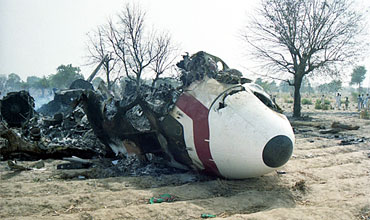
The aeroplane didn’t look too happy!
The penultimate chapter, again in the transportation sector was that I gained a Public Service Vehicle licence and became a coach driver. Initially with Kingsferry in the Medway Towns and London, then lastly with National Express between Dover and London. (Wondered how James Bond obtained his 007 prefix? Well, the Dover-London Victoria service was … 007, and the story goes that Mr Fleming was pondering this name etc., and he saw the 007 pass his house. Ergo, Q.E.D James Bond’s 007 was born.)
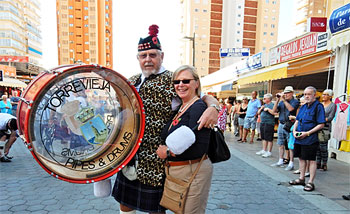
Retired in August 2007 a couple of months prior to becoming a Pensionista and immediately moved to Spain. My Partner of 21 years, Rita, and I now spend our time between Belgium and Spain. In my time here, I have become a Costalero in a Cofradia, carrying the Paso in the Semana Santa (Easter) parades, a very important time in the Spanish religious calendar, and bass drummer in Torrevieja Pipes and Drums! Both activities curtailed by a disintegrating body.
Cheers!
Syd
Cheers!
Syd
Here are the top ten military transport aircraft and their capabilities
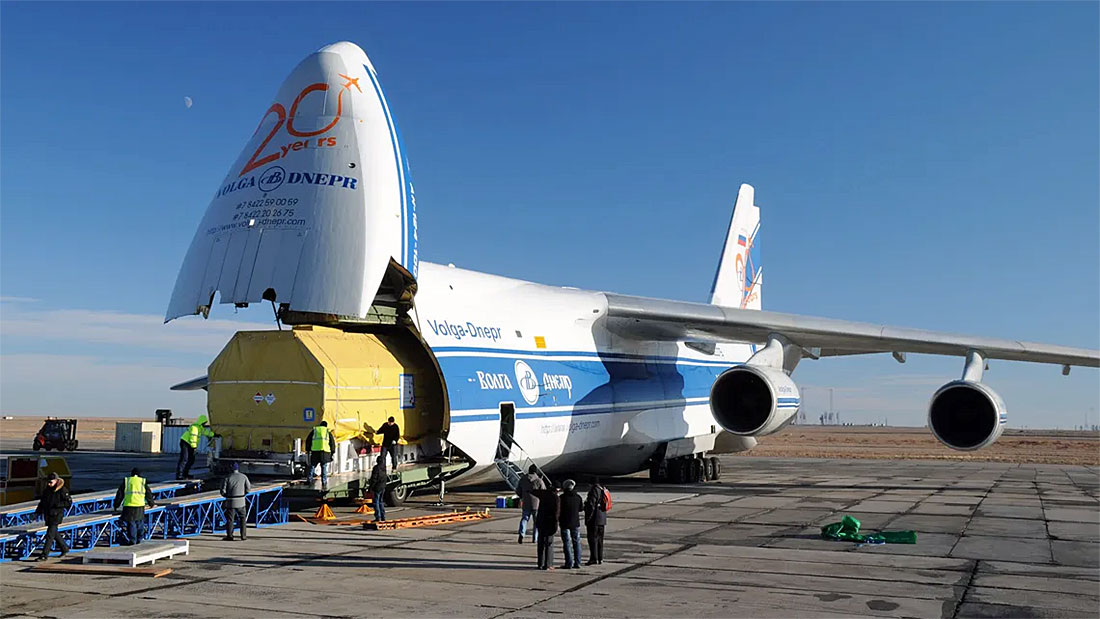
The world's second heaviest cargo aircraft ever produced makes the top of our list.
simpleflying.com
Top 10: The World's Best Military Transport Aircraft
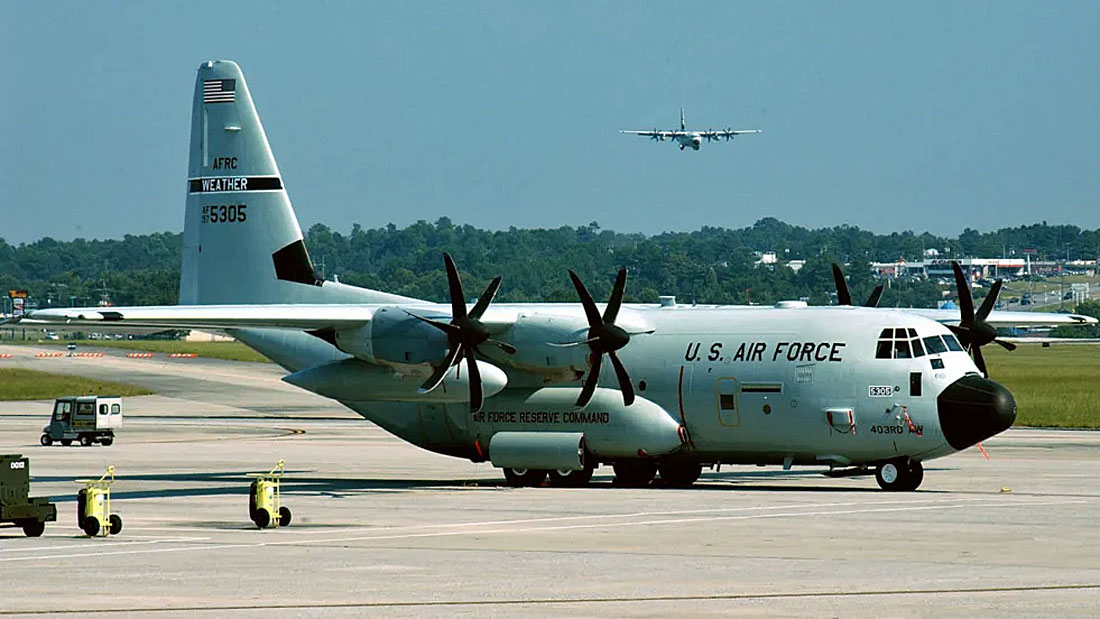
The C-130J Super Hercules is the newest version of the C-130 Hercules developed by Lockheed Martin. It is a medium tactical transporter powered by four turboprop engines. The aircraft performed its first flight on April 5, 1996, and more than 500 examples of the jet have been produced. The aircraft has a capacity of 96 passengers and a 19-ton cargo capacity.
The aircraft has an operating range of 1,800 NM (3,300 km). The aircraft remains in service with 26 operators, prominently national air forces, in 22 countries. The C-130J is the only model of the original Hercules that is currently in production.
The aircraft has an operating range of 1,800 NM (3,300 km). The aircraft remains in service with 26 operators, prominently national air forces, in 22 countries. The C-130J is the only model of the original Hercules that is currently in production.
10 - Lockheed Martin C-130J Super Hercules
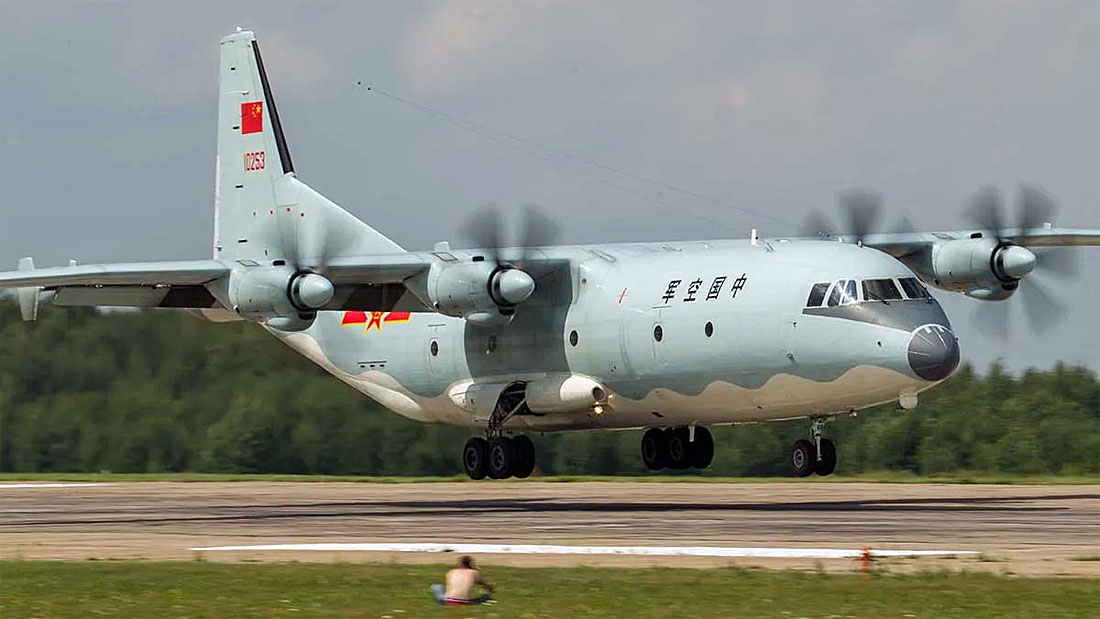
The Shaanxi Y-9 is a medium military transport aircraft produced by Shaanxi Aircraft Company in China. The aircraft is a stretched version of the Shaanxi Y-8F. The Y-8F is one of China's most popular transport aircraft used for civilian and military purposes.
The Y-9 commenced its first flight in November 2010. The aircraft has a capacity of 106 paratroopers and a 25-ton cargo capacity. The aircraft is powered by four turboprop engines with an operating range of 1,200 NM (2,200 km). The aircraft remains in service with the Chinese Air Force and Myanmar Air Force as the largest operators.
The Y-9 commenced its first flight in November 2010. The aircraft has a capacity of 106 paratroopers and a 25-ton cargo capacity. The aircraft is powered by four turboprop engines with an operating range of 1,200 NM (2,200 km). The aircraft remains in service with the Chinese Air Force and Myanmar Air Force as the largest operators.
9 - Shaanxi Y-9
8 - Airbus A400M Atlas
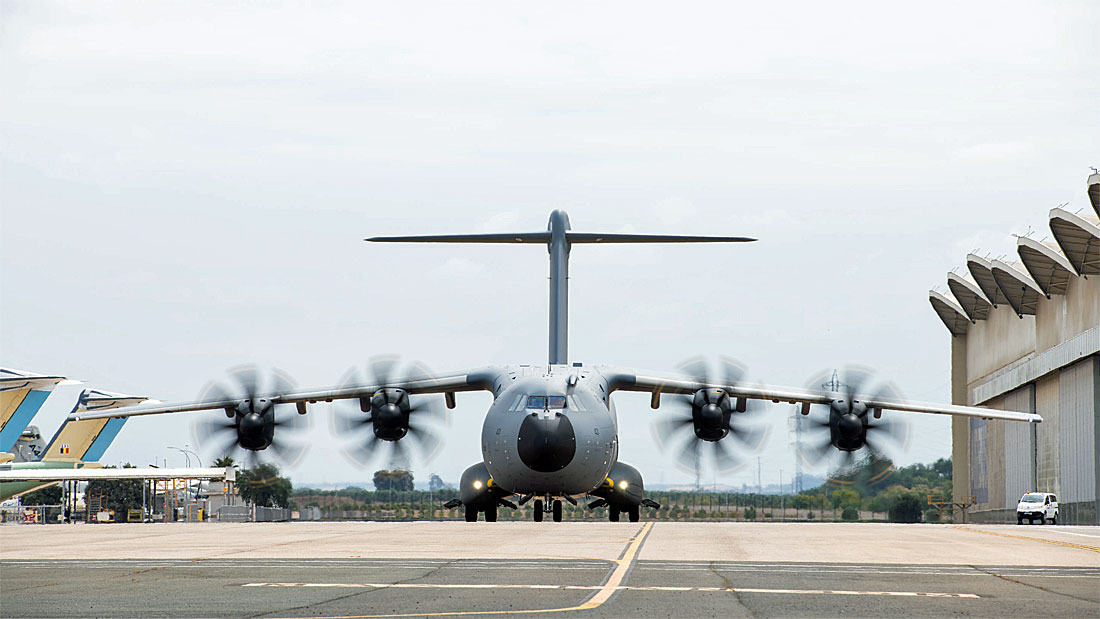
The A400M Atlas is a tactical airlifter and transport aircraft developed by Airbus Defense and Space. The aircraft commenced its first flight in December 2009. The aircraft has a capacity of 106 fully equipped paratroopers and a 37-ton cargo capacity. The aircraft is powered by four Europrop turboprop engines with an operating range of 1,800 NM (3,300 km).
The A400M is also capable of performing aerial refueling and medical evacuation when fitted with appropriate equipment. Some of the major users of the aircraft are the air forces of Germany, France, Spain, Turkey, and the Royal Air Force of the UK.
The A400M is also capable of performing aerial refueling and medical evacuation when fitted with appropriate equipment. Some of the major users of the aircraft are the air forces of Germany, France, Spain, Turkey, and the Royal Air Force of the UK.
7 - Kawasaki C-2
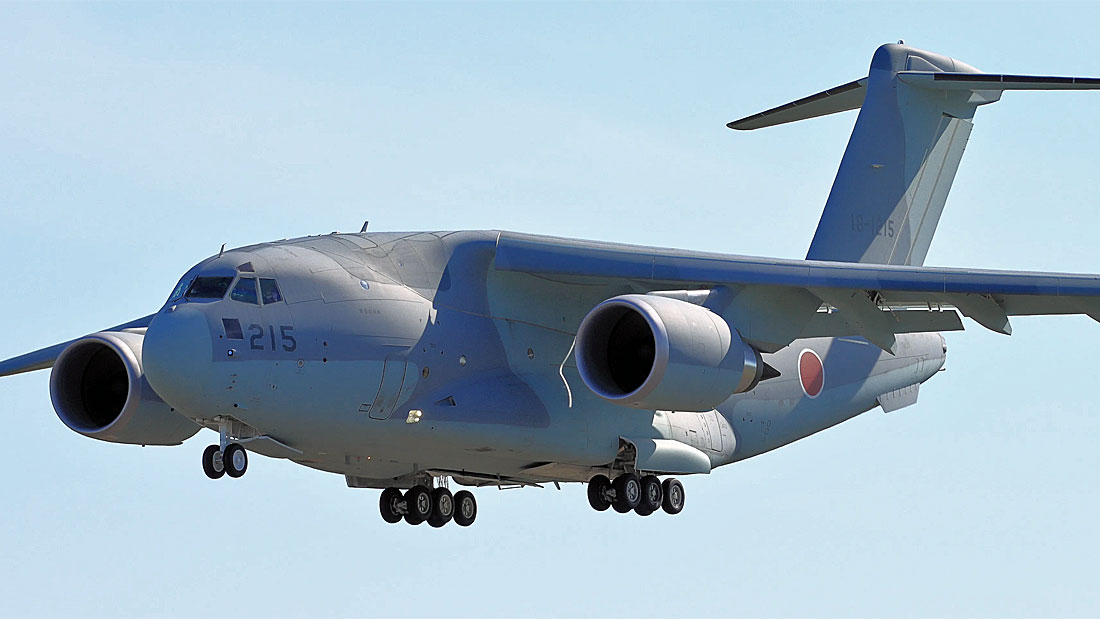
The Kawasaki C-2 is a medium military transport aircraft that is known for its long range and high speed in the category. Manufactured by the Kawasaki Aerospace Company of Japan, the aircraft commenced its first flight in January 2010. The aircraft has a maximum payload capacity of 37.5 tons.
Powered by two General Electric CF6-80 turbofan engines, providing a thrust of 60,000 lbf (266 kN). With a maximum speed of Mach 0.82 (570 mph, 920 km/h, it has a maximum operating range of 4,100 NM (7,600 km) with a payload of 20 tons. With a total of 15 examples produced to date, the Japan Air Self-Defense Force is the primary operator.
Powered by two General Electric CF6-80 turbofan engines, providing a thrust of 60,000 lbf (266 kN). With a maximum speed of Mach 0.82 (570 mph, 920 km/h, it has a maximum operating range of 4,100 NM (7,600 km) with a payload of 20 tons. With a total of 15 examples produced to date, the Japan Air Self-Defense Force is the primary operator.
6 - Ilyushin II-76
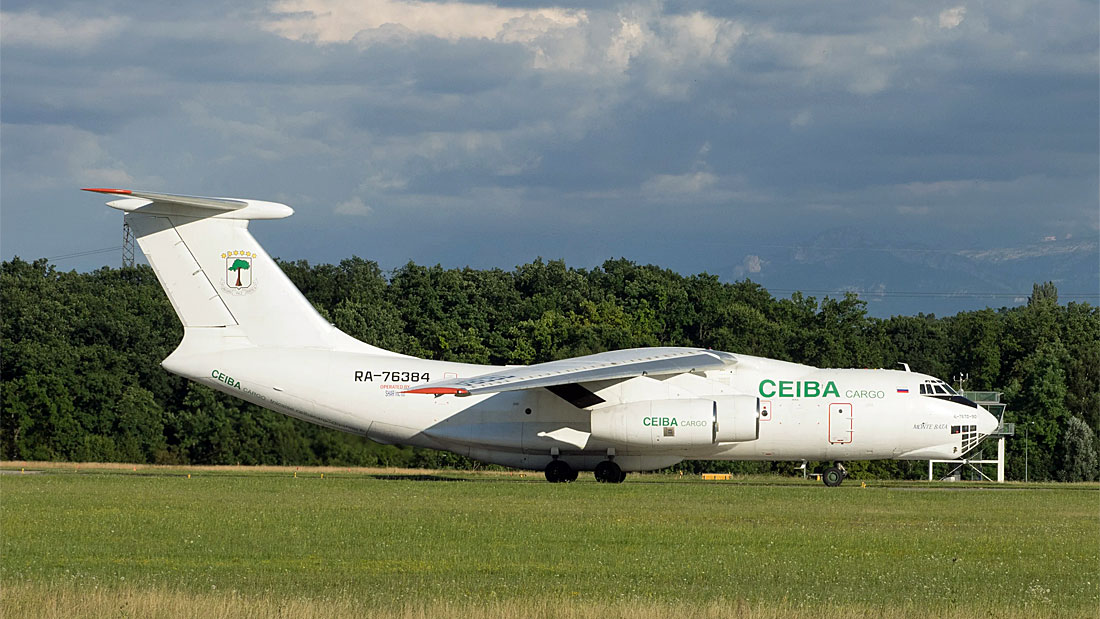
The Ilyushin II-76 is a multi-purpose strategic airlifter designed by the Soviet Union’s Ilyushin Design Bureau in 1967. The aircraft program was launched to replace the Antonov An-12 to deliver heavy cargo to remote areas. It is a high-wing freighter with four turbofan engines and a T-tail.
The aircraft performed its first flight on March 25, 1971, and nearly 1,000 examples of the jet have been produced to date. The aircraft has a whopping 60-ton cargo capacity. The aircraft has an operating range of 2,400 NM (4,400 km). The aircraft remains in production and in service with worldwide operators, including the Air Forces of Russia, Ukraine, and India.
The aircraft performed its first flight on March 25, 1971, and nearly 1,000 examples of the jet have been produced to date. The aircraft has a whopping 60-ton cargo capacity. The aircraft has an operating range of 2,400 NM (4,400 km). The aircraft remains in production and in service with worldwide operators, including the Air Forces of Russia, Ukraine, and India.
5 - Xian Y-20
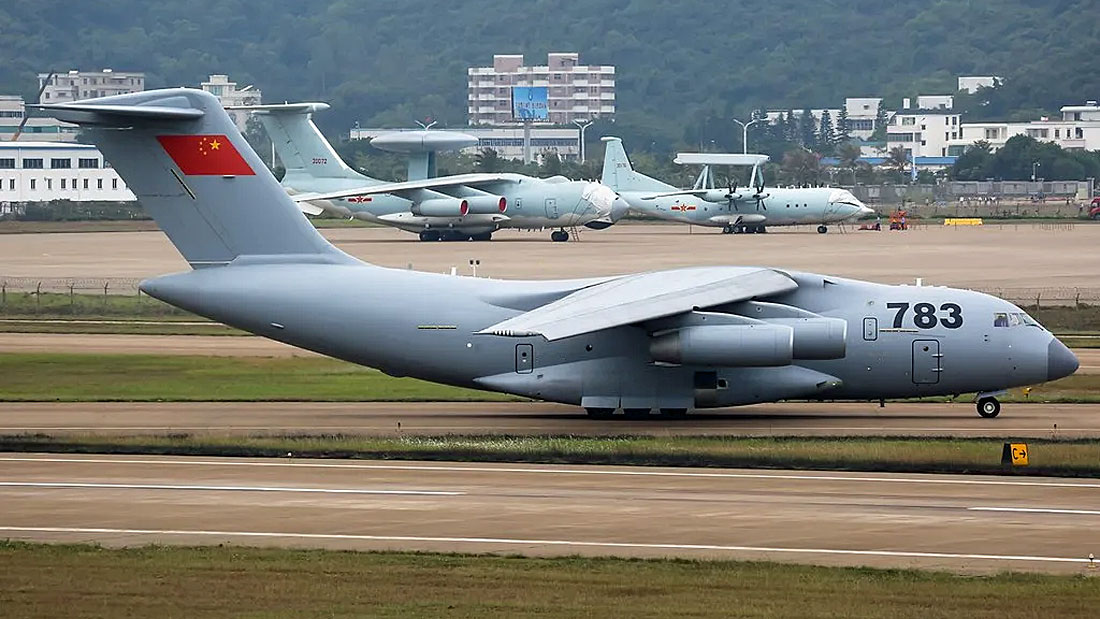
The Xian Y-20 is a strategic transport aircraft developed by Xian Aircraft Industrial Corporation of China, with assistance from Russia and Ukraine. It became the first cargo aircraft in China to use three-dimensional printing technology. The aircraft performed its first flight on January 26, 2013, and a total of 52 examples have been produced to date.
The aircraft has a cargo capacity of 66 tons. It is capable of transporting up to two Type 15 tanks or 1 Type 99A tank over a distance of 4,200 NM (7,800 km). The aircraft remains in production and service primarily with the Chinese Air Force.
The aircraft has a cargo capacity of 66 tons. It is capable of transporting up to two Type 15 tanks or 1 Type 99A tank over a distance of 4,200 NM (7,800 km). The aircraft remains in production and service primarily with the Chinese Air Force.
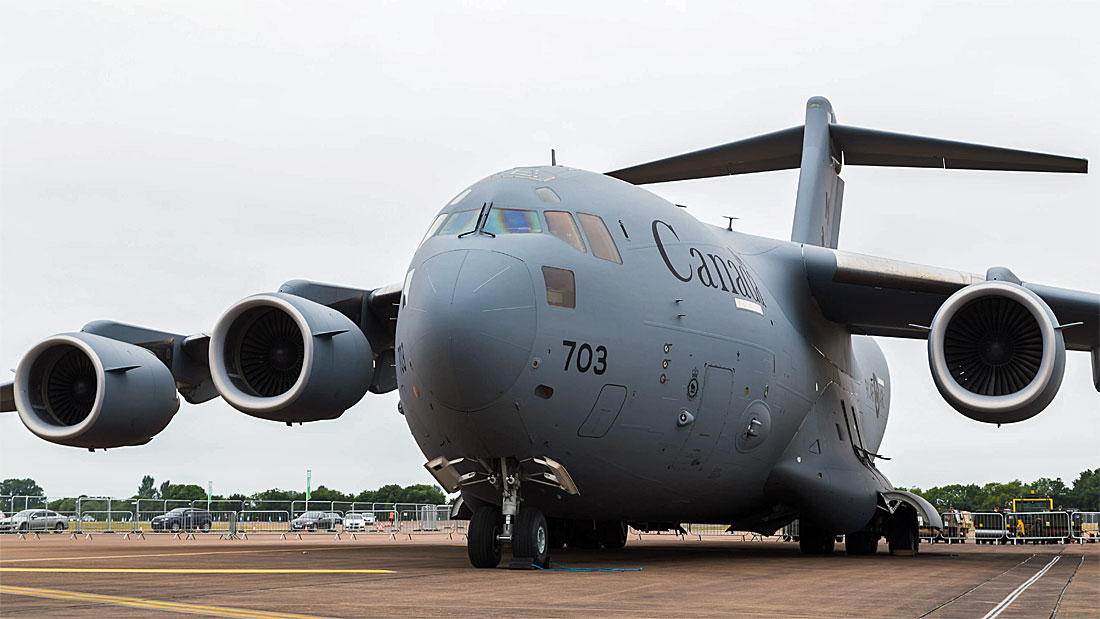
The workhorse of the United States Air Force (USAF), the C-17 Globemaster III is a large military transport developed by McDonnell Douglas in the 1980s. The aircraft is capable of performing strategic and tactical airlift missions, transporting paratroops and cargo worldwide.
The aircraft performed its first flight on September 15, 1991, and a total of 280 examples have been produced between 1991 and 2015. The aircraft can carry 102 paratroops and has a cargo capacity of 77.5 tons. Powered by four turbofan engines, the aircraft has a range of 2,420 NM (4,480 km). The USAF remains the largest operator of the aircraft, with 222 examples in service.
The aircraft performed its first flight on September 15, 1991, and a total of 280 examples have been produced between 1991 and 2015. The aircraft can carry 102 paratroops and has a cargo capacity of 77.5 tons. Powered by four turbofan engines, the aircraft has a range of 2,420 NM (4,480 km). The USAF remains the largest operator of the aircraft, with 222 examples in service.
4 - Boeing C-17 Globemaster III
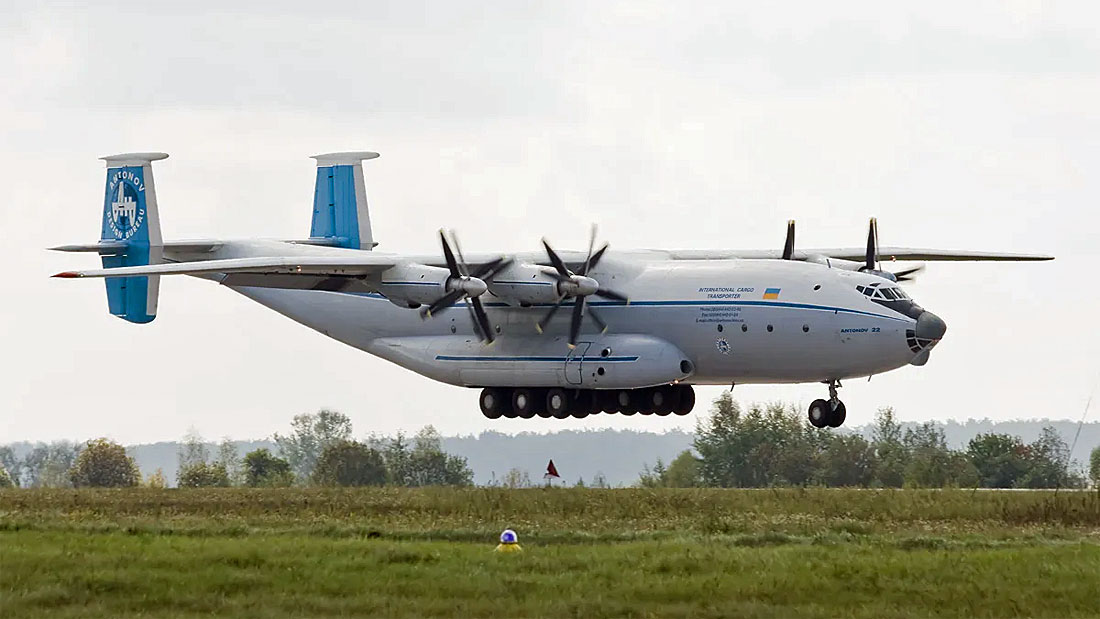
The Antonov An-22 is the world’s largest turboprop aircraft. It was designed as a strategic airlifter by the Soviet Union’s Antonov Design Bureau in 1964. The aircraft was designed to supplement the Antonov An-8 and An-12 to deliver heavy cargo to remote areas. The aircraft performed its first flight on February 27, 1965, and 68 examples of the jet were produced between 1966 and 1976.
With seating for 29 passengers, the aircraft has a maximum cargo capacity of 80 tons. The aircraft has an operating range of 2,700 NM (5,000 km). The aircraft is primarily used by the Russian Aerospace Force
With seating for 29 passengers, the aircraft has a maximum cargo capacity of 80 tons. The aircraft has an operating range of 2,700 NM (5,000 km). The aircraft is primarily used by the Russian Aerospace Force
3 - Antonov An-22
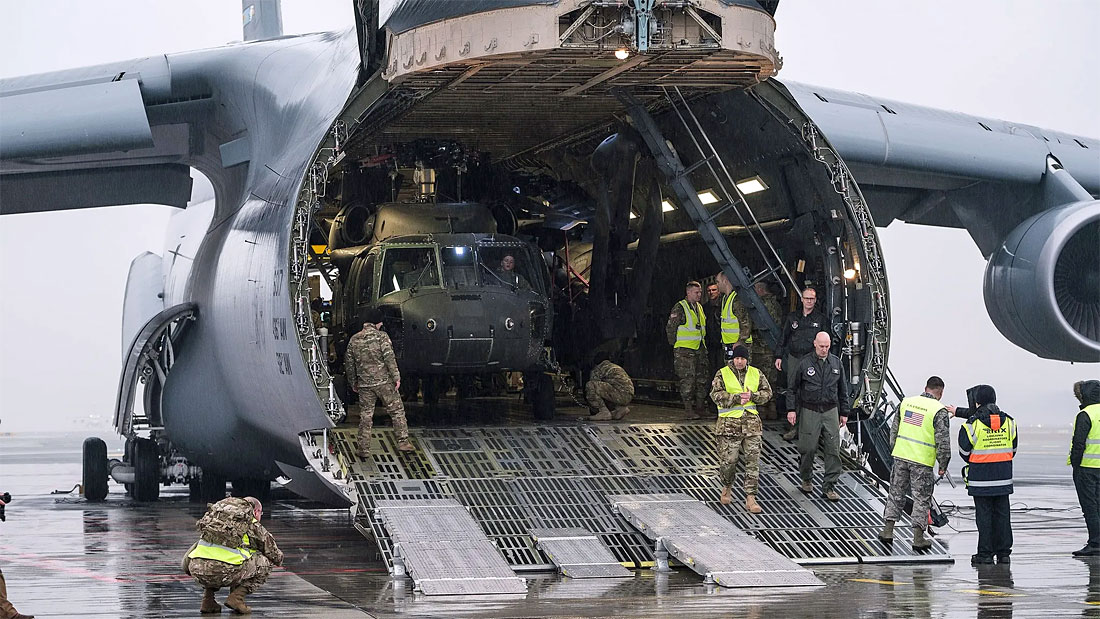
Another workhorse of the USAF, the C-5M is a large military transport aircraft built for the USAF to transport heavy cargo to intercontinental ranges. The aircraft has the capability of carrying oversized and outsized loads, including all air-certifiable cargo. The aircraft performed its first flight on June 30, 1968, and 131 examples of the jet were produced between 1968 and 1989.
The aircraft has a maximum cargo capacity of 127.5 tons. Powered by four GE F-138 turbofan engines, the aircraft has an operating range of 4,800 NM (8,900 km). The aircraft is primarily used by the USAF.
The aircraft has a maximum cargo capacity of 127.5 tons. Powered by four GE F-138 turbofan engines, the aircraft has an operating range of 4,800 NM (8,900 km). The aircraft is primarily used by the USAF.
2 - Lockheed Martin C-5M Super Galaxy
1 - Antonov An-124
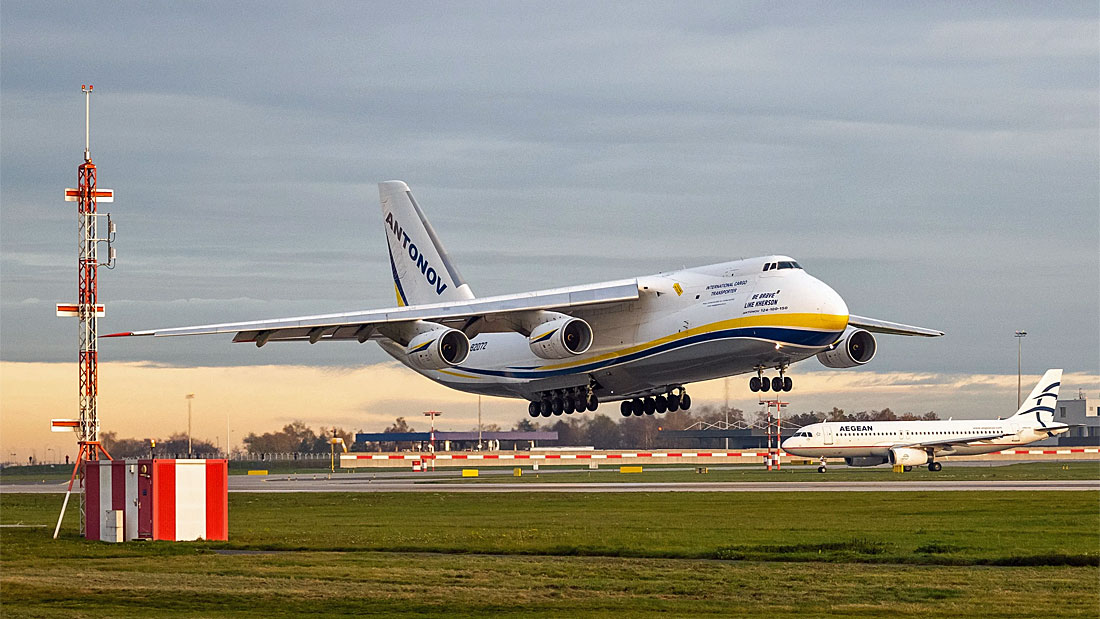
After the unfortunate demise of the Antonov 225 Mriya, the An-124 remains the largest military aircraft in service. The heaviest operating cargo aircraft was developed by the Soviet Union’s Antonov Design Bureau in the late 1970s. The aircraft performed its first flight on December 24, 1982, and 55 examples of the jet were produced between 1982 and 2004.
With seating for 88 passengers, the aircraft has a maximum cargo capacity of 150 tons. Powered by four turbofan engines, the aircraft has an operating range of 6,200 NM (11,500 km) with a 40-ton payload. Russia’s Volga-Dnepr and Ukraine’s Antonov Airlines are the largest operators of the type.
With seating for 88 passengers, the aircraft has a maximum cargo capacity of 150 tons. Powered by four turbofan engines, the aircraft has an operating range of 6,200 NM (11,500 km) with a 40-ton payload. Russia’s Volga-Dnepr and Ukraine’s Antonov Airlines are the largest operators of the type.

From: Terry Jackson, St Albans, Herts
Subject: Post Air Force Careers
Hi Tony,
In 1978 I was a Flight Sergeant on the Supply Squadron RAF Hendon. In April that year I was promoted to Warrant Officer with a posting that did not suit my personal situation. I had just completed 22 yrs service so decided to take early retirement. It was a jump into the unknown. It all happened very quickly and I had no job lined up. I made a few enquiries with very little response. And then, an enormous stroke of good fortune. A friend of mine who worked in the Supply Control Centre at RAF Hendon phoned me to say that he had had dinner with the Personnel Manager at Marconi Avionics and that he would like to talk to me. Marconi Avionics at that time were developing the Nimrod AEW aircraft due to replace the Shackleton.
The aircraft was due to go into production and Marconi were looking for a Logistics Manager. I went for an interview with a briefcase of supporting documents. They were never asked for which was disappointing as I had worked hard to prepare for the inevitable return to civilian life. What was more important was the work ethic I would bring after 22 years in the RAF. After a brief interview I was offered the job.
I took up post in July 1978. After the computerised supply system now established in the RAF, Marconi’s manual system came as a bit of a shock. The stock control system was a one woman band and she was on holiday. The stock control staff were struggling to prepare picking notes for manufacturing. I reorganised stock control into some sort of logic and explained how it would work. Picking notes were now easier to compile. The one woman band returned from holiday, was not happy and left within the week. A great start to civilian life. The Nimrod AEW was a very complex system and the interior of the aircraft had limited space to accommodate all the electronics.
Regular visits to RAF Waddington where the Nimrod was due to be based helped wean me off life in the RAF. The difficulties eventually proved too much and on December the 5th 1986 the contract was cancelled. My 50th birthday fell on the 7th December. A memorable birthday present. My logistics team and myself worked on for a further six months disposing of equipment from the project.
I was now looking for another job. I was fortunate to see an advert for a company looking for a Logistics Manager. Logistics had now become the “in word”. Lorries now had the word “Logistics” all over their bodywork. The computer company looking for a Logistics Manager was located in Thame Oxfordshire. I lived in St Albans. However, the job came with a car and I was offered the job. I worked with Computer Repair Centre until my retirement in 2001. I was fortunate enough to have had a full working life. Although I enjoyed interesting and challenging work in civilian life, nothing compared with my experiences in the Royal Air Force.
Terry
Subject: Post Air Force Careers
Hi Tony,
In 1978 I was a Flight Sergeant on the Supply Squadron RAF Hendon. In April that year I was promoted to Warrant Officer with a posting that did not suit my personal situation. I had just completed 22 yrs service so decided to take early retirement. It was a jump into the unknown. It all happened very quickly and I had no job lined up. I made a few enquiries with very little response. And then, an enormous stroke of good fortune. A friend of mine who worked in the Supply Control Centre at RAF Hendon phoned me to say that he had had dinner with the Personnel Manager at Marconi Avionics and that he would like to talk to me. Marconi Avionics at that time were developing the Nimrod AEW aircraft due to replace the Shackleton.
The aircraft was due to go into production and Marconi were looking for a Logistics Manager. I went for an interview with a briefcase of supporting documents. They were never asked for which was disappointing as I had worked hard to prepare for the inevitable return to civilian life. What was more important was the work ethic I would bring after 22 years in the RAF. After a brief interview I was offered the job.
I took up post in July 1978. After the computerised supply system now established in the RAF, Marconi’s manual system came as a bit of a shock. The stock control system was a one woman band and she was on holiday. The stock control staff were struggling to prepare picking notes for manufacturing. I reorganised stock control into some sort of logic and explained how it would work. Picking notes were now easier to compile. The one woman band returned from holiday, was not happy and left within the week. A great start to civilian life. The Nimrod AEW was a very complex system and the interior of the aircraft had limited space to accommodate all the electronics.
Regular visits to RAF Waddington where the Nimrod was due to be based helped wean me off life in the RAF. The difficulties eventually proved too much and on December the 5th 1986 the contract was cancelled. My 50th birthday fell on the 7th December. A memorable birthday present. My logistics team and myself worked on for a further six months disposing of equipment from the project.
I was now looking for another job. I was fortunate to see an advert for a company looking for a Logistics Manager. Logistics had now become the “in word”. Lorries now had the word “Logistics” all over their bodywork. The computer company looking for a Logistics Manager was located in Thame Oxfordshire. I lived in St Albans. However, the job came with a car and I was offered the job. I worked with Computer Repair Centre until my retirement in 2001. I was fortunate enough to have had a full working life. Although I enjoyed interesting and challenging work in civilian life, nothing compared with my experiences in the Royal Air Force.
Terry


From: Don Hatton, Liscomb, NS
Subject: Post Air Force Careers
Hi Tony,
My second career wasn’t very complicated. When it was decided that we would retire and move to the family homestead of over 200 years in a remote fishing village along the eastern shore of Nova Scotia, I was asked ‘what do you plan to do there?” I said we are going to fish, fight, farm and f - - k. That raised a few eyebrows followed by the question “What does Fern think of that?”. Fern is good with that though not too keen on fishing.
Prior to retirement I went to night school and took cabinet making, the most important thing I took away was how to correct mistakes, and I used that skill more times than I care to admit. Some bury their mistakes, I burned mine. We spent numerous hours doing the finish work and cabinetry, doing all the woodwork from rough sawn, even kiln drying the wood.
In addition to my construction endeavours (converting our cottage), I enjoyed gardening, hunting, fishing, boating, four wheeling (crossed Newfoundland on the former rail beds in ‘98), spending time cooking for the boys at the hunting camp, volunteering, and enjoying quiet family time. Took up beer and wine making and continued to play hockey til age 62 when a TIA [Transient Ischemic Attack - a stroke that lasts only a few minutes] shortened that career. Throw in some cruises and wintering in Florida.
Fern enjoyed gardening, the peacefulness of the seashore, her church and spending time in the kitchen. Retirement gave us lots of time to spend with our families which we missed while serving. Unfortunately, most of the above came to a sudden whoa; Fern had a fall fracturing her hip, requiring surgery and extensive rehab. It did take some time not to think about having to accomplish something every day, but I did eventually learn to drag my feet.
I have been retired now longer than my career in the Air Force (31 yrs),but I still miss the grey socks (read freebies) and Fridays (read TGIF) and very importantly all the friends we made on the various postings. Thus, both of my careers have been rewarding and memorable, and for that Fern and I are thankful.
Take care, be safe
Don
Subject: Post Air Force Careers
Hi Tony,
My second career wasn’t very complicated. When it was decided that we would retire and move to the family homestead of over 200 years in a remote fishing village along the eastern shore of Nova Scotia, I was asked ‘what do you plan to do there?” I said we are going to fish, fight, farm and f - - k. That raised a few eyebrows followed by the question “What does Fern think of that?”. Fern is good with that though not too keen on fishing.
Prior to retirement I went to night school and took cabinet making, the most important thing I took away was how to correct mistakes, and I used that skill more times than I care to admit. Some bury their mistakes, I burned mine. We spent numerous hours doing the finish work and cabinetry, doing all the woodwork from rough sawn, even kiln drying the wood.
In addition to my construction endeavours (converting our cottage), I enjoyed gardening, hunting, fishing, boating, four wheeling (crossed Newfoundland on the former rail beds in ‘98), spending time cooking for the boys at the hunting camp, volunteering, and enjoying quiet family time. Took up beer and wine making and continued to play hockey til age 62 when a TIA [Transient Ischemic Attack - a stroke that lasts only a few minutes] shortened that career. Throw in some cruises and wintering in Florida.
Fern enjoyed gardening, the peacefulness of the seashore, her church and spending time in the kitchen. Retirement gave us lots of time to spend with our families which we missed while serving. Unfortunately, most of the above came to a sudden whoa; Fern had a fall fracturing her hip, requiring surgery and extensive rehab. It did take some time not to think about having to accomplish something every day, but I did eventually learn to drag my feet.
I have been retired now longer than my career in the Air Force (31 yrs),but I still miss the grey socks (read freebies) and Fridays (read TGIF) and very importantly all the friends we made on the various postings. Thus, both of my careers have been rewarding and memorable, and for that Fern and I are thankful.
Take care, be safe
Don


There's an article from Michael (OBie) O'Brien about his global meanderings which appears in the original edition of the newsletter, but has been omitted from the Light version because of time constraints.

From: Neville Whitham, Preston, Lancs
Subject: Post Air Force Careers
Hi Tony,
At the age of 47, I chose a second career in Health and Safety, having seen out my last 15 months 'in the mob' in a similar role at Brize Norton. Leaving with a handful of IOSH certificates and then completing a NEBOSH Gen Cert course for resettlement, I set about seeking employment opportunities. First up was as a training officer with 'Training West Lancashire', working out of Skelmersdale, Preston and Bolton, implementing training regimes, consisting of CV writing, interview techniques, H&S and Food Hygiene courses, plus several other disciplines.
After 14 months and a CIPD qualification in 'Learning & Development' under my belt, I chose to move on to a more pure H&S role for an engineering company that built recycling vehicles and refuse trucks. I was their H, S and Training manager across 7 depots. After 11 months, the company lost a big contract with 'BIFFA' which then saw 6 fitters and myself receiving redundancy. At this point, I elected to carry out some freelancing work, writing safety management systems for companies and carrying out training for them, until the next big job role came along.
A further NEBOSH course beckoned in Construction Management, as I decided in funding myself for 'more feathers for my own cap', thereby qualifying and diversifying for many more roles in H&S! Woodward SHE of Carlisle had provided the course, where I stayed in a hotel for the duration, similar to the resettlement course that I attended at the same company.
The IOSH website forum provided a very useful route to obtaining my next job interview, having displayed my wares and availability to the health and safety world out there! I then received an invitation to a hotel in the Lake District where I was interviewed by two directors of a company and then treated to lunch. The result of this excursion landed me with a new role as Consultant H&S Adviser to DMA Safety Management Ltd, working from home but meeting for company days in Gosforth (Lake District).
To state that, the exposure to a variety of H&S disciplines was fantastic, is an understatement. The role involved working on ten construction sites around the country (all of which were listed buildings, some with 'new-builds' on site), carrying out drop on, monthly inspections (under CDM Regs) and training sessions, then compiling executive summaries for the directors on the H&S standards of their ten sites. These sites were located in Kent, Norfolk, Hertfordshire, Yorkshire, Cheshire, Greater Manchester and Lancashire.
Additionally, I carried out work at; UK Atomic Energy Authority (UKAEA), later to become branded as Sellafield Ltd, BAE Systems Submarine Solutions, based at Barrow-in- Furness - this was to to carry out refresher courses for their engineers, plus induction courses for new employees. These were day long courses followed up by an exam. I also trained clients in the then 4 day, IOSH Managing Safely Courses, who were; colleges, wind turbine engineers, energy (gas & electric) companies, construction outfits and other contractors.
Subject: Post Air Force Careers
Hi Tony,
At the age of 47, I chose a second career in Health and Safety, having seen out my last 15 months 'in the mob' in a similar role at Brize Norton. Leaving with a handful of IOSH certificates and then completing a NEBOSH Gen Cert course for resettlement, I set about seeking employment opportunities. First up was as a training officer with 'Training West Lancashire', working out of Skelmersdale, Preston and Bolton, implementing training regimes, consisting of CV writing, interview techniques, H&S and Food Hygiene courses, plus several other disciplines.
After 14 months and a CIPD qualification in 'Learning & Development' under my belt, I chose to move on to a more pure H&S role for an engineering company that built recycling vehicles and refuse trucks. I was their H, S and Training manager across 7 depots. After 11 months, the company lost a big contract with 'BIFFA' which then saw 6 fitters and myself receiving redundancy. At this point, I elected to carry out some freelancing work, writing safety management systems for companies and carrying out training for them, until the next big job role came along.
A further NEBOSH course beckoned in Construction Management, as I decided in funding myself for 'more feathers for my own cap', thereby qualifying and diversifying for many more roles in H&S! Woodward SHE of Carlisle had provided the course, where I stayed in a hotel for the duration, similar to the resettlement course that I attended at the same company.
The IOSH website forum provided a very useful route to obtaining my next job interview, having displayed my wares and availability to the health and safety world out there! I then received an invitation to a hotel in the Lake District where I was interviewed by two directors of a company and then treated to lunch. The result of this excursion landed me with a new role as Consultant H&S Adviser to DMA Safety Management Ltd, working from home but meeting for company days in Gosforth (Lake District).
To state that, the exposure to a variety of H&S disciplines was fantastic, is an understatement. The role involved working on ten construction sites around the country (all of which were listed buildings, some with 'new-builds' on site), carrying out drop on, monthly inspections (under CDM Regs) and training sessions, then compiling executive summaries for the directors on the H&S standards of their ten sites. These sites were located in Kent, Norfolk, Hertfordshire, Yorkshire, Cheshire, Greater Manchester and Lancashire.
Additionally, I carried out work at; UK Atomic Energy Authority (UKAEA), later to become branded as Sellafield Ltd, BAE Systems Submarine Solutions, based at Barrow-in- Furness - this was to to carry out refresher courses for their engineers, plus induction courses for new employees. These were day long courses followed up by an exam. I also trained clients in the then 4 day, IOSH Managing Safely Courses, who were; colleges, wind turbine engineers, energy (gas & electric) companies, construction outfits and other contractors.

Gaining 'CHAS' accreditations (Contractor Health & Safety) was high on the list of priorities for several companies, which I was able to implement for them, achieving 100% success rate. This entails putting a robust structure of auditable documents, inspections, training, etc in place, as part of a safety management system. One company that I carried out extensive work for, 'Premier Energy Solutions', went on to achieve Corgi Gas Company of the Year, 2009, primarily as a result of all their achievements in H&S, including the CHAS accreditation. Moving on, I booked myself onto another residential NEBOSH course in Carlisle again, this time in Environmental Management, to add to my lot.
My next role came much closer to home (2.5 miles away), applying for and gaining a Health & Safety position with a manufacturing company who built caravans, 'Lunar'. It was much less exciting here, which prompted me in gaining a higher qualification. I embarked on a further course of study, to gain a degree in Occupational Health & Safety Practice, which was duly achieved and presented to me at Grimsby Town Hall, of all places! I carried on with this position at Lunar for a while until one day, out of the blue, I received a call from an agency, effectively poaching me for a better role that they wanted me to fill. I believe that they found me through 'LinkedIn'. Two interviews later, with the directors there, and an agreed start date was established.
I started as the SHEQ Manager (Safety, Health, Environment and Quality) for a construction company, 'Roocroft Road Restraint Systems', who specialise in building parapets (over bridges), steel and concrete barriers on motorways and other road networks. Whilst there, I fulfilled the requirement to achieve ISO accreditations, through BSI, in 9001 - Quality Management, 14001 - Environmental Management, 18001 - OH&S Management. In order to gain Principal Contractor status with Highways England, I went on to achieve the ISO 44001 - Collaborative Working (Highways) and ISO 45001 - Occupational H&S Management and Roocroft RRS went on to be awarded PC status for several sector areas within the highways road networks.
Having reached a pinnacle within my H&S career, I then took the decision to retire, a few months prior to my 65th birthday.
However, life didn't come to a sudden stop at that point, having been involved in local politics and elected as a Chorley Borough Councillor in 2018. The committees that I serve on are; Governance, Licensing and Public Safety, Planning, Local Plan Working Group and General Purposes. I also carry out voluntary work within the community.
https://roocroftfencing.com/accreditations/
https://democracy.chorley.gov.uk/mgUserInfo.aspx?UID=2255
There's never a dull moment!
Best wishes,
Nev
My next role came much closer to home (2.5 miles away), applying for and gaining a Health & Safety position with a manufacturing company who built caravans, 'Lunar'. It was much less exciting here, which prompted me in gaining a higher qualification. I embarked on a further course of study, to gain a degree in Occupational Health & Safety Practice, which was duly achieved and presented to me at Grimsby Town Hall, of all places! I carried on with this position at Lunar for a while until one day, out of the blue, I received a call from an agency, effectively poaching me for a better role that they wanted me to fill. I believe that they found me through 'LinkedIn'. Two interviews later, with the directors there, and an agreed start date was established.
I started as the SHEQ Manager (Safety, Health, Environment and Quality) for a construction company, 'Roocroft Road Restraint Systems', who specialise in building parapets (over bridges), steel and concrete barriers on motorways and other road networks. Whilst there, I fulfilled the requirement to achieve ISO accreditations, through BSI, in 9001 - Quality Management, 14001 - Environmental Management, 18001 - OH&S Management. In order to gain Principal Contractor status with Highways England, I went on to achieve the ISO 44001 - Collaborative Working (Highways) and ISO 45001 - Occupational H&S Management and Roocroft RRS went on to be awarded PC status for several sector areas within the highways road networks.
Having reached a pinnacle within my H&S career, I then took the decision to retire, a few months prior to my 65th birthday.
However, life didn't come to a sudden stop at that point, having been involved in local politics and elected as a Chorley Borough Councillor in 2018. The committees that I serve on are; Governance, Licensing and Public Safety, Planning, Local Plan Working Group and General Purposes. I also carry out voluntary work within the community.
https://roocroftfencing.com/accreditations/
https://democracy.chorley.gov.uk/mgUserInfo.aspx?UID=2255
There's never a dull moment!
Best wishes,
Nev

Canada takes delivery of first CC-330 Husky aircraft
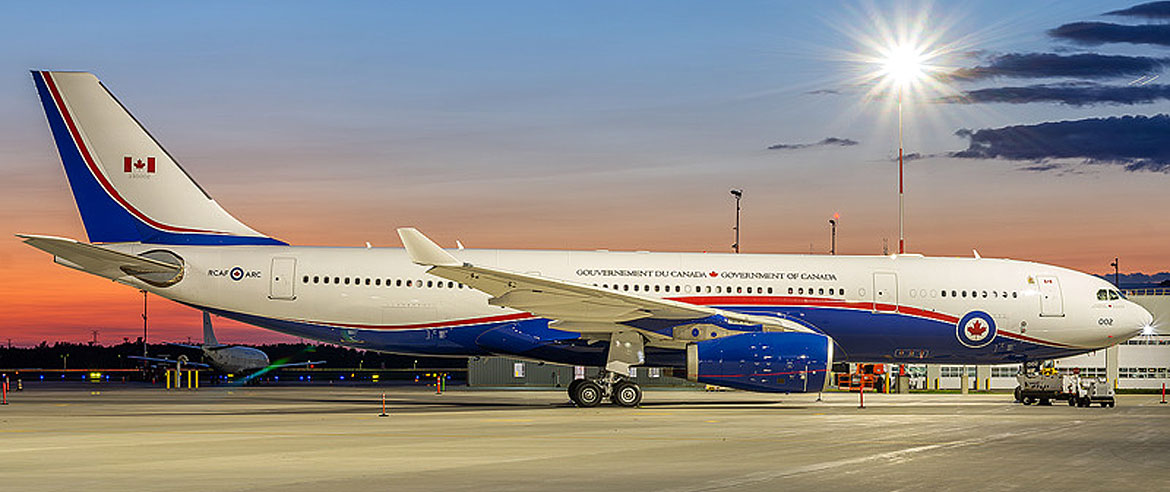
The first CC-330 Husky arriving in Ottawa (CYOW) on Aug. 31, 2023
The first of nine CC-330 Husky aircraft — the Royal Canadian Air Force (RCAF) version of the Airbus A330 MRTT, based on the civilian A330-200 — has arrived in Canada. The aircraft, 330002, landed at Ottawa International Airport (CYOW) on Aug. 31. The new CC-330 fleet will replace the RCAF’s current fleet of aging CC-150 Polaris aircraft in the strategic tanker transport capability (STTC) role.
While five aircraft were formerly used for commercial operations, four will be converted to the full MRTT configuration — alongside four brand-new A330 MRTTs — capable of troop and cargo transport, aeromedical evacuation, and air-to-air refueling. The initial CC-330 delivered to Canada (330002) will be utilized for secure transport of high-ranking government officials. This particular aircraft wears a white Canadian government livery, while the remaining eight jets will receive an operational grey livery.
skiesmag.com
While five aircraft were formerly used for commercial operations, four will be converted to the full MRTT configuration — alongside four brand-new A330 MRTTs — capable of troop and cargo transport, aeromedical evacuation, and air-to-air refueling. The initial CC-330 delivered to Canada (330002) will be utilized for secure transport of high-ranking government officials. This particular aircraft wears a white Canadian government livery, while the remaining eight jets will receive an operational grey livery.
skiesmag.com

From: Dave Salmon, Springfield, OR
Subject: Post Air Force Careers
Hi Tony,
I left the RAF in 2001 after 25 years, 07 Oct 2001 being my last official day, I moved to Oregon in August and remarried 29 September 2001. I had a few jobs during the first few years, firstly working for Sears in the warehouse during the Christmas season of 2001. In May of 2002 I started work at Monaco Coach as a System Tech, inspecting all the systems on new motor homes, locating and fixing any faults, anything from rewiring, making phone lines to sealing any leaks I found in the water and gas lines, unfortunately in May of 2003 I was laid off.
At the same time, I left Monaco, Nige Clewley was working for DynCorp in Muscat, contacted me about a job with DynCorp in Thumrait, Oman, I jumped at the chance to work with aircraft again. In July 2003 I arrived in Thumrait as a Freight Traffic Specialist, it was like a MAMs reunion, Keith Parker, Mike Maybery, John I’anson and Brian Harper were also at Thumrait. When Keith left in December 2003, Mike replaced Keith as the Superintendent and I became the Air Terminal Supervisor, acting Superintendent when Mike was away. My job was planning the aircraft loads, preparing the trim sheets, manifests, liaising with the Omani Air Force, as well as loading the aircraft. By 2007 after 4 years, as much as I loved the job, I knew it was time to return home and spend time with my wife Cindy.
Sept of 2007, I started working for Hynix making computer chips in a FAB, an air-controlled environment, but within a year I was laid off again. October of 2008, I began working for the Springfield School District in the warehouse, delivering food, mail courier, moving equipment and furniture around the district. In October 2021 my 3 coworkers wouldn’t get the Covid vaccine and were let go leaving me to run the warehouse for almost a month by myself. In October 2021 I became the Lead Inventory Specialist, I put my retirement on hold for a year so that I could train the new team. In June of this year, I finally retired after almost 15 years in the school district warehouse. Since June, Cindy and I have spent a week on the Oregon coast, a week in California, attended my daughter’s wedding in Wales and spent a week in Rome, retirement is great.
Rgds
Dave Salmon
Subject: Post Air Force Careers
Hi Tony,
I left the RAF in 2001 after 25 years, 07 Oct 2001 being my last official day, I moved to Oregon in August and remarried 29 September 2001. I had a few jobs during the first few years, firstly working for Sears in the warehouse during the Christmas season of 2001. In May of 2002 I started work at Monaco Coach as a System Tech, inspecting all the systems on new motor homes, locating and fixing any faults, anything from rewiring, making phone lines to sealing any leaks I found in the water and gas lines, unfortunately in May of 2003 I was laid off.
At the same time, I left Monaco, Nige Clewley was working for DynCorp in Muscat, contacted me about a job with DynCorp in Thumrait, Oman, I jumped at the chance to work with aircraft again. In July 2003 I arrived in Thumrait as a Freight Traffic Specialist, it was like a MAMs reunion, Keith Parker, Mike Maybery, John I’anson and Brian Harper were also at Thumrait. When Keith left in December 2003, Mike replaced Keith as the Superintendent and I became the Air Terminal Supervisor, acting Superintendent when Mike was away. My job was planning the aircraft loads, preparing the trim sheets, manifests, liaising with the Omani Air Force, as well as loading the aircraft. By 2007 after 4 years, as much as I loved the job, I knew it was time to return home and spend time with my wife Cindy.
Sept of 2007, I started working for Hynix making computer chips in a FAB, an air-controlled environment, but within a year I was laid off again. October of 2008, I began working for the Springfield School District in the warehouse, delivering food, mail courier, moving equipment and furniture around the district. In October 2021 my 3 coworkers wouldn’t get the Covid vaccine and were let go leaving me to run the warehouse for almost a month by myself. In October 2021 I became the Lead Inventory Specialist, I put my retirement on hold for a year so that I could train the new team. In June of this year, I finally retired after almost 15 years in the school district warehouse. Since June, Cindy and I have spent a week on the Oregon coast, a week in California, attended my daughter’s wedding in Wales and spent a week in Rome, retirement is great.
Rgds
Dave Salmon

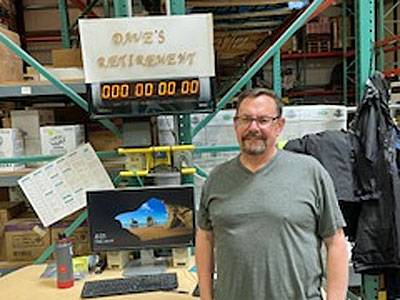


From: Bill Franklin, Yapton, Sussex
Subject: Post Air Force Career
Hi Tony,
My post RAF employment began at Luton airport in March 1988 with Reed Aviation, the company was an aircraft handling company whose bread and butter work was handling Royal Mail night flights for the Post Office. The flights operated five nights a week Monday to the early hours of Saturday morning and came from all corners of the UK as well as Dublin. Exeter, Cardiff, Belfast, Glasgow, Edinburgh, Perth, Newcastle and Norwich. Loganair was the main contractor and provided Fokker F27, Shorts 330 and 360 aircraft for the service, all of them being re-roled to carry mail bags at night from their daytime passenger work. The ground handling team would meet the aircraft, chock them, apply ground power and unlash the cargo nets allowing the Post Office staff to unload the bags of mail.
The first arrivals were around midnight and by about 03.00 all of the aircraft had been reloaded with bags for their respective destinations. The flight from Dublin was operated by a Ryanair Embraer E110 which was on a quick turnaround and departed to Dublin via Manchester. The Post Office had a pair of aircraft based at Luton, a Channel Express HP Herald which operated via East Midlands and a Lockheed L188 Electra which flew in EMS colours to Brussels. These both operated in the early evening before our main rush and returned afterwards.
Early in 1989 I moved to Air Foyle Handling a joint company set up by TNT and Chris Foyle to provide handling services for TNT's new BAe146QT freighters. Again it was primarily a night operation and we would handle around five departures or turnrounds a night again five nights a week. Over time we would see all of the 146 TNT fleet with visits from the aircraft registered in Sweden, Germany, Hungary, France, Italy, Spain and of course all of the UK registered aircraft.
The UK aircraft and sometimes the French or Italian were used to do racehorse flights at weekends during the racing seasons and a couple of times a year they did day old chicks to eastern Europe.
TNT decided to move to Stansted and the Luton handling team were made redundant, I eventually found a dispatcher job with Servisair and spent several years with them before making a move to the ill-fated Debonair Airways, who only survived about another year. The Servisair job as a dispatcher could be intense at times with overseeing two or three aircraft at a time as well as doing the trim sheets for them and engine starts on the pushbacks.
Found a security job in London with a company who provided officers to Goldman Sachs. Great job but over the years they cut back on the perks, fruit baskets on all of the office floors, contractors Christmas party, Christmas lunch for the on duty security teams etc. Worked in two of their office blocks but in 2013 they moved out of one and because they were overstaffed and offered a redundancy package which I took as it coincided with my 65 years old retirement date.
Regards,
Bill
Subject: Post Air Force Career
Hi Tony,
My post RAF employment began at Luton airport in March 1988 with Reed Aviation, the company was an aircraft handling company whose bread and butter work was handling Royal Mail night flights for the Post Office. The flights operated five nights a week Monday to the early hours of Saturday morning and came from all corners of the UK as well as Dublin. Exeter, Cardiff, Belfast, Glasgow, Edinburgh, Perth, Newcastle and Norwich. Loganair was the main contractor and provided Fokker F27, Shorts 330 and 360 aircraft for the service, all of them being re-roled to carry mail bags at night from their daytime passenger work. The ground handling team would meet the aircraft, chock them, apply ground power and unlash the cargo nets allowing the Post Office staff to unload the bags of mail.
The first arrivals were around midnight and by about 03.00 all of the aircraft had been reloaded with bags for their respective destinations. The flight from Dublin was operated by a Ryanair Embraer E110 which was on a quick turnaround and departed to Dublin via Manchester. The Post Office had a pair of aircraft based at Luton, a Channel Express HP Herald which operated via East Midlands and a Lockheed L188 Electra which flew in EMS colours to Brussels. These both operated in the early evening before our main rush and returned afterwards.
Early in 1989 I moved to Air Foyle Handling a joint company set up by TNT and Chris Foyle to provide handling services for TNT's new BAe146QT freighters. Again it was primarily a night operation and we would handle around five departures or turnrounds a night again five nights a week. Over time we would see all of the 146 TNT fleet with visits from the aircraft registered in Sweden, Germany, Hungary, France, Italy, Spain and of course all of the UK registered aircraft.
The UK aircraft and sometimes the French or Italian were used to do racehorse flights at weekends during the racing seasons and a couple of times a year they did day old chicks to eastern Europe.
TNT decided to move to Stansted and the Luton handling team were made redundant, I eventually found a dispatcher job with Servisair and spent several years with them before making a move to the ill-fated Debonair Airways, who only survived about another year. The Servisair job as a dispatcher could be intense at times with overseeing two or three aircraft at a time as well as doing the trim sheets for them and engine starts on the pushbacks.
Found a security job in London with a company who provided officers to Goldman Sachs. Great job but over the years they cut back on the perks, fruit baskets on all of the office floors, contractors Christmas party, Christmas lunch for the on duty security teams etc. Worked in two of their office blocks but in 2013 they moved out of one and because they were overstaffed and offered a redundancy package which I took as it coincided with my 65 years old retirement date.
Regards,
Bill


From: Paul Thornton, Blyth, Northumberland
Subject: Post Air Force Careers
Hi Tony
Having left in April 2017, I spent 2 months relaxing, before getting a job. Luckily I applied to Swissport to start as an aircraft despatcher. Today, it's more of a turnaround co-ordinator than anything else. I handle all airlines at Newcastle, except for Jet2 (self handle) and Emirates. I will probably spend another 18 months at NCL, before retirement.
Cheers, Paul
Subject: Post Air Force Careers
Hi Tony
Having left in April 2017, I spent 2 months relaxing, before getting a job. Luckily I applied to Swissport to start as an aircraft despatcher. Today, it's more of a turnaround co-ordinator than anything else. I handle all airlines at Newcastle, except for Jet2 (self handle) and Emirates. I will probably spend another 18 months at NCL, before retirement.
Cheers, Paul
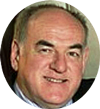

From: David Powell, Princes Risborough, Bucks
Subject: Life after F1250 David Powell the short version
Dear Tony,
Running out of interesting RAF appointments I handed in my F1250 ID card as a Wing Commander in 1993 and turned to the civilian sector for some new challenges. My Service finale was a bit of a flurry, with only 2 weeks terminal/resettlement leave – my choice, as my redundancy package would be reduced for every day over 50!
Plan A was 2 months ‘off’ to work out what Sue and I should to do with the rest of my life, well the first few years anyway. That went out of the window after 48 hours with a phone call from a chum from HQ Strike days basically proposing involvement in a NATO study which was right up my street. One thing led to another with various consultant and sub-contractor daily rate engagements which included Replacement Nimrod contract bid team, developing the computer screen forward unit supply procedure for the BAE Systems RAAF Hawk project etc. Even a couple of jobs for the MoD!
I also got involved with s small team of bandits trawling (not that successfully) the SME (Small and Medium Business) ponds for business development coaching. This involved a range of businesses and projects including middle management coaching for Vodaphone; preparing strategic marketing plans; contract bid preparation for third parties, and preparing management development material for use on internet and intranets.
In 2002, I added university business school associate lecturer to the CV, through responding to an ad in the local paper for someone to cover a strategic management course. The business school then became a significant area of activity. As an ex-logistician, one’s Service customers had come from many specializations. A common factor was that by and large they didn’t have a clue as what logisticians actually do. So we have to learn the various foibles and technical language of the many disciplines we may be called upon to support. Consequently, I finished up lecturing on a wide variety of subjects, at graduate and post-graduate level, related to operations and business management both at Bucks New University and Kingston University. I also found himself giving a seminar at the local business school while on holiday in the Gambia! The Associate Lecturing finally ended in 2015 supervising a Masters Dissertation of grain distribution in Kazakhstan.
Subject: Life after F1250 David Powell the short version
Dear Tony,
Running out of interesting RAF appointments I handed in my F1250 ID card as a Wing Commander in 1993 and turned to the civilian sector for some new challenges. My Service finale was a bit of a flurry, with only 2 weeks terminal/resettlement leave – my choice, as my redundancy package would be reduced for every day over 50!
Plan A was 2 months ‘off’ to work out what Sue and I should to do with the rest of my life, well the first few years anyway. That went out of the window after 48 hours with a phone call from a chum from HQ Strike days basically proposing involvement in a NATO study which was right up my street. One thing led to another with various consultant and sub-contractor daily rate engagements which included Replacement Nimrod contract bid team, developing the computer screen forward unit supply procedure for the BAE Systems RAAF Hawk project etc. Even a couple of jobs for the MoD!
I also got involved with s small team of bandits trawling (not that successfully) the SME (Small and Medium Business) ponds for business development coaching. This involved a range of businesses and projects including middle management coaching for Vodaphone; preparing strategic marketing plans; contract bid preparation for third parties, and preparing management development material for use on internet and intranets.
In 2002, I added university business school associate lecturer to the CV, through responding to an ad in the local paper for someone to cover a strategic management course. The business school then became a significant area of activity. As an ex-logistician, one’s Service customers had come from many specializations. A common factor was that by and large they didn’t have a clue as what logisticians actually do. So we have to learn the various foibles and technical language of the many disciplines we may be called upon to support. Consequently, I finished up lecturing on a wide variety of subjects, at graduate and post-graduate level, related to operations and business management both at Bucks New University and Kingston University. I also found himself giving a seminar at the local business school while on holiday in the Gambia! The Associate Lecturing finally ended in 2015 supervising a Masters Dissertation of grain distribution in Kazakhstan.
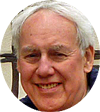
Meanwhile, back in 1993 I had become, by a chance meeting, involved with the one job I had wanted to do all along. Namely narrating, script writing and, more recently, sound editing commercial videos, mainly on the modern railway scene. This including narrating and editing Transport Video Publishing’s bi-monthly video magazine Video Track. The voice-over thing was something I had always wanted to do. But, when I raised this dream at a pre-RAF retirement resettlement thing, I was told not to waste my time as that the voice-over narration world was full of out of work actors. I will be recording and sound editing Issue 212 of Video Track next week!
I have also been involved in another fun money raising activity namely assessing university courses for accreditation by the professional institute the Association for Project Management. This was a consequence of teaching project management at Kingston University (a gig inherited from a chum in the Open University Systems Society who wanted to go off and write a book). This led to being co-opted on to a Project Management (APM) working group developing procedures for accrediting university courses and modules to be endorsed by the APM. These processes were introduced in 2009 since when I have been one of the APM’s team of assessors. Currently, there are two just arrived application packs in the in-tray waiting for my attention.
At the same, time on the hobby front, I have been involved with railway modelling and can usually be found in the show control office of the Annual National Model Railway Exhibition at the NEC in November. And, this has led to a one-man campaign for adopting the pastime of railway modelling as a strategy to avoid dementia.
In sum, on reflection, I have become someone with a little bit of knowledge about a lot rather that a specialist of a little. Nearly all my activities have come through contacts. And, my basic requirements have always been: will it be fun and will it involve working with nice people.
Stay safe, have fun.
David Powell OBE, BA(Hons), FAPM, MCMI, MEI, MILT
And best of all, F Team UKMAMS 1967-69 RAF Abingdon
I have also been involved in another fun money raising activity namely assessing university courses for accreditation by the professional institute the Association for Project Management. This was a consequence of teaching project management at Kingston University (a gig inherited from a chum in the Open University Systems Society who wanted to go off and write a book). This led to being co-opted on to a Project Management (APM) working group developing procedures for accrediting university courses and modules to be endorsed by the APM. These processes were introduced in 2009 since when I have been one of the APM’s team of assessors. Currently, there are two just arrived application packs in the in-tray waiting for my attention.
At the same, time on the hobby front, I have been involved with railway modelling and can usually be found in the show control office of the Annual National Model Railway Exhibition at the NEC in November. And, this has led to a one-man campaign for adopting the pastime of railway modelling as a strategy to avoid dementia.
In sum, on reflection, I have become someone with a little bit of knowledge about a lot rather that a specialist of a little. Nearly all my activities have come through contacts. And, my basic requirements have always been: will it be fun and will it involve working with nice people.
Stay safe, have fun.
David Powell OBE, BA(Hons), FAPM, MCMI, MEI, MILT
And best of all, F Team UKMAMS 1967-69 RAF Abingdon
A new member who has joined us recently:
Welcome to the OBA!
Peter Gaskin, Brize Norton, Oxon

Veteran ID cards: First veterans receive cards

From: Ian Envis, Rustington, West Sussex
Subject: Mike Perks's Final Journey
The following are the details of Mike Perks's funeral:
Church Service at 1200 hrs on Thursday 12 October, 2023 at St Marys Church, Church Gate, Lutterworth, LE17 4AN
(Final committal at local crematorium is for family only.)
The Wake will commence at approximately 1400 hrs at The Wycliffe Rooms, George St, Masonic Hall, Lutterworth, LE17 4ED
No flowers please, family only. Donations to charity (details TBA).
Stories about Mike - Jan has asked that any stories/funnies regarding Mike be forwarded/brought on the day - she intends to prepare a history for the Grandchildren.
SIncerely,
Ian
Subject: Mike Perks's Final Journey
The following are the details of Mike Perks's funeral:
Church Service at 1200 hrs on Thursday 12 October, 2023 at St Marys Church, Church Gate, Lutterworth, LE17 4AN
(Final committal at local crematorium is for family only.)
The Wake will commence at approximately 1400 hrs at The Wycliffe Rooms, George St, Masonic Hall, Lutterworth, LE17 4ED
No flowers please, family only. Donations to charity (details TBA).
Stories about Mike - Jan has asked that any stories/funnies regarding Mike be forwarded/brought on the day - she intends to prepare a history for the Grandchildren.
SIncerely,
Ian

This Newsletter is Dedicated
to the Memories of
Mike Perks (RAF)
Iain Mummé (RAF)
Neil Cooper (RAAF)
Barbara, wife of Neil Middleton (RAF)
to the Memories of
Mike Perks (RAF)
Iain Mummé (RAF)
Neil Cooper (RAAF)
Barbara, wife of Neil Middleton (RAF)
Tony Gale
ukmamsoba@gmail.com
ukmamsoba@gmail.com







